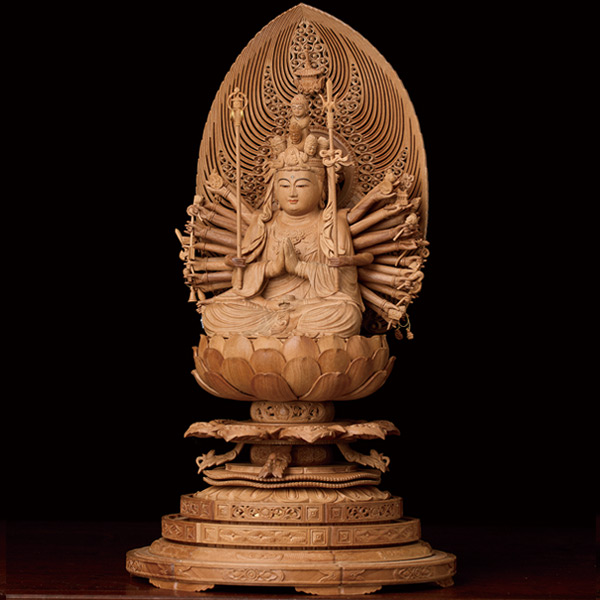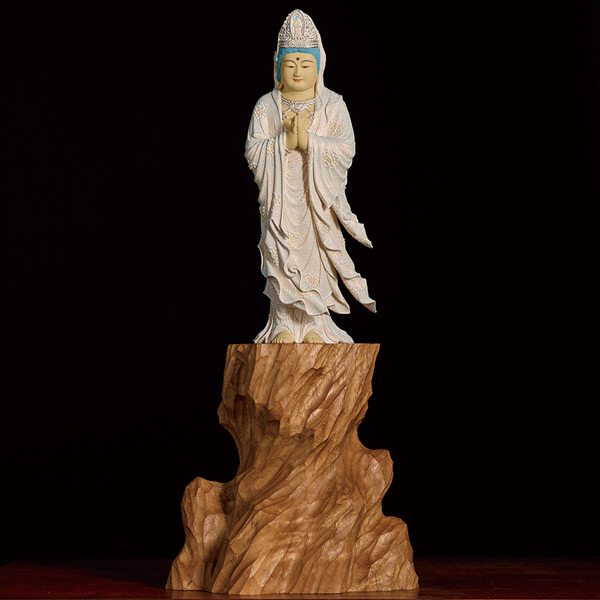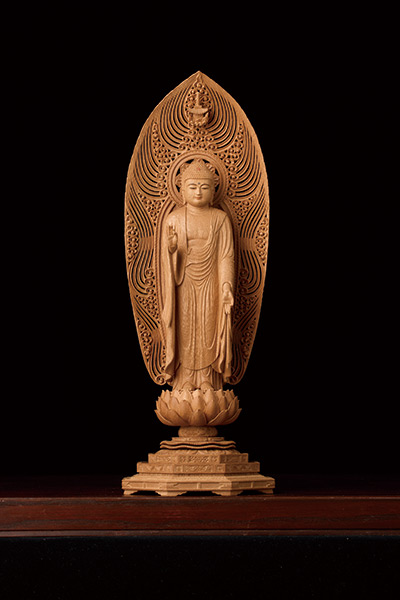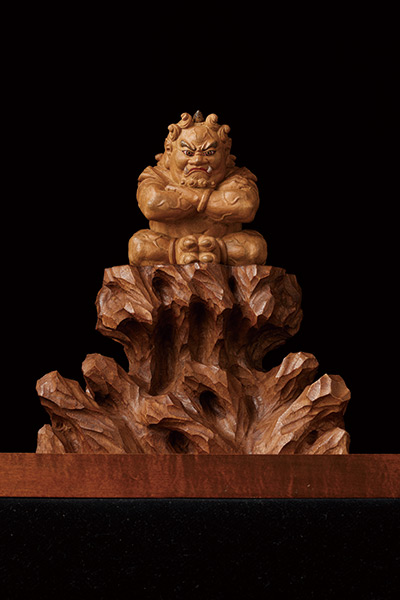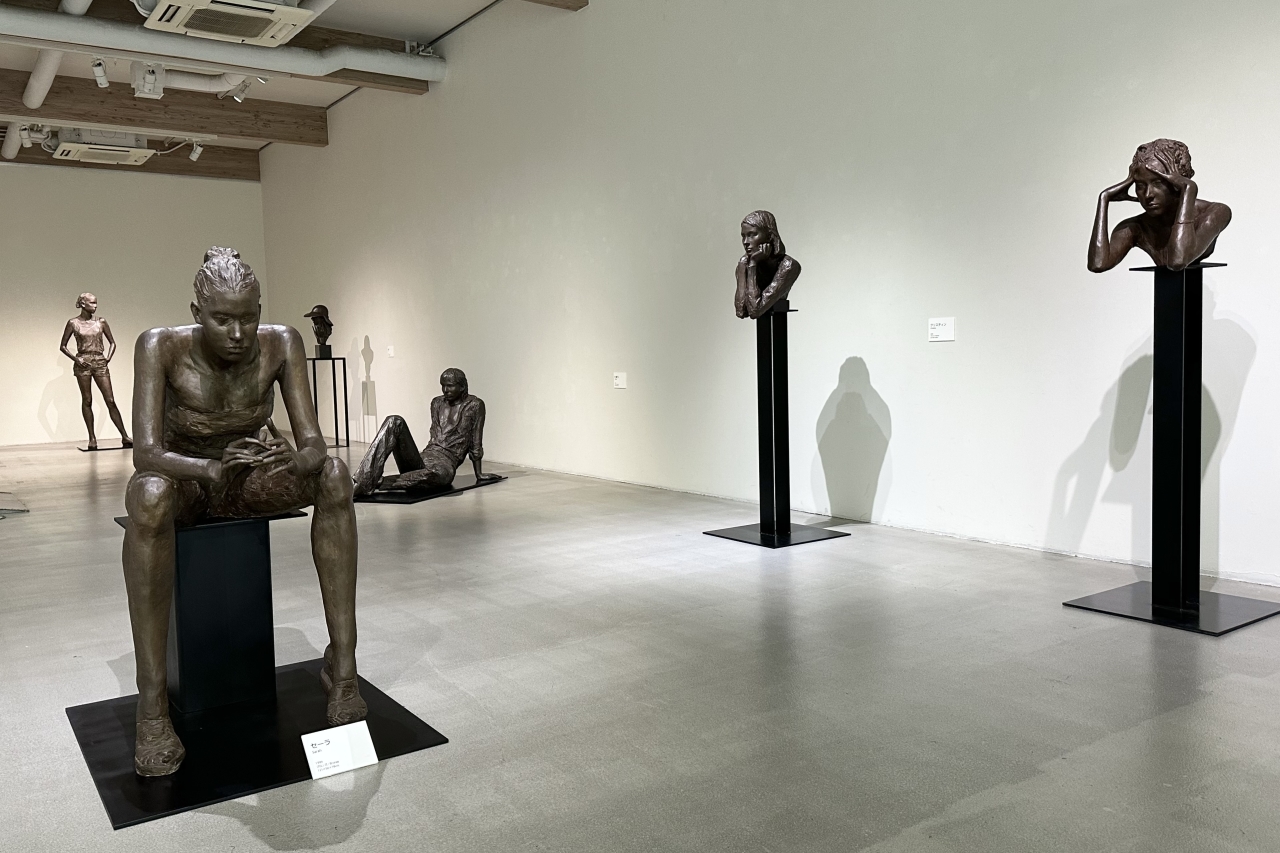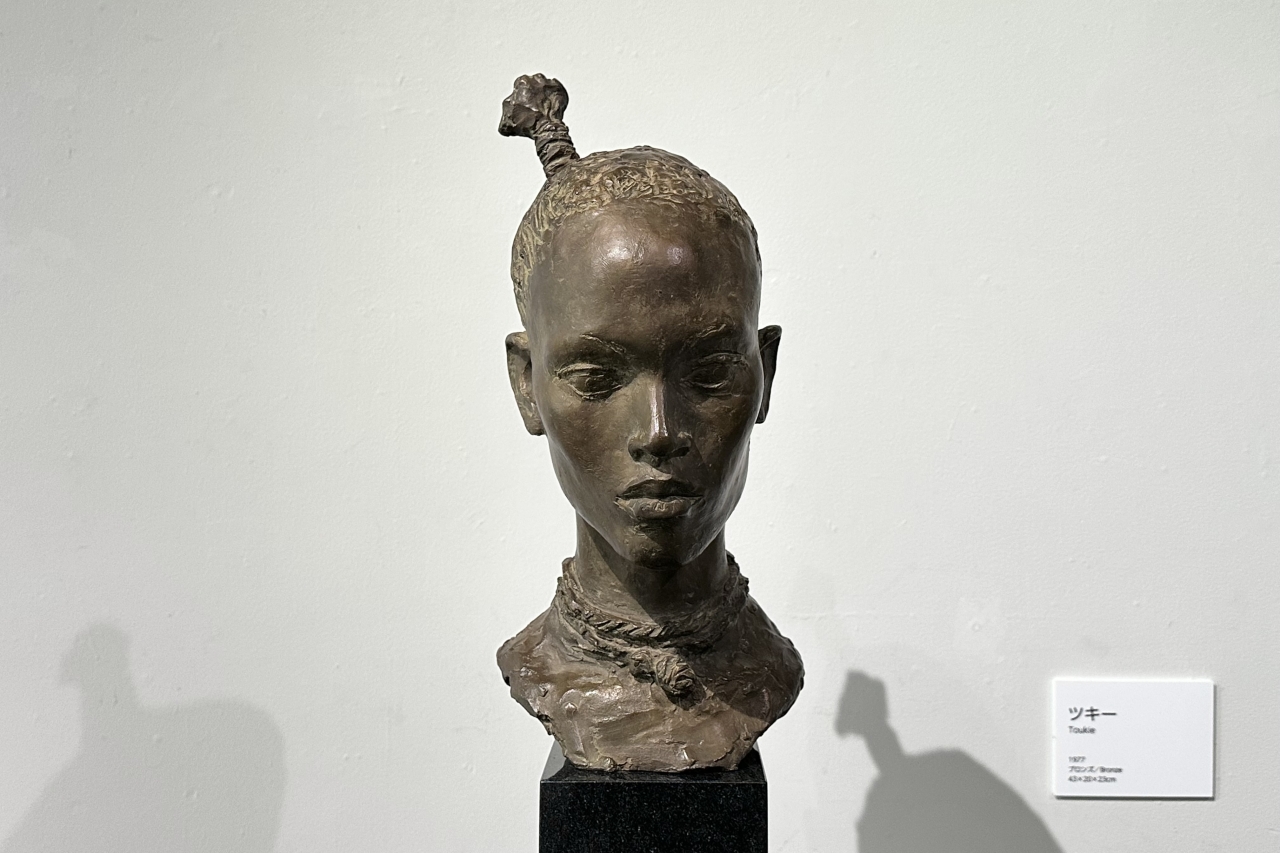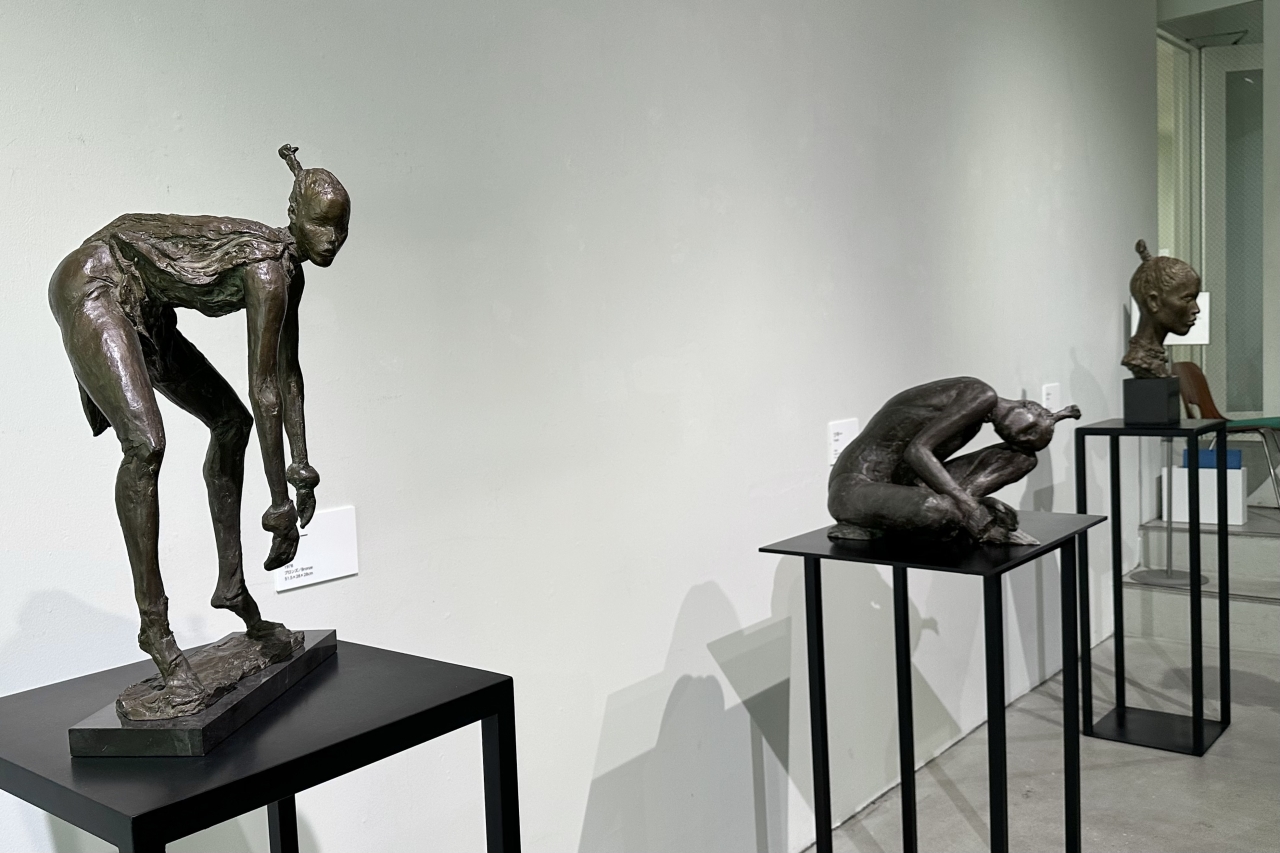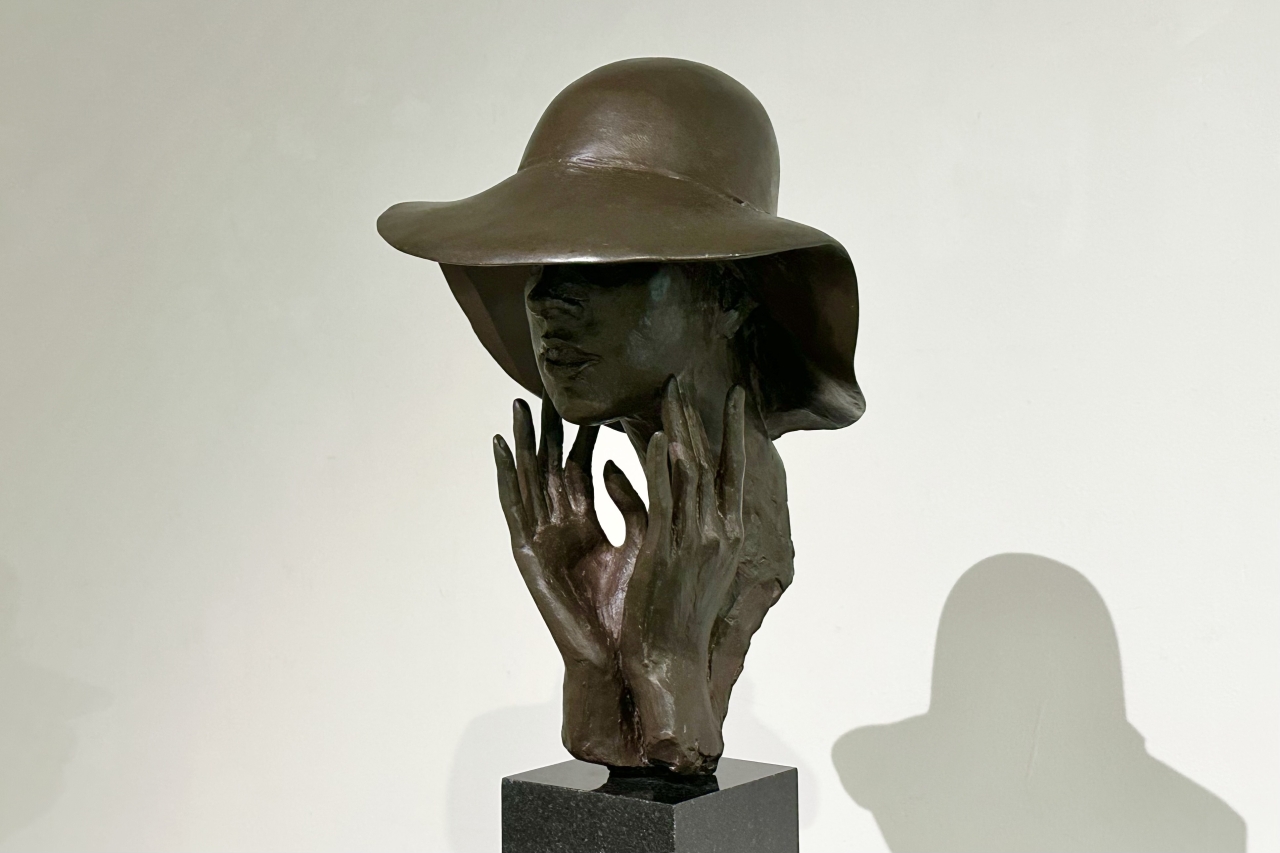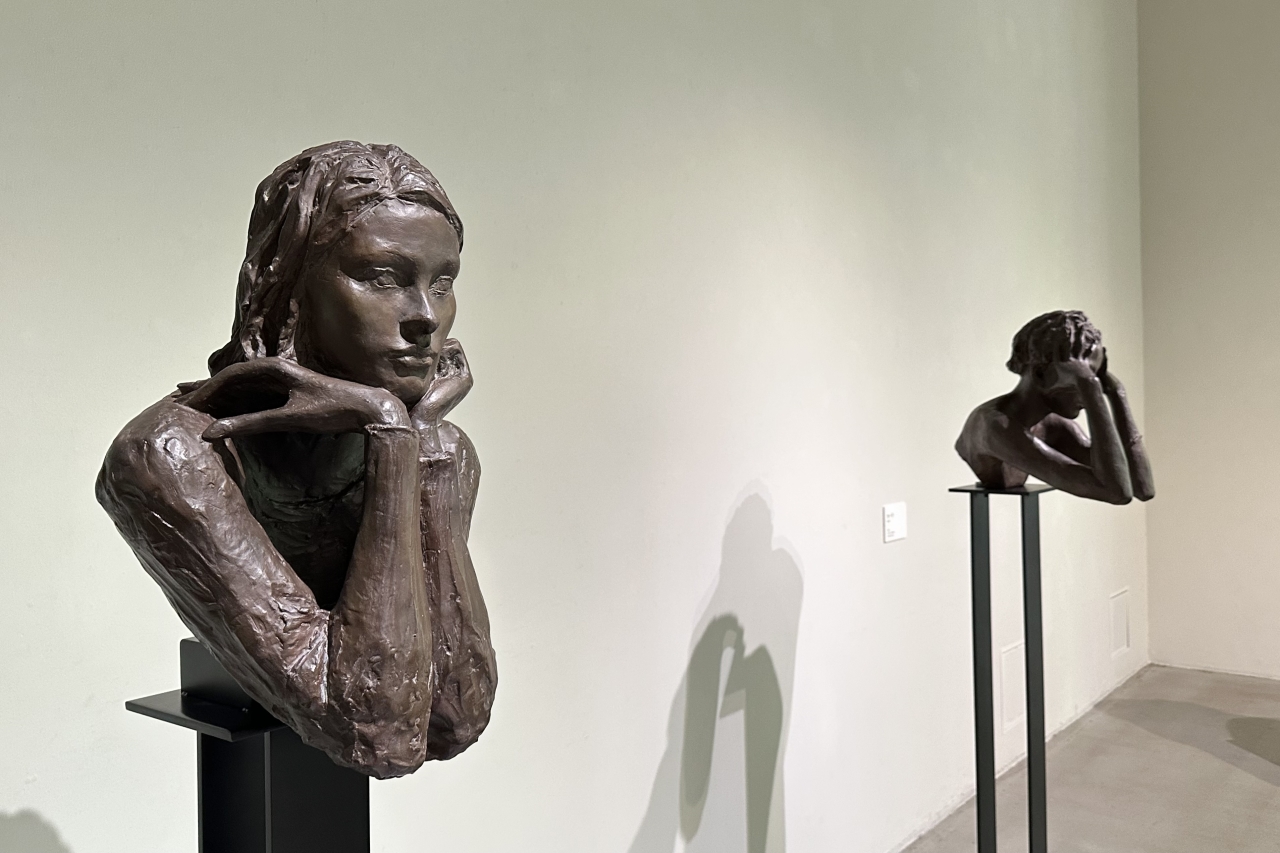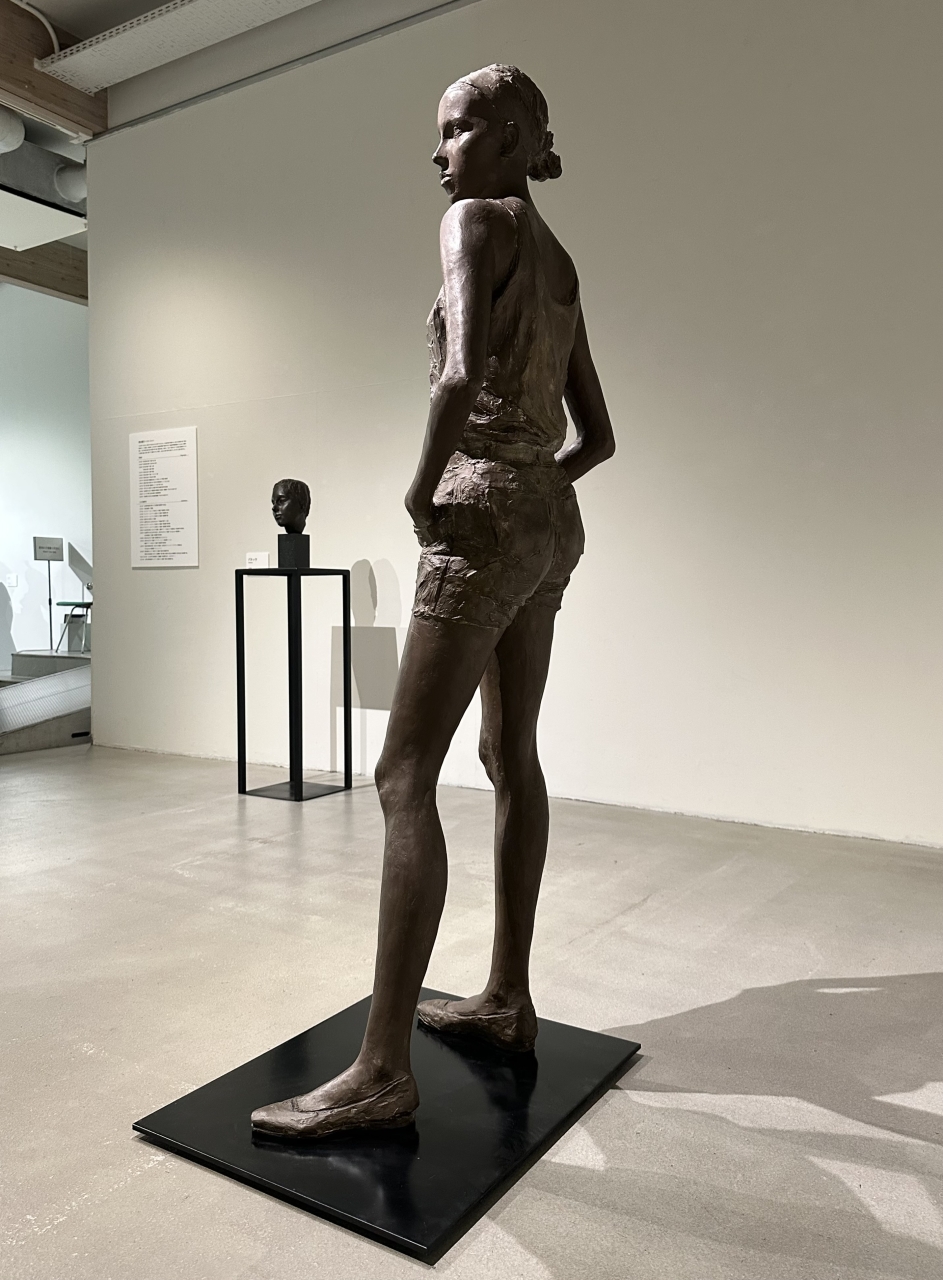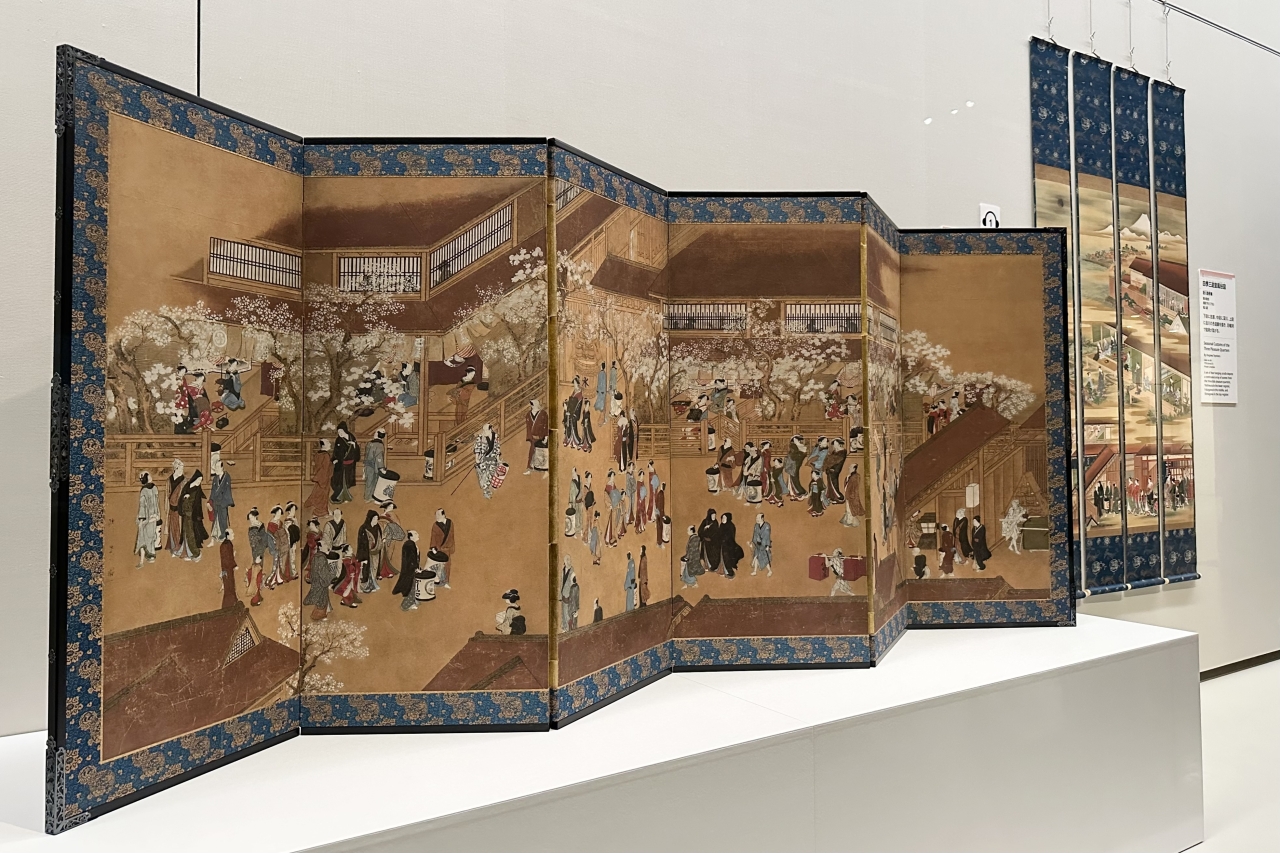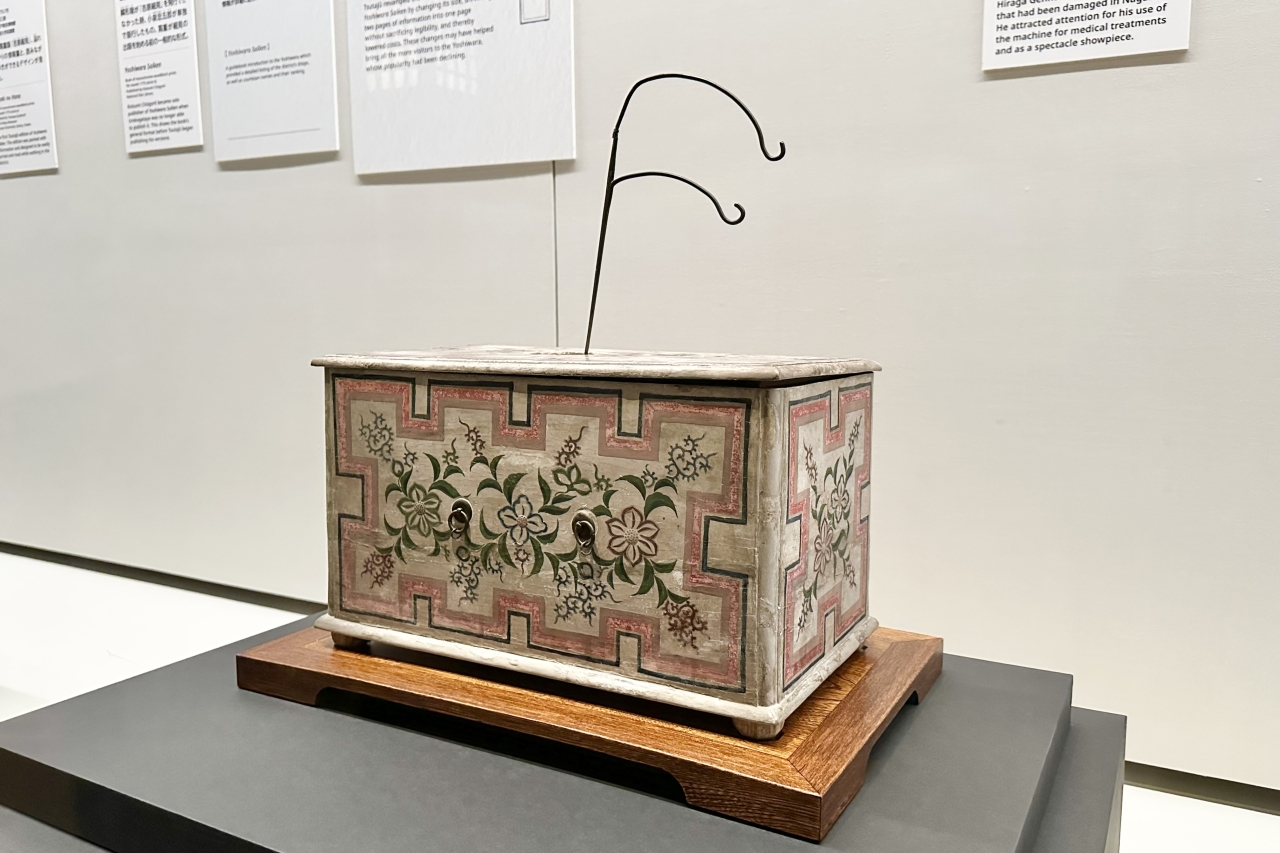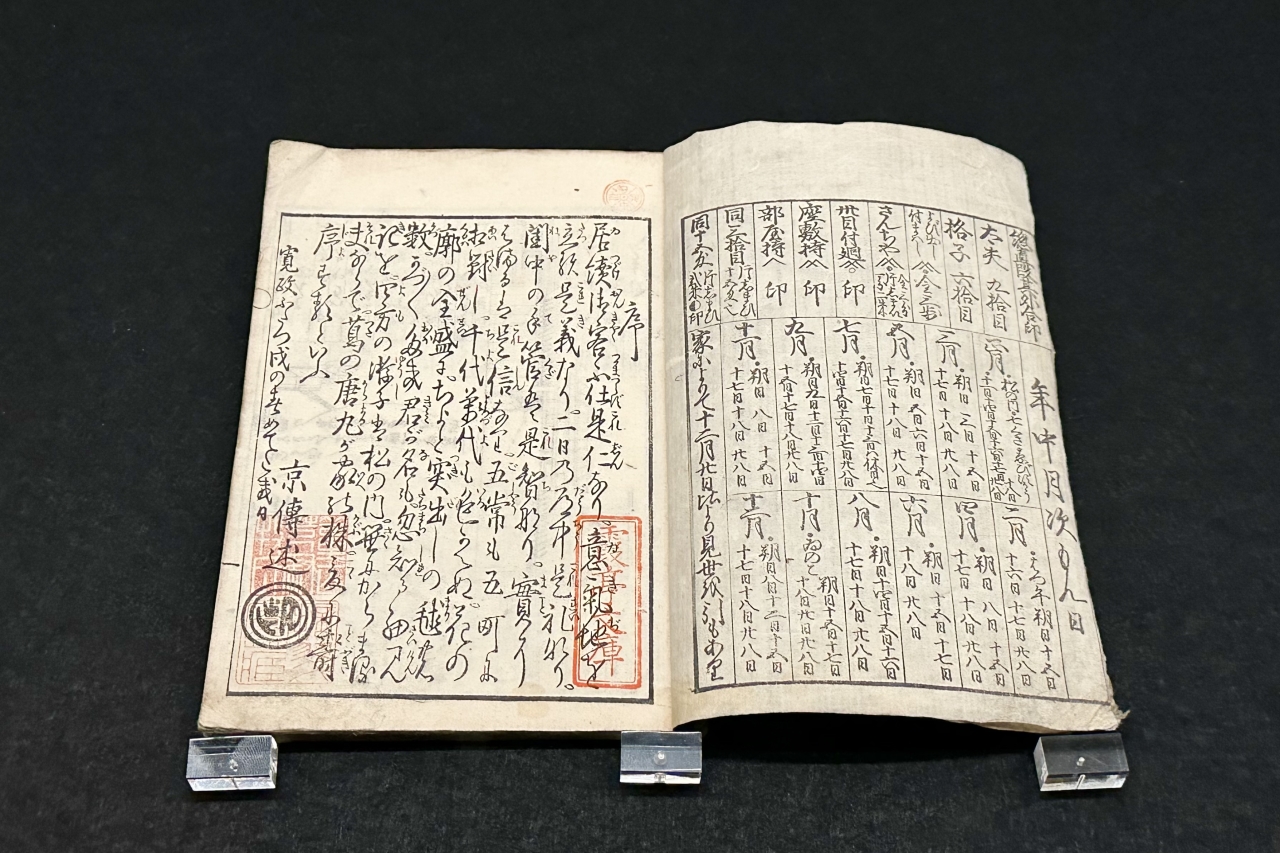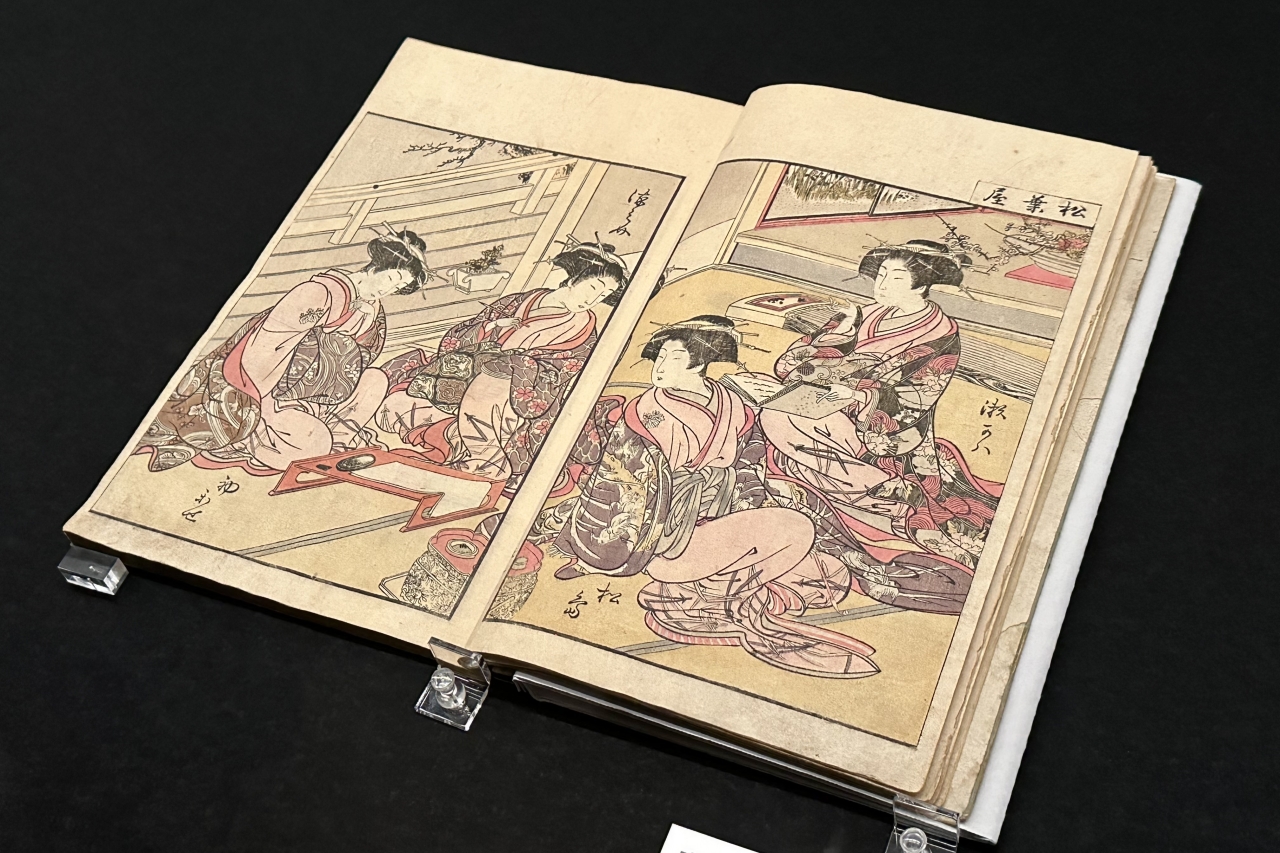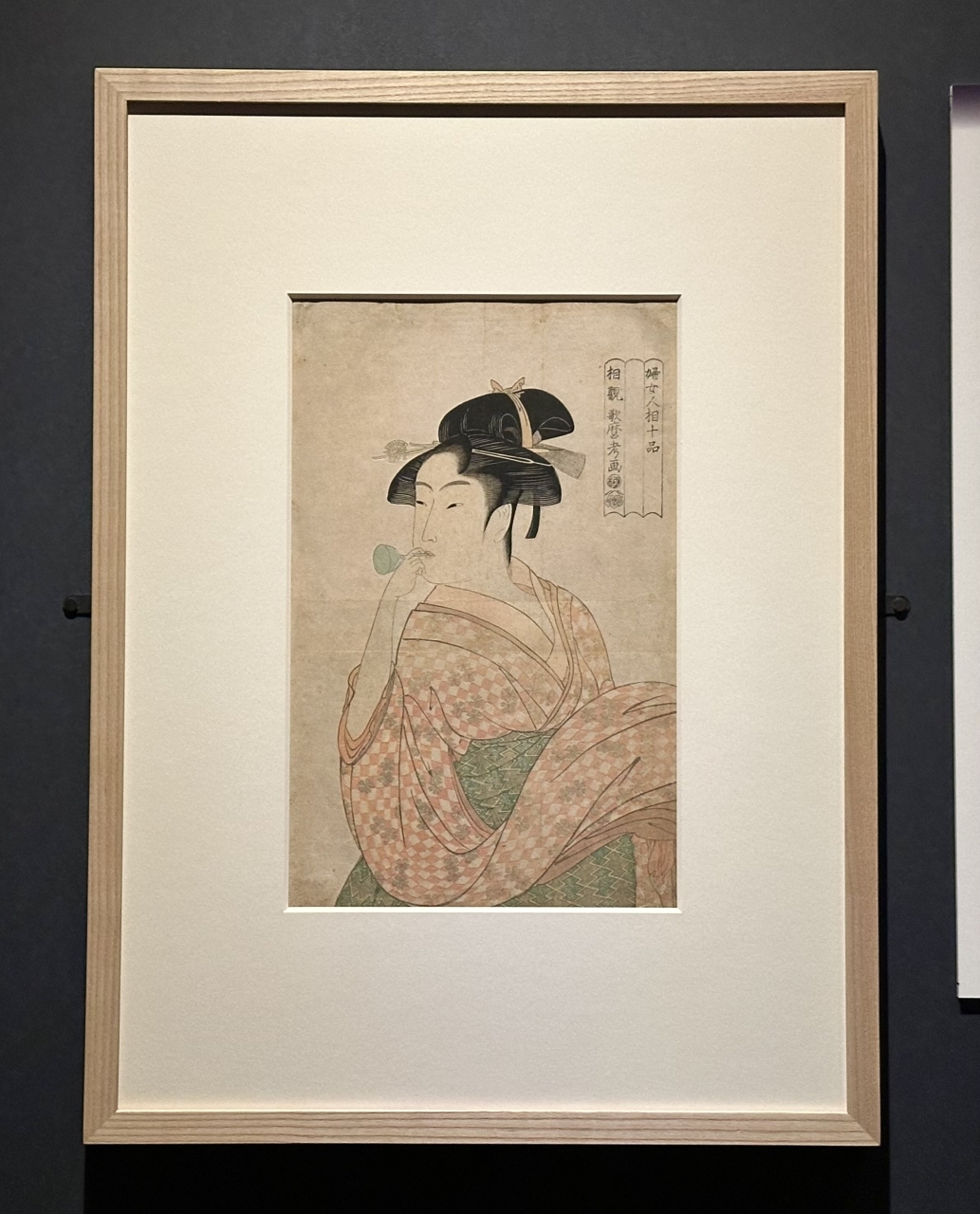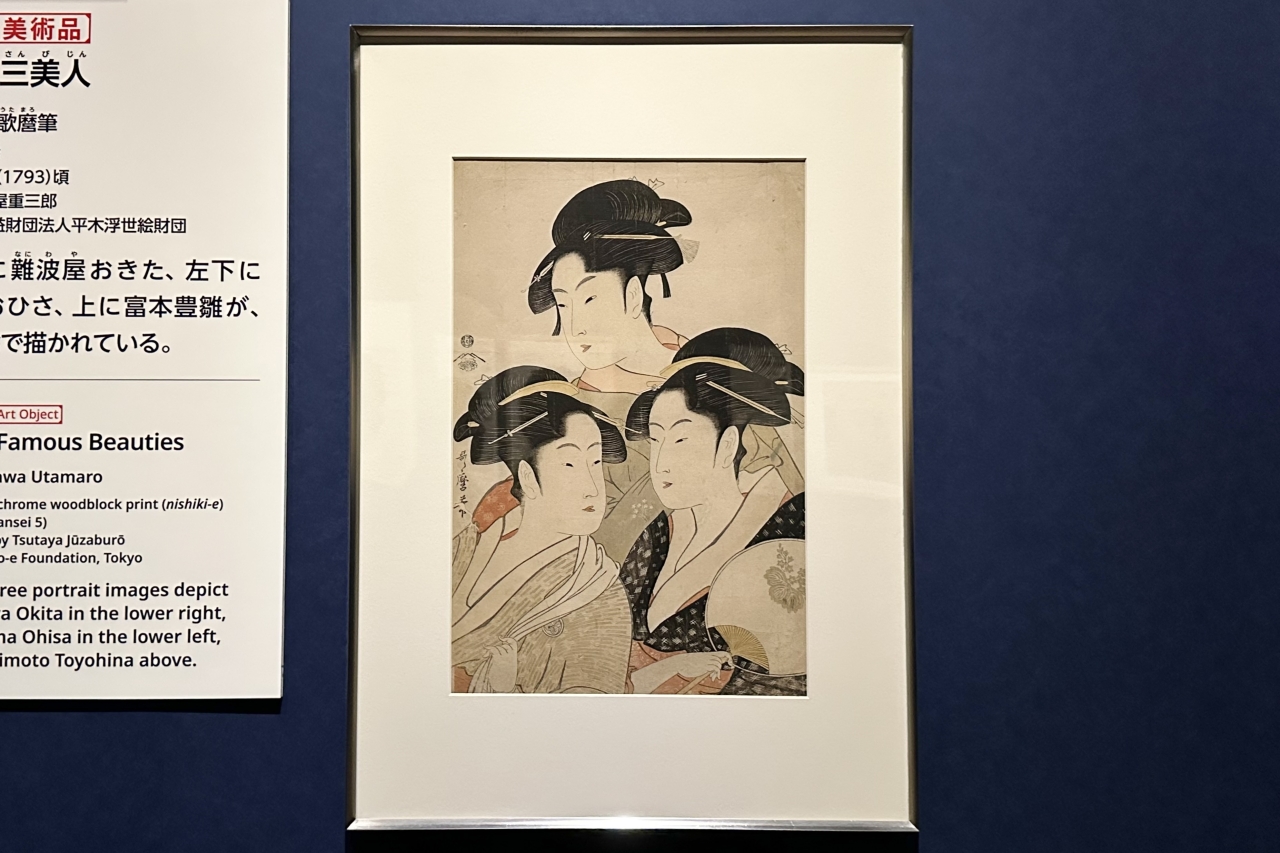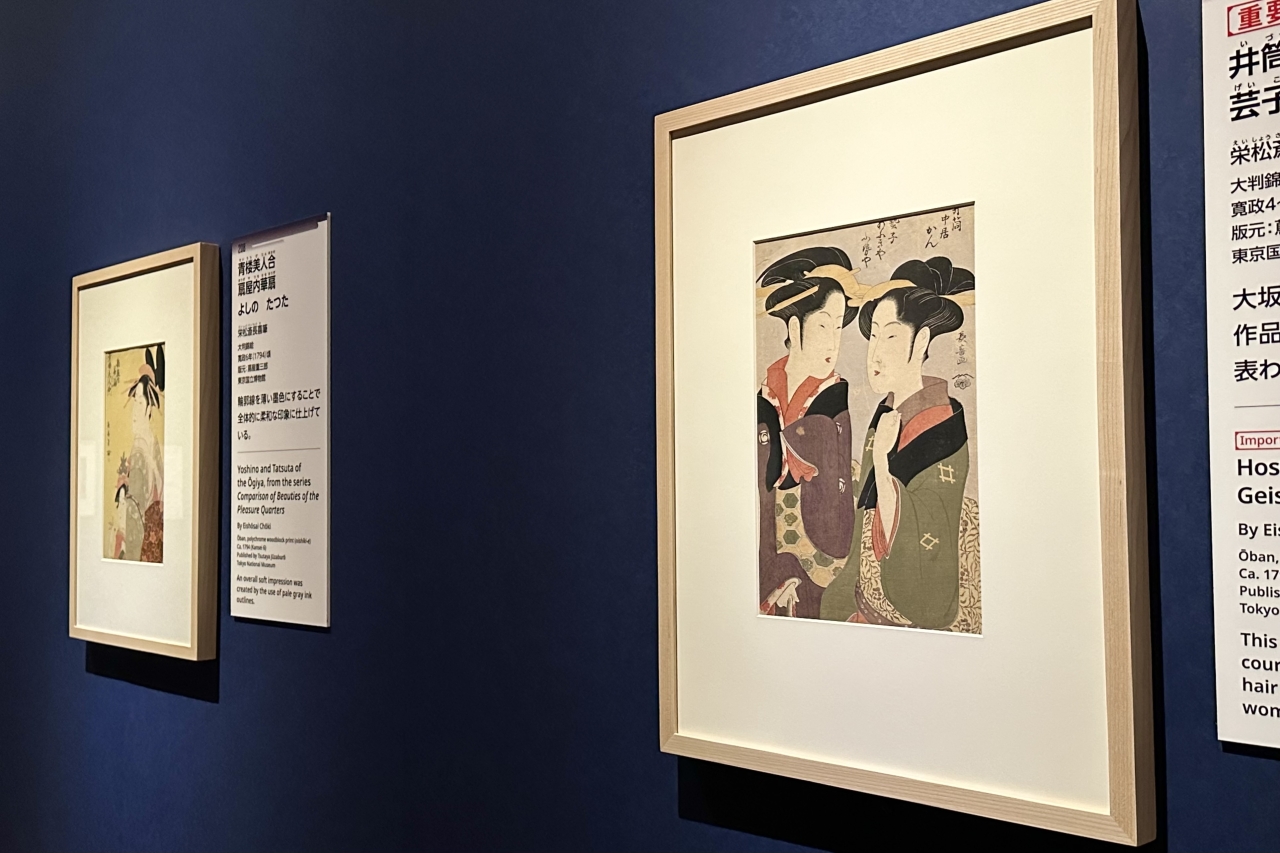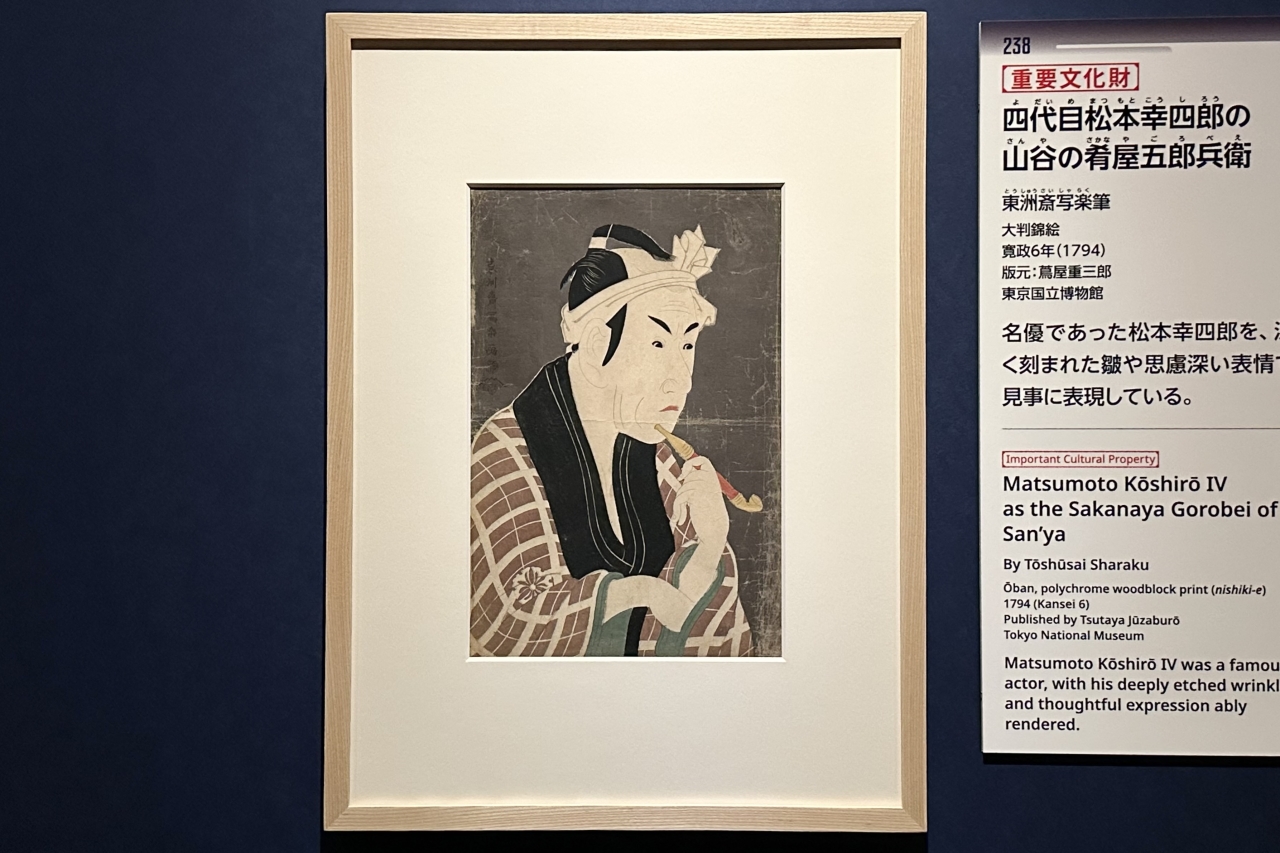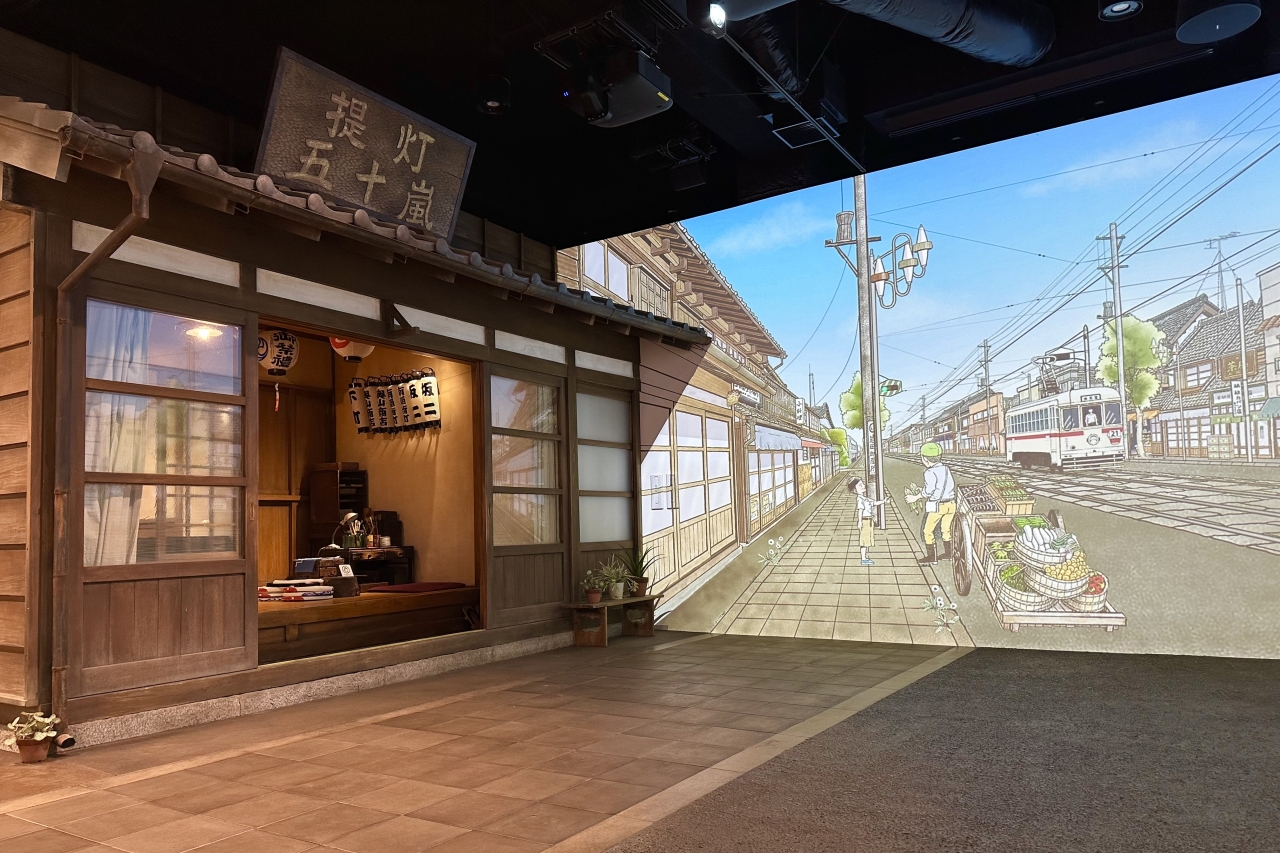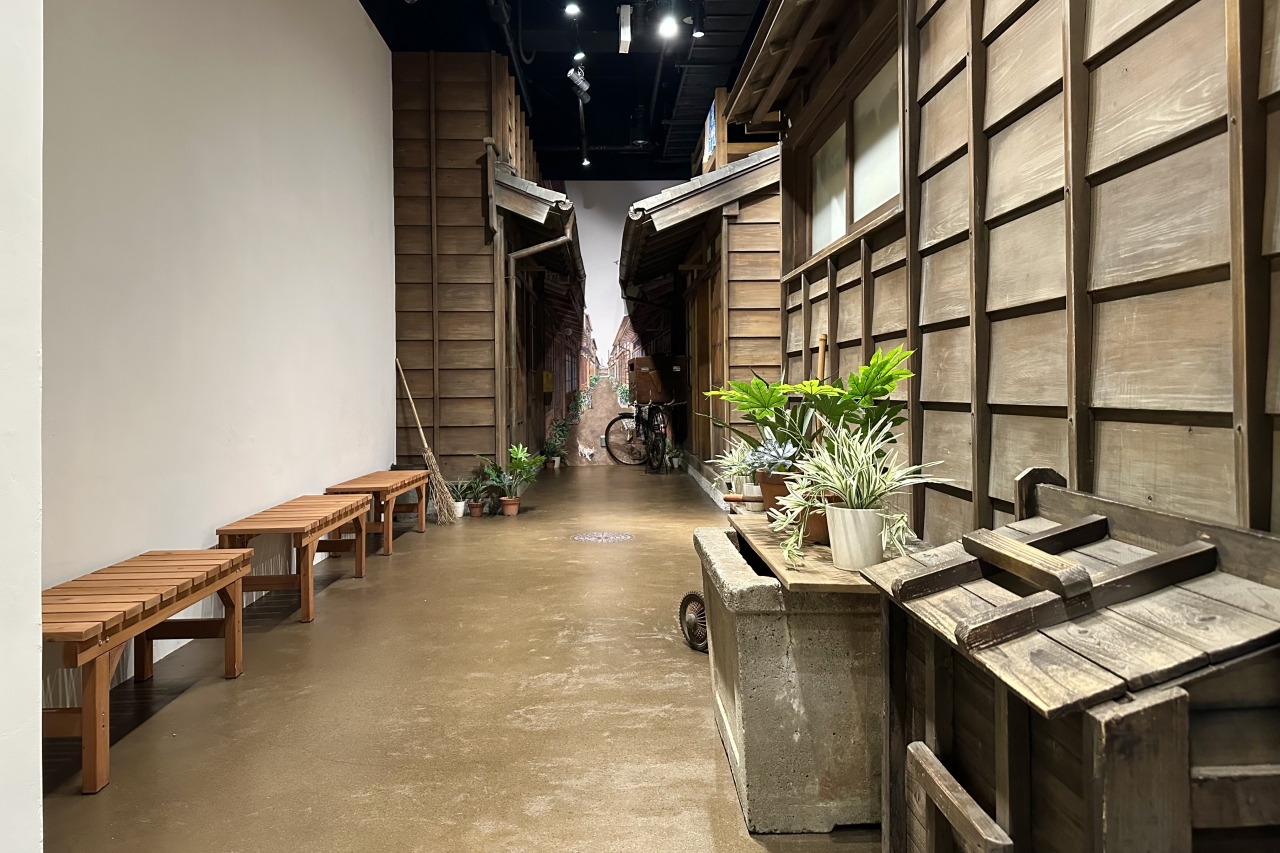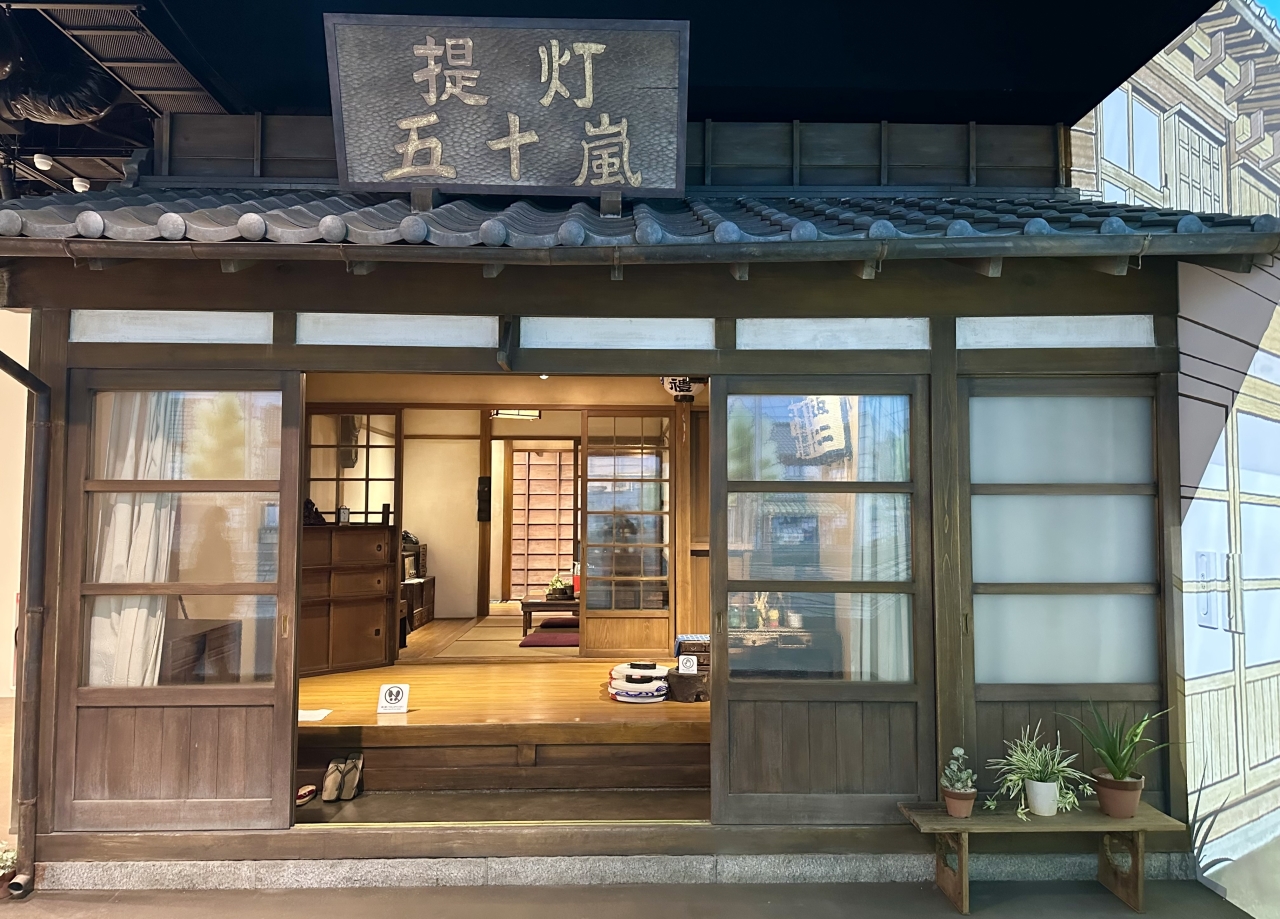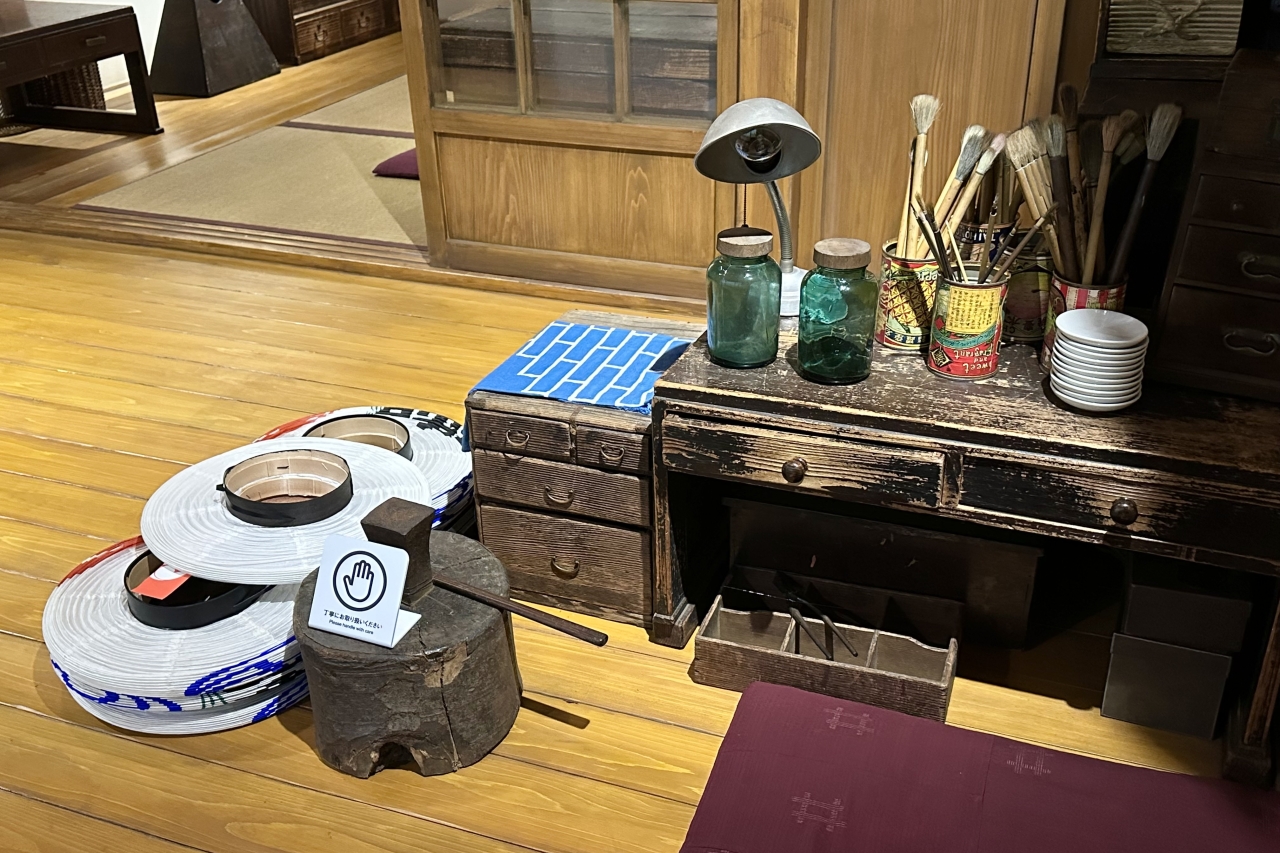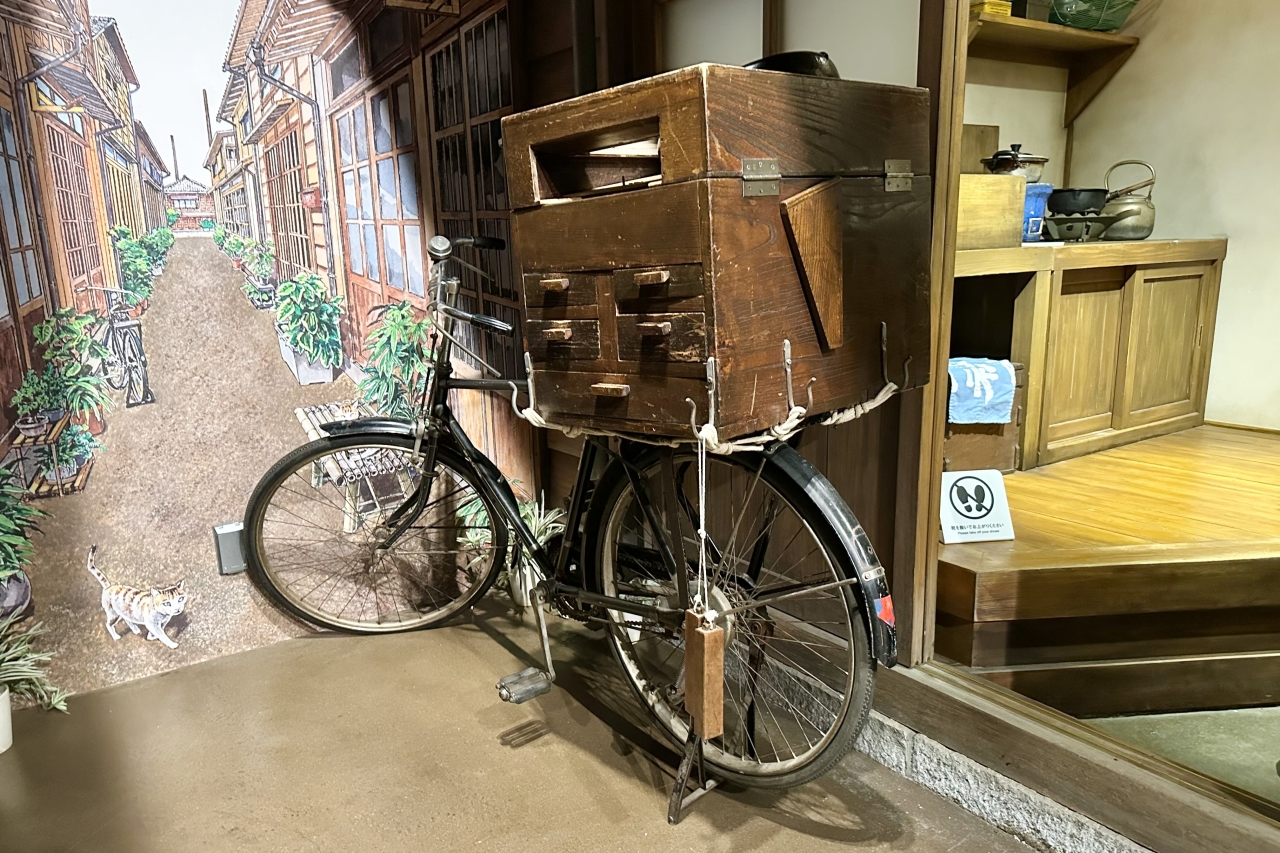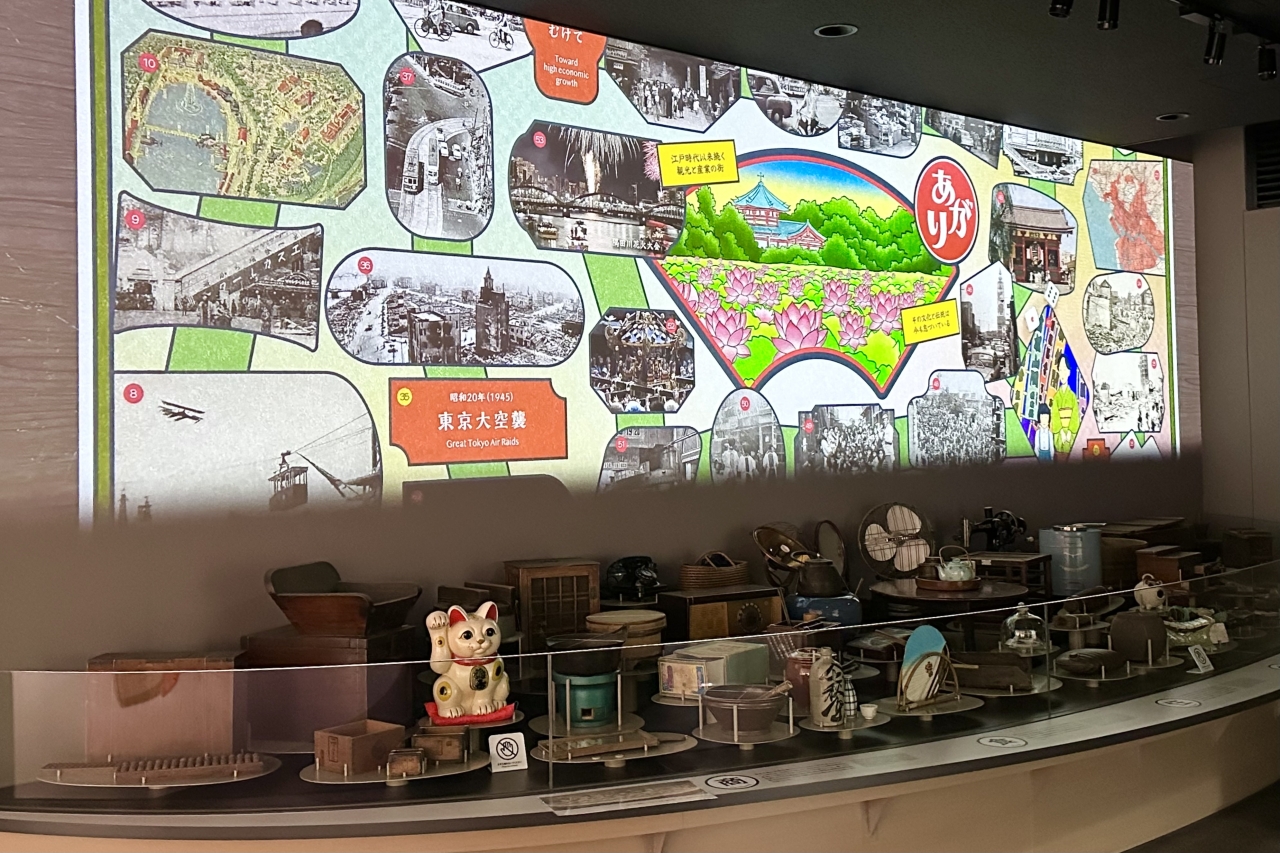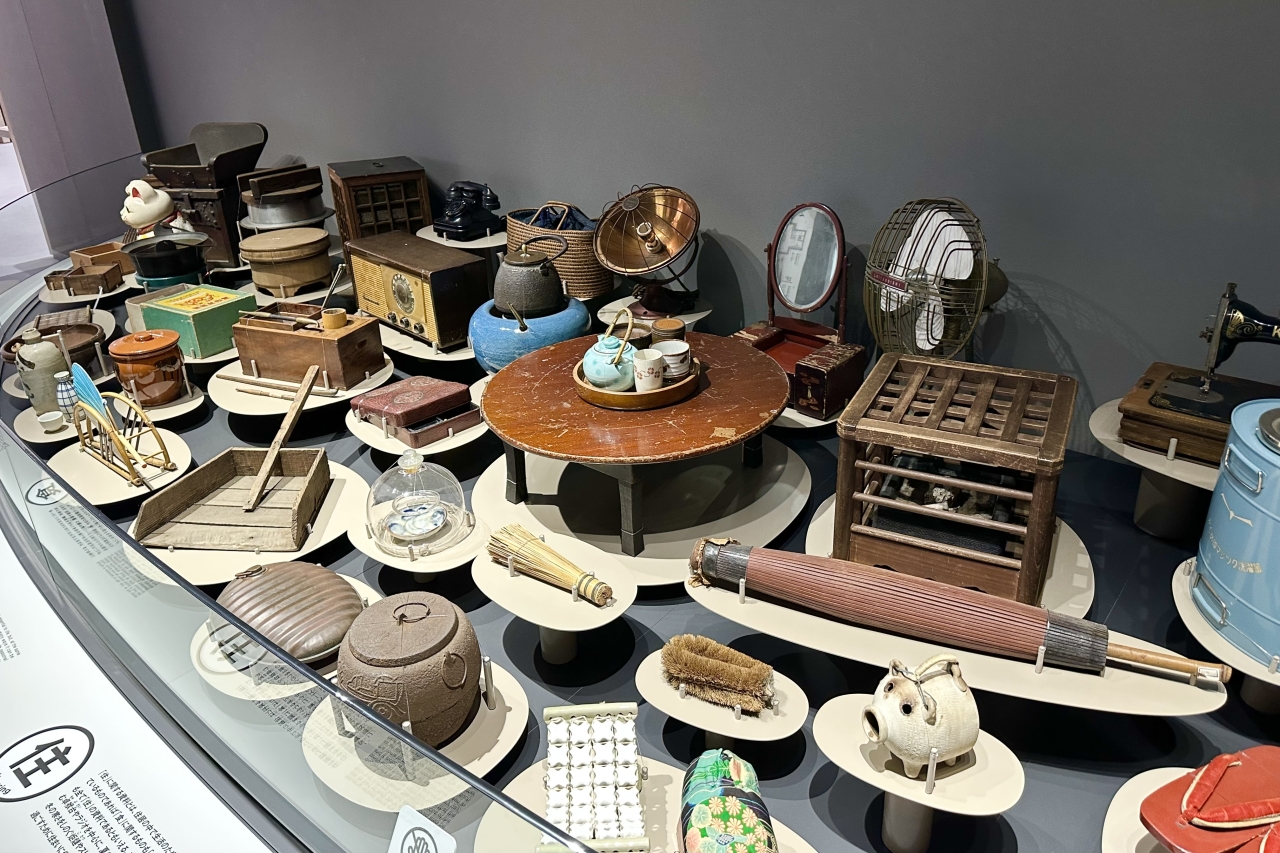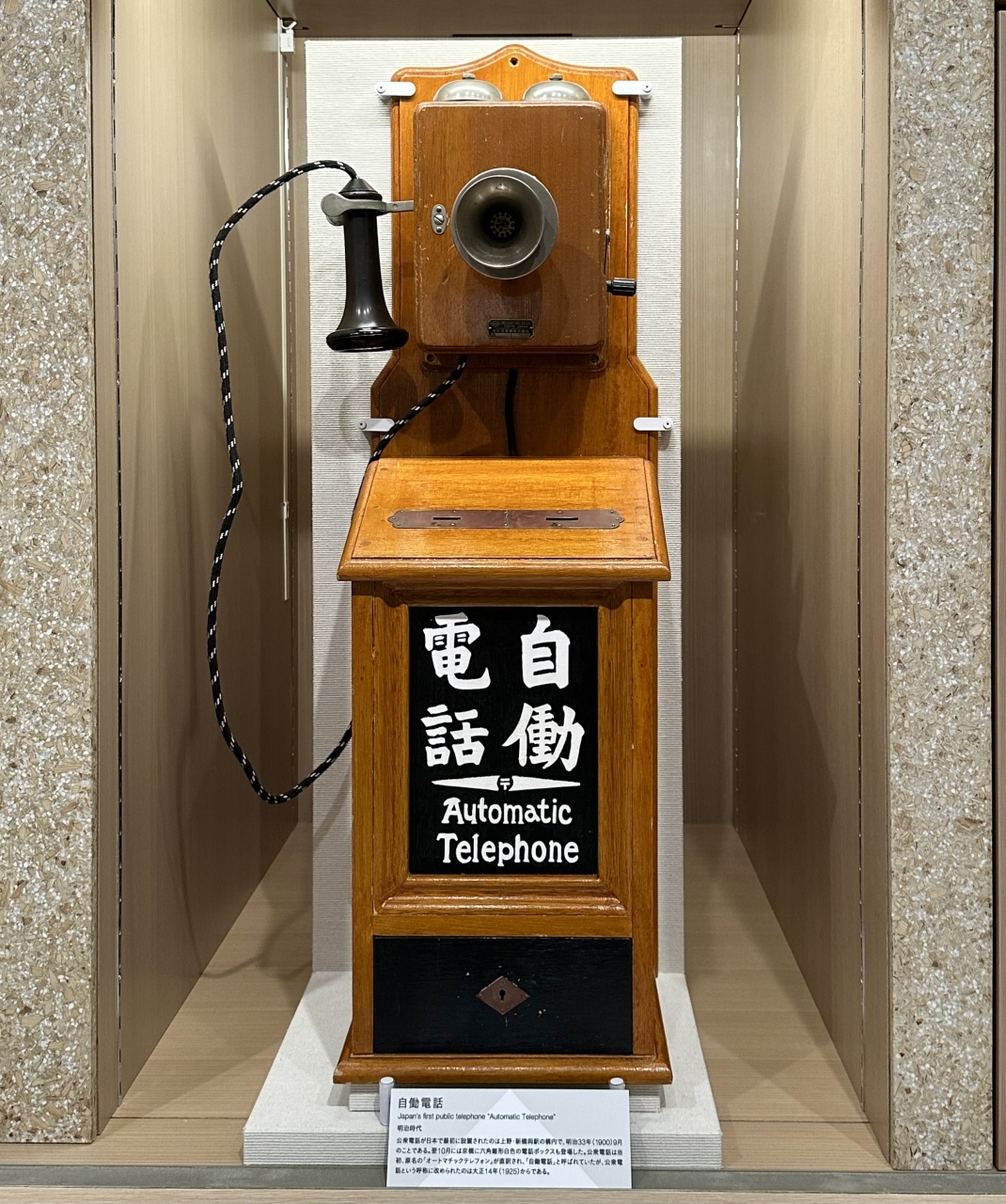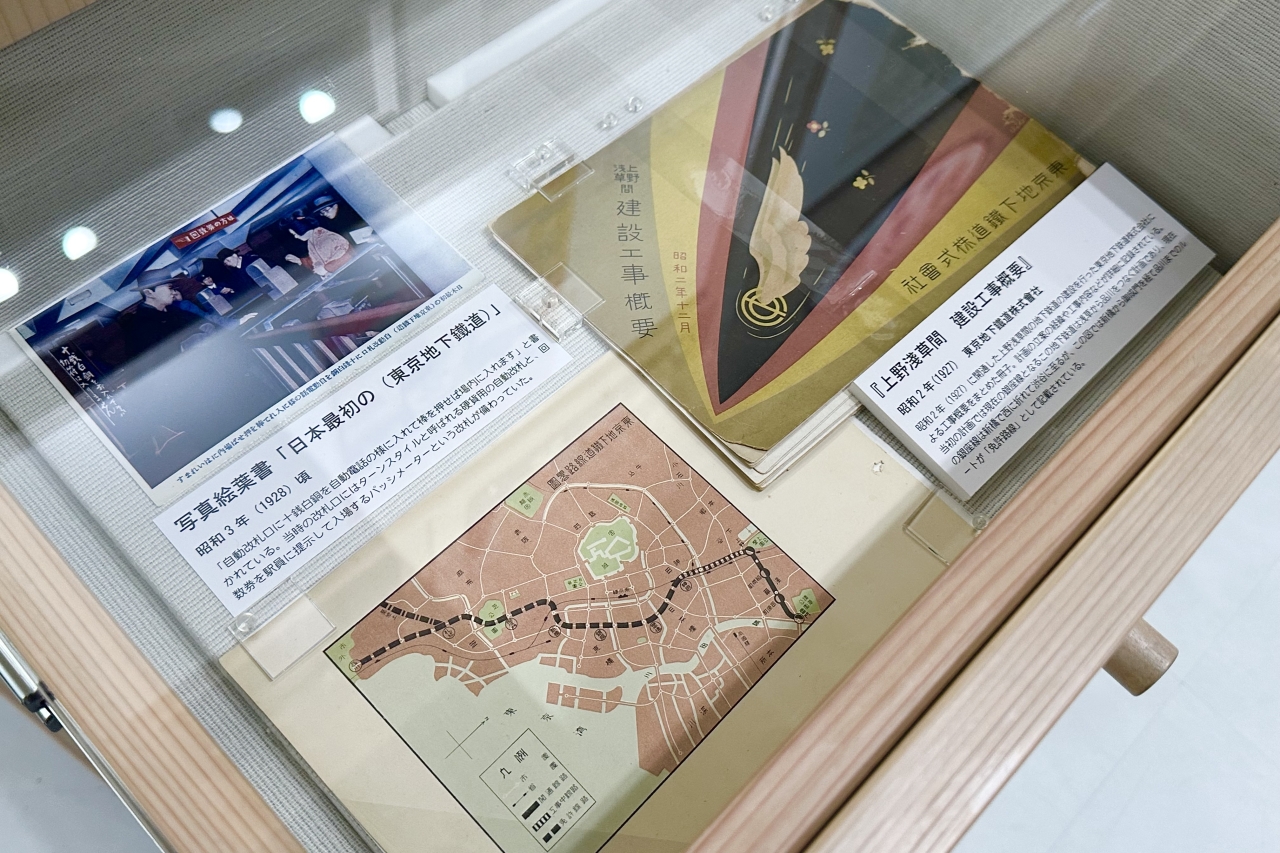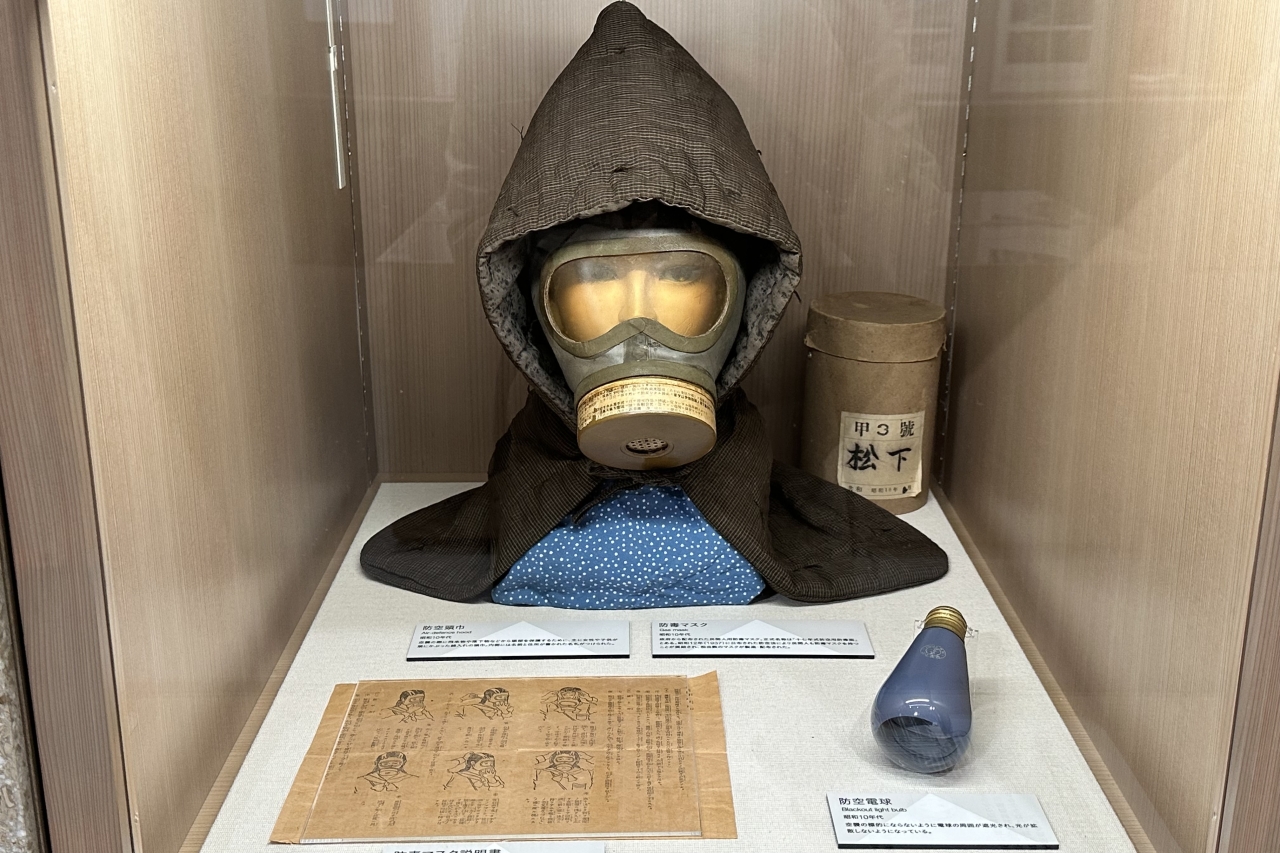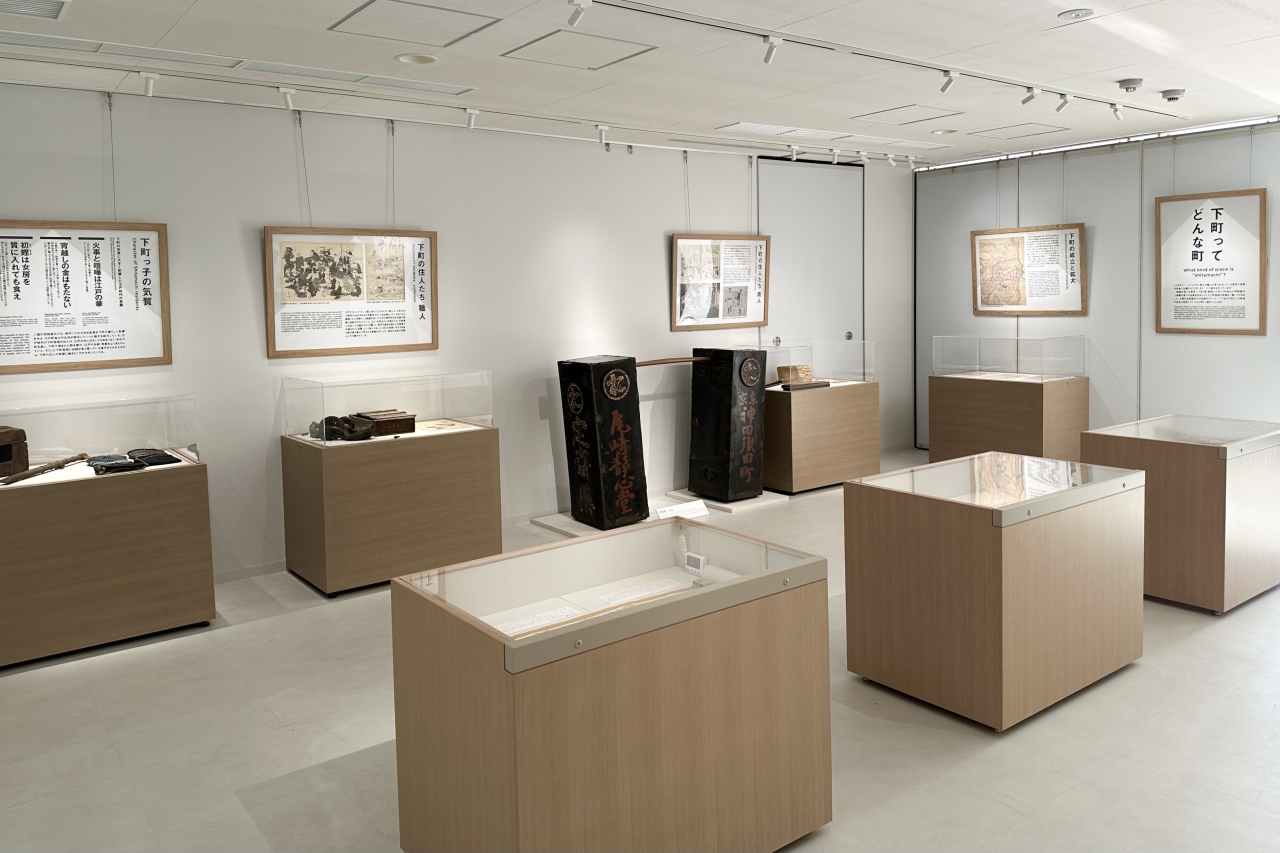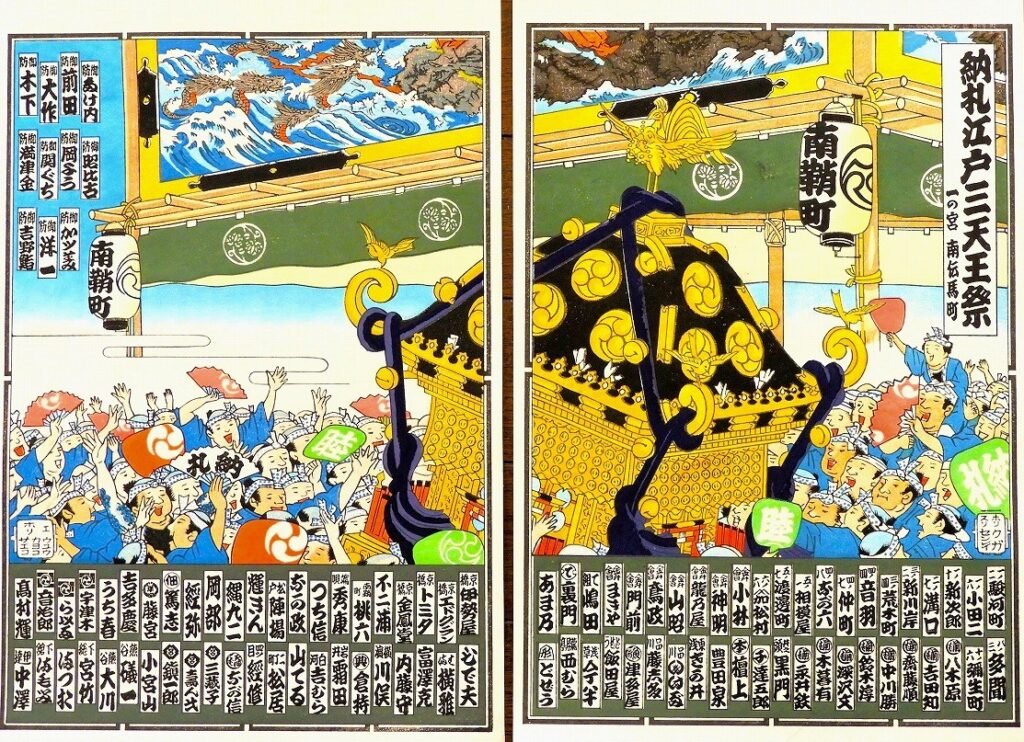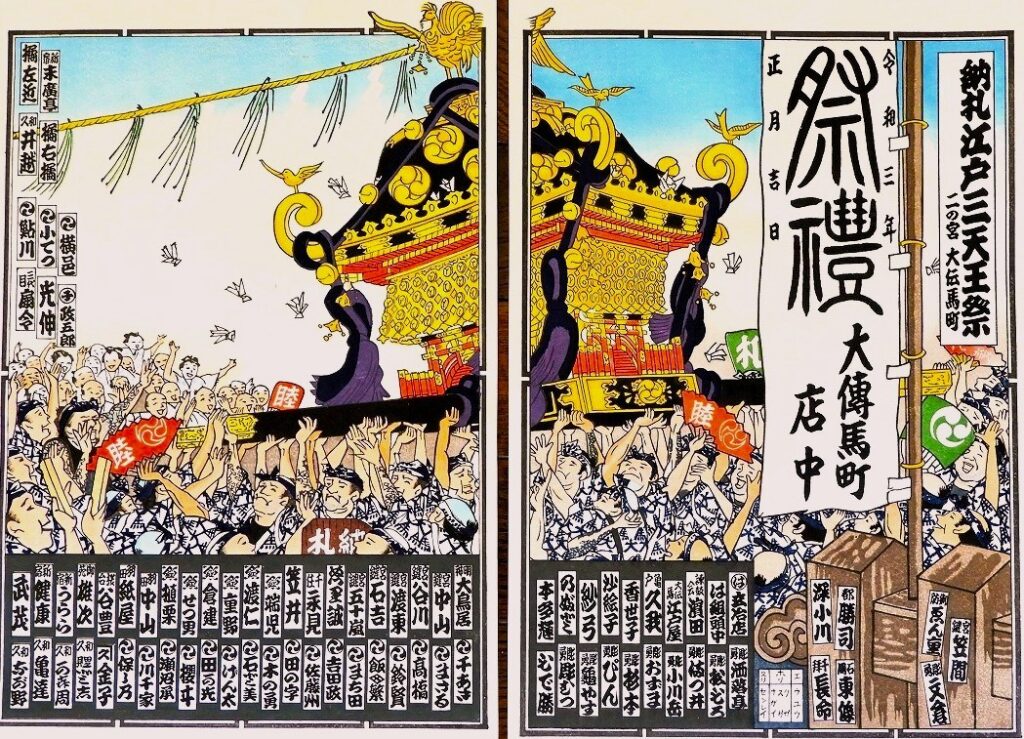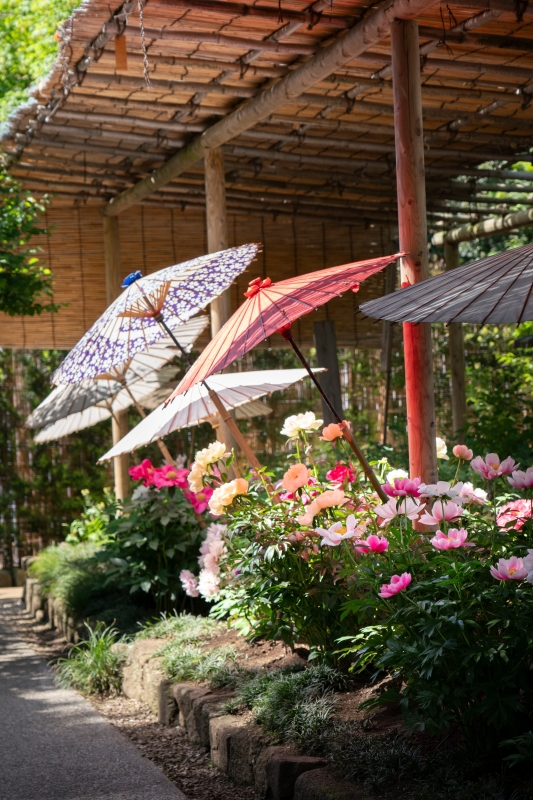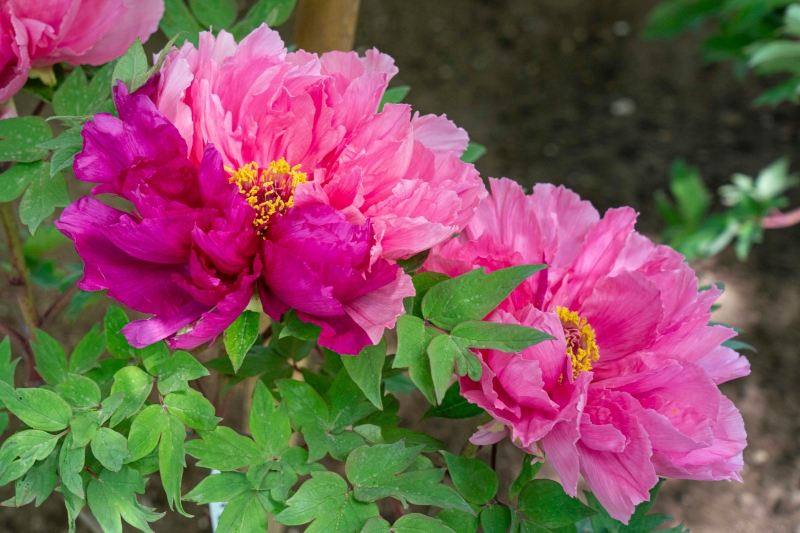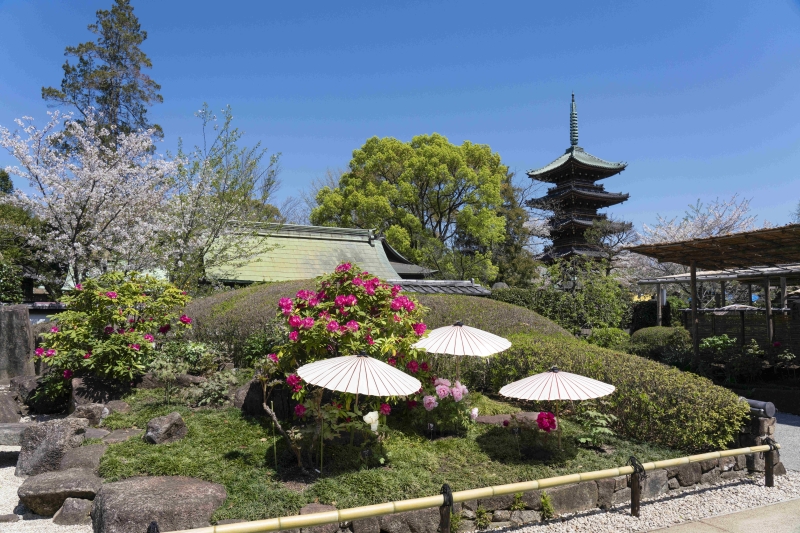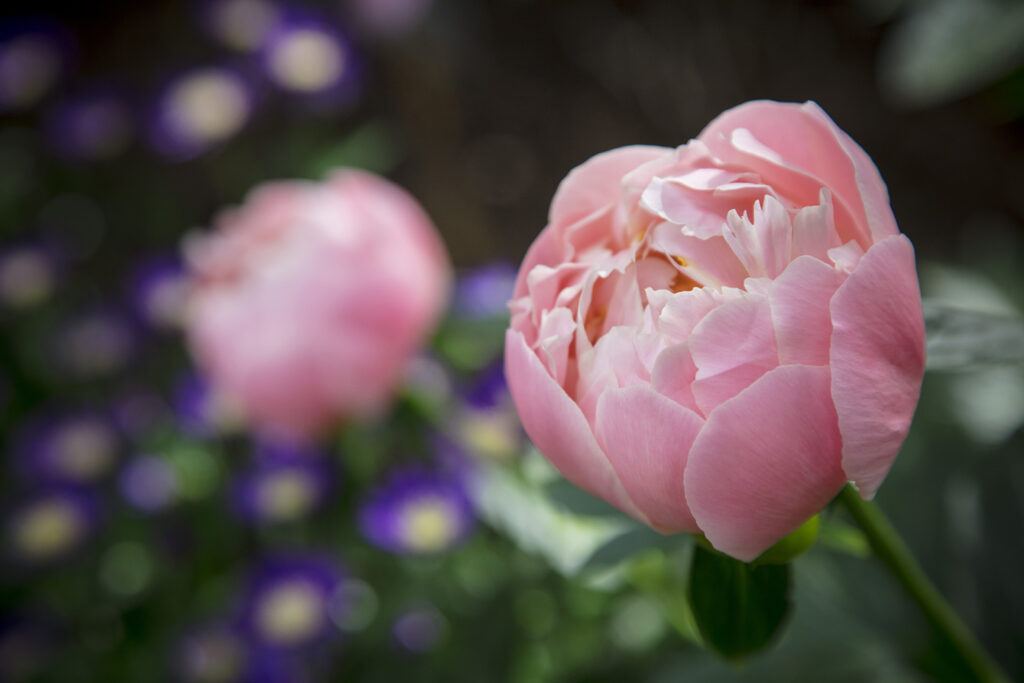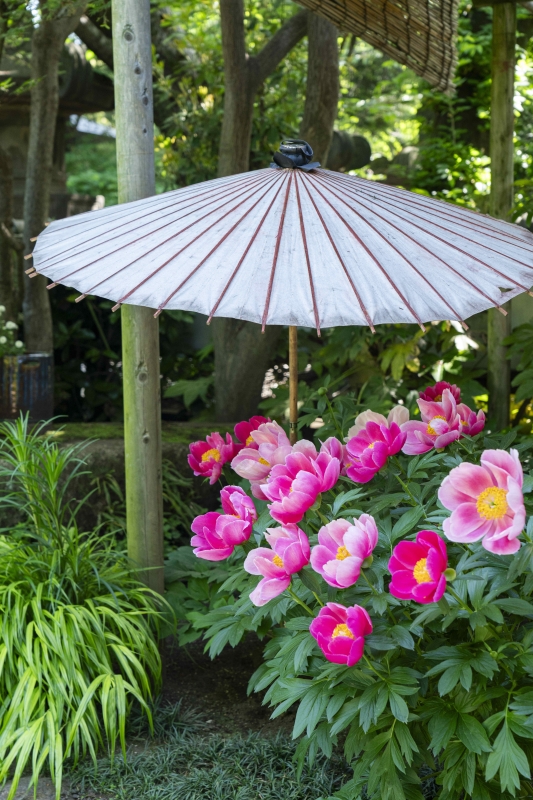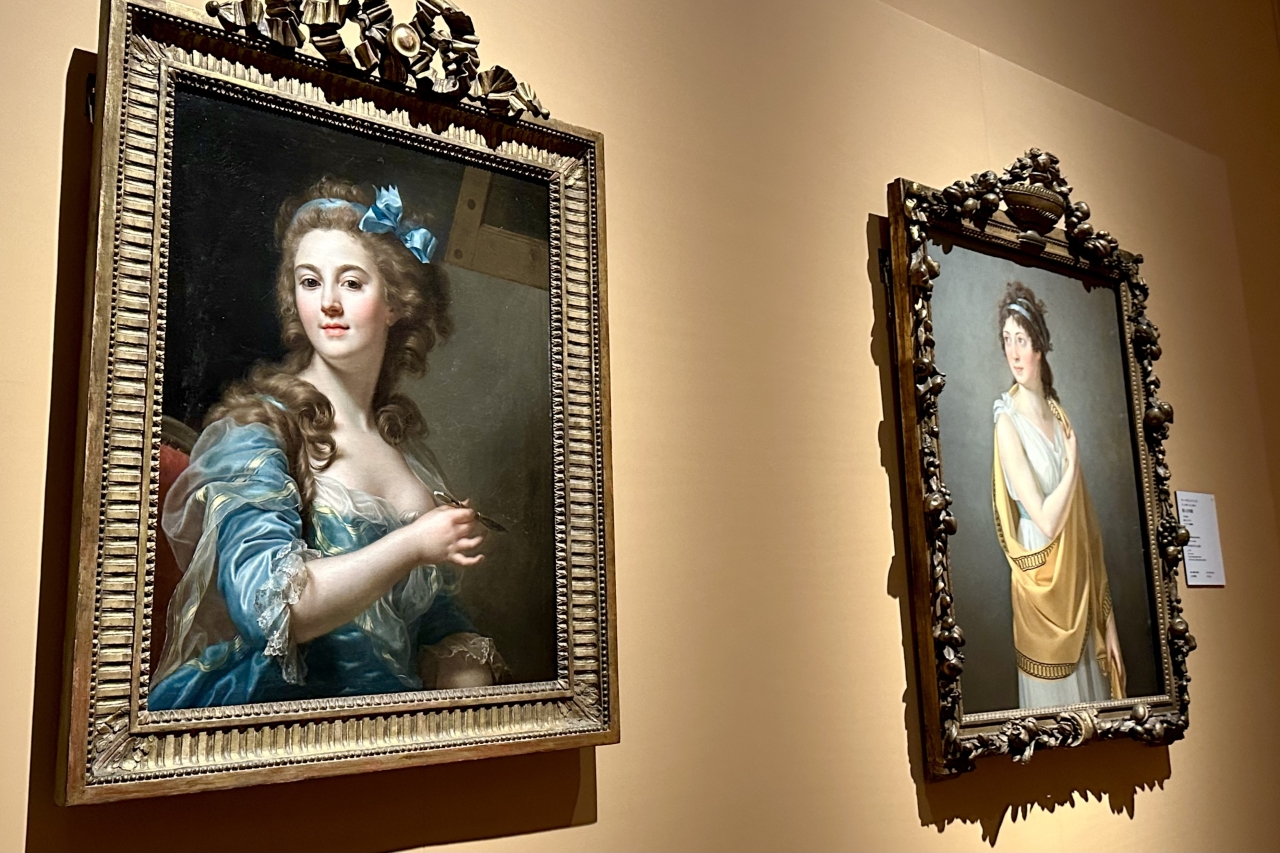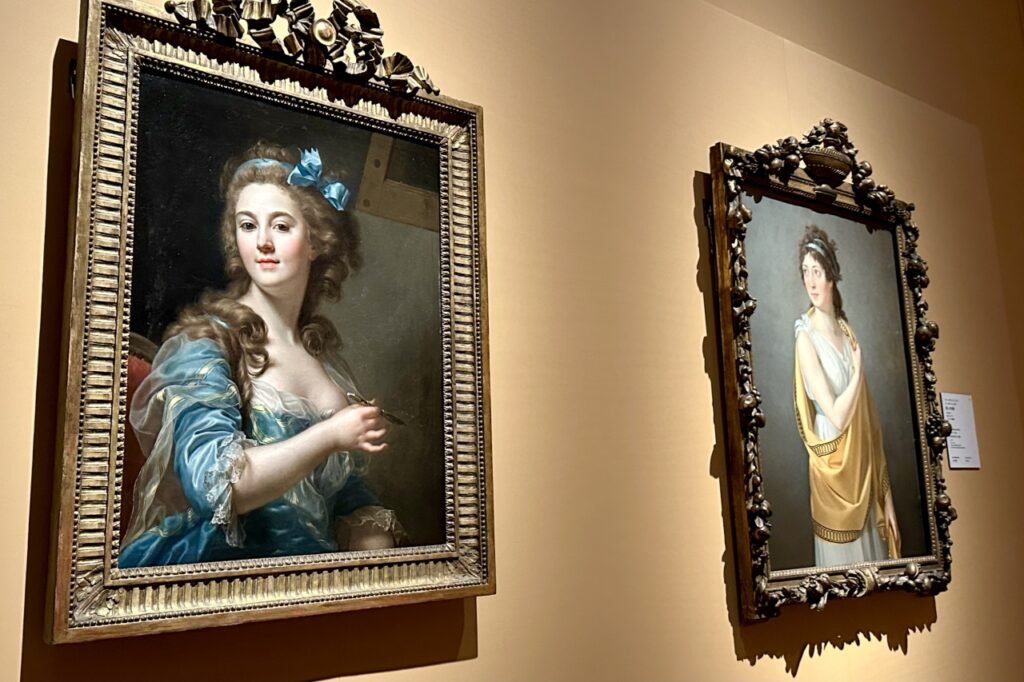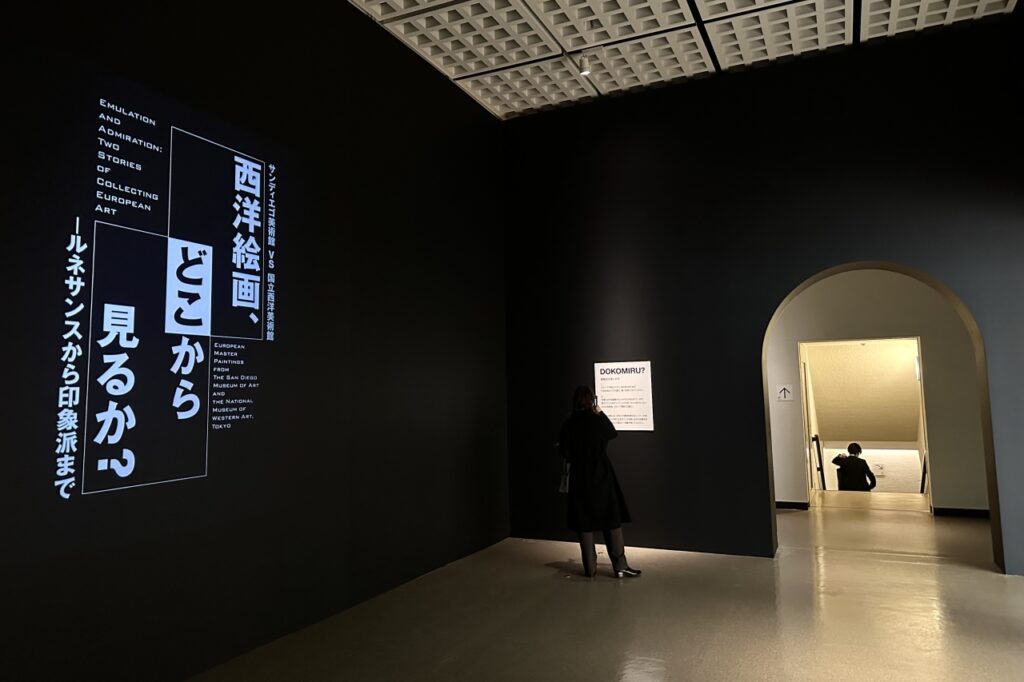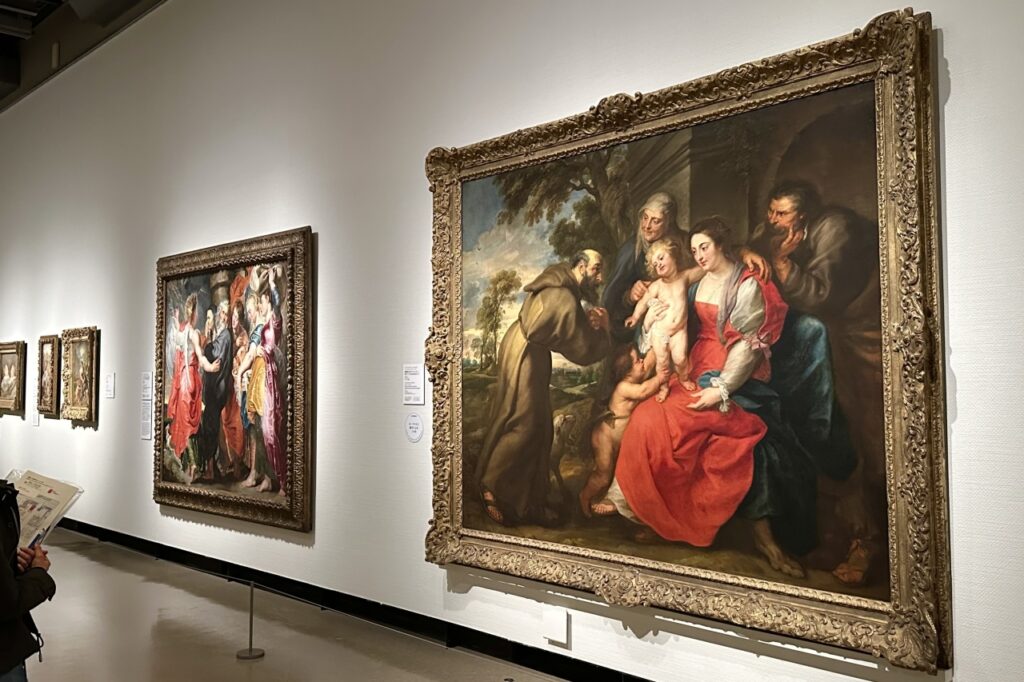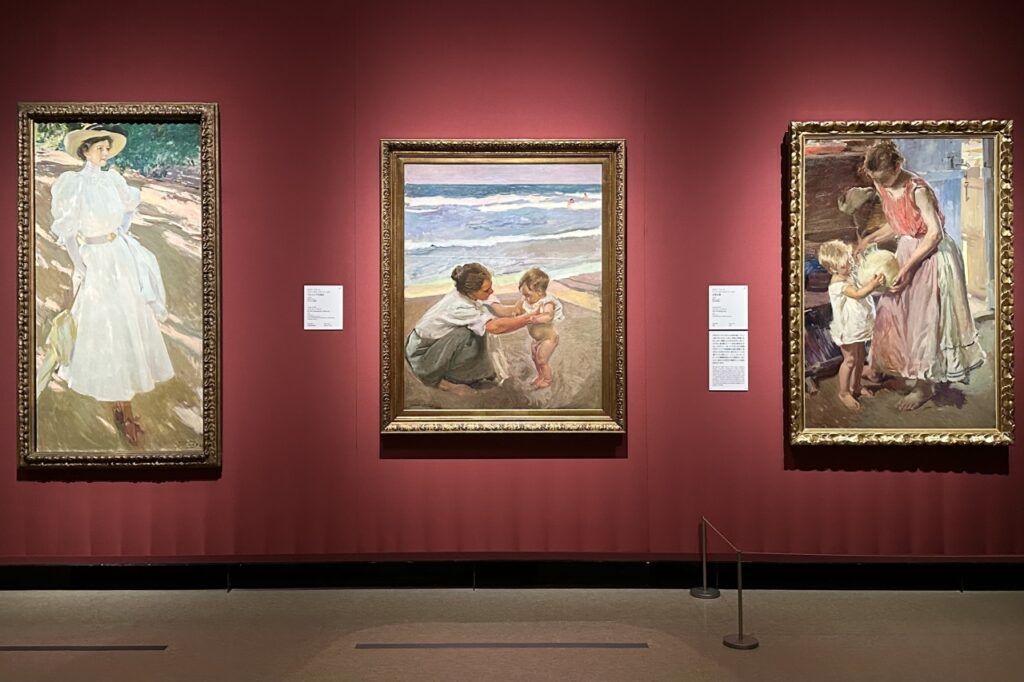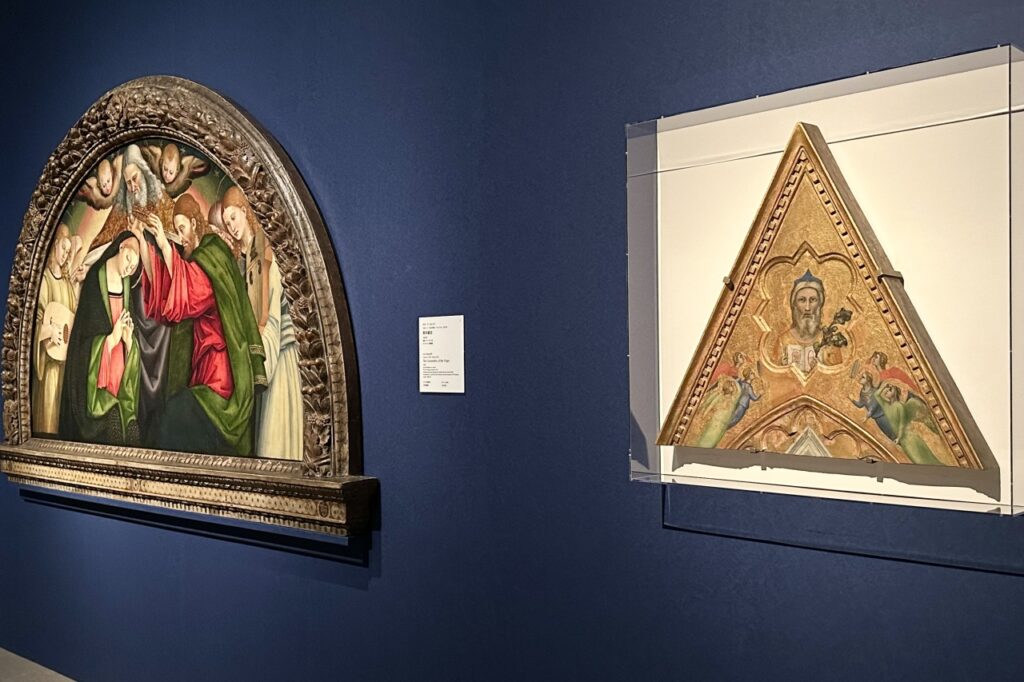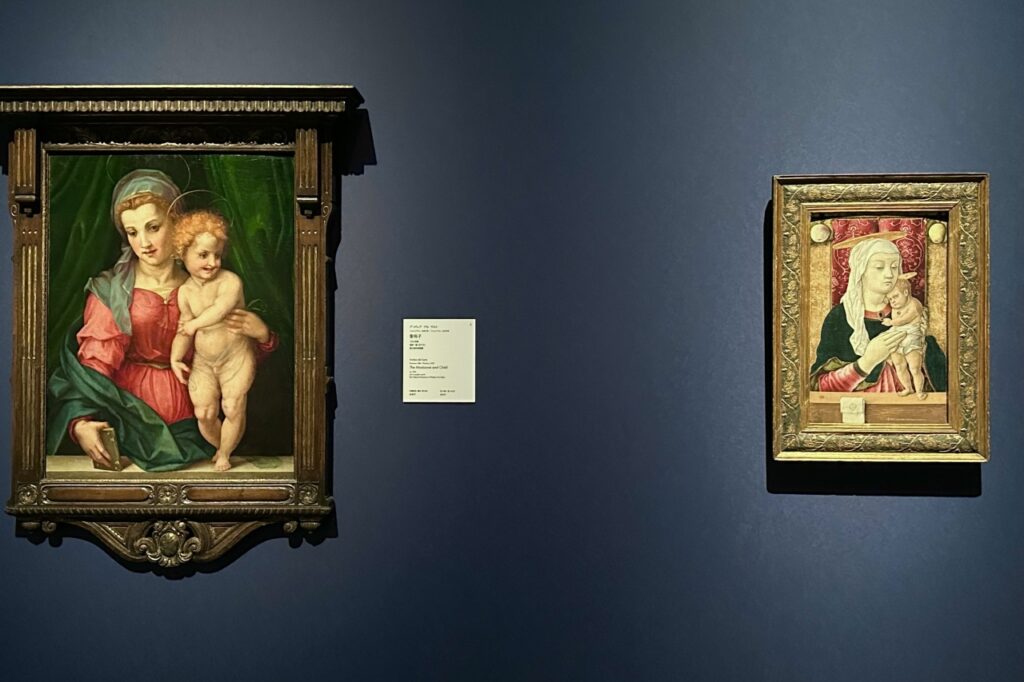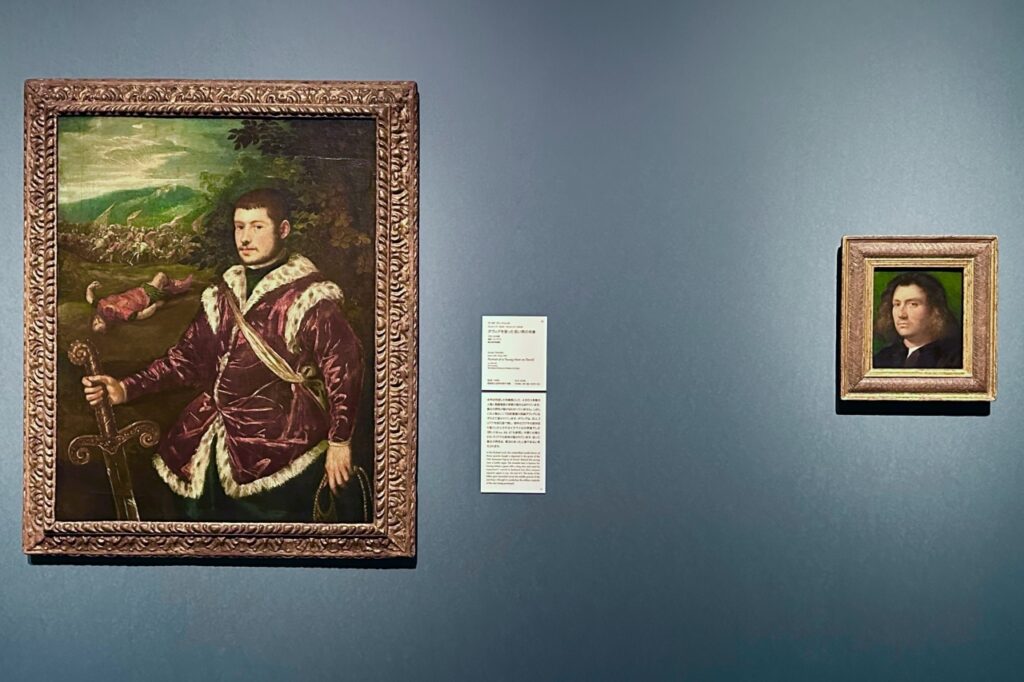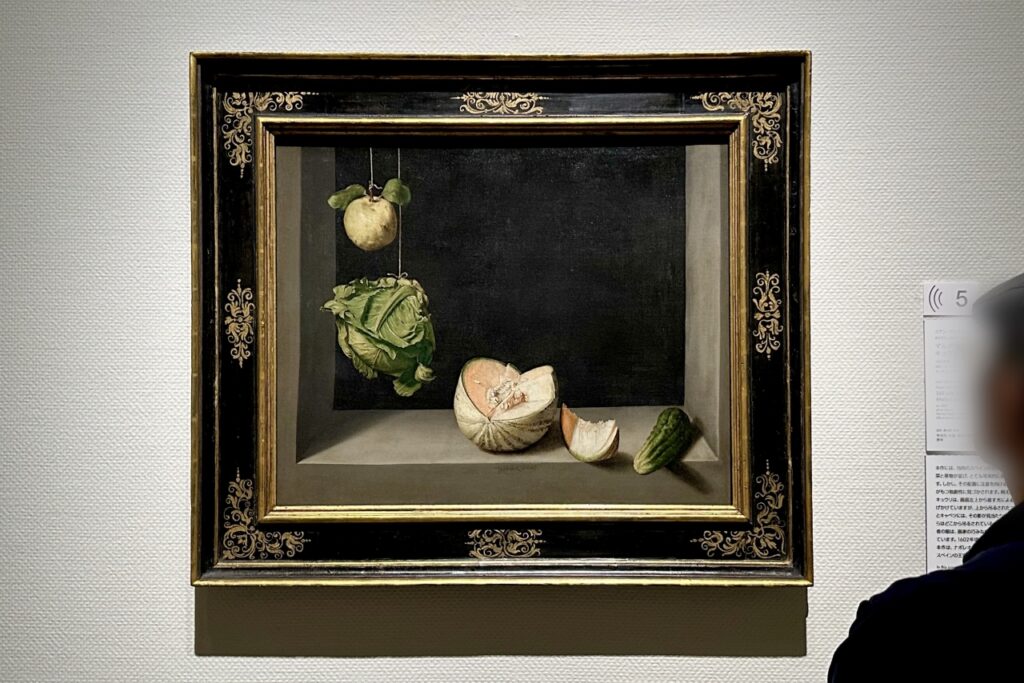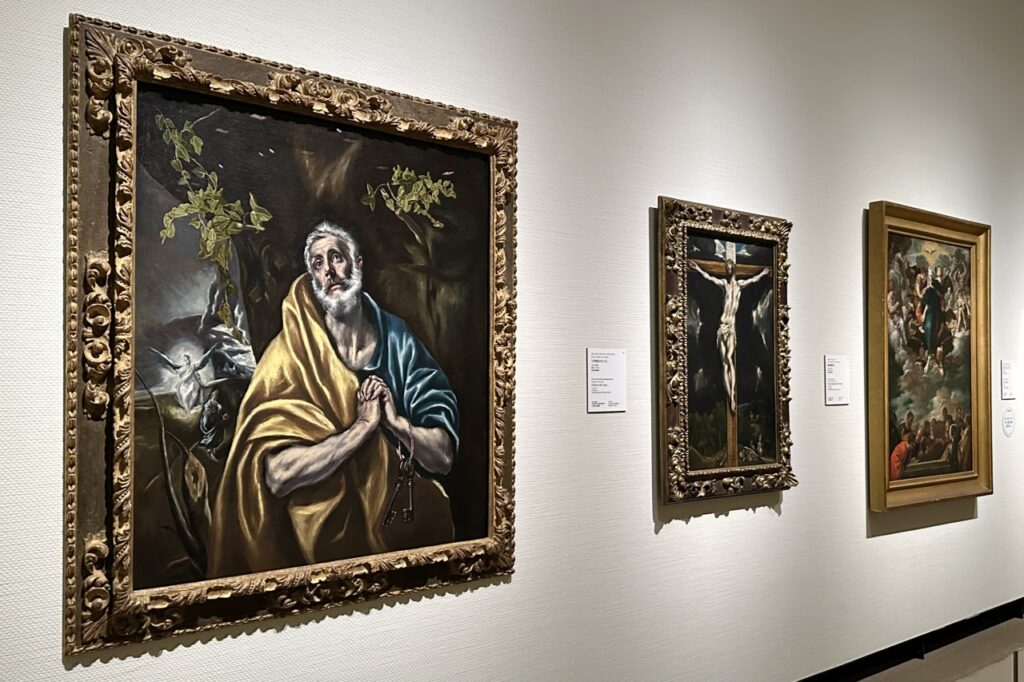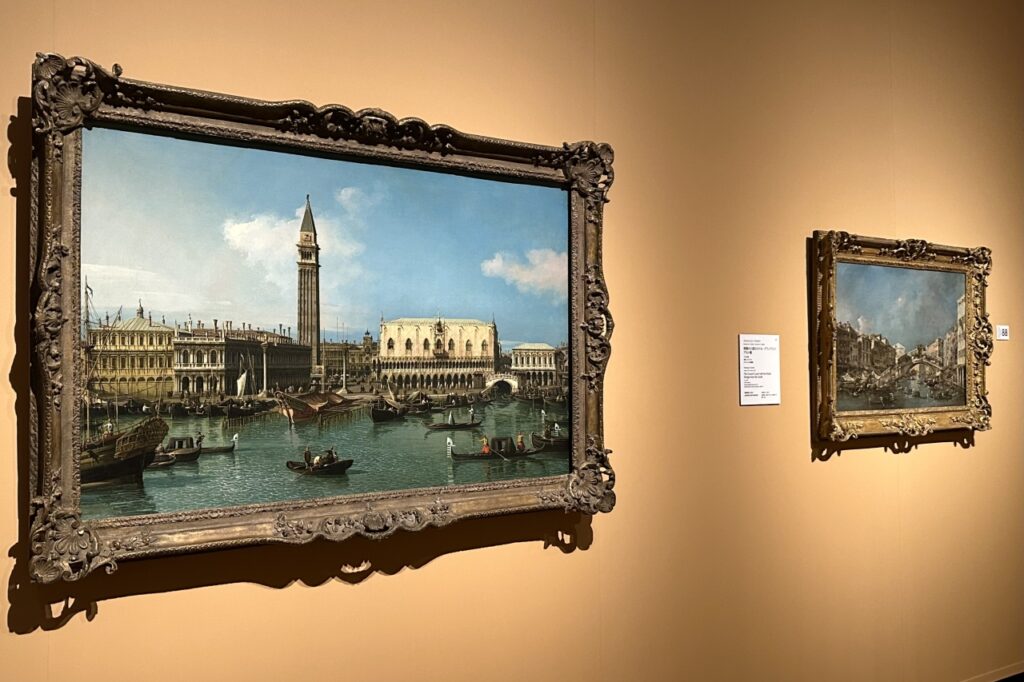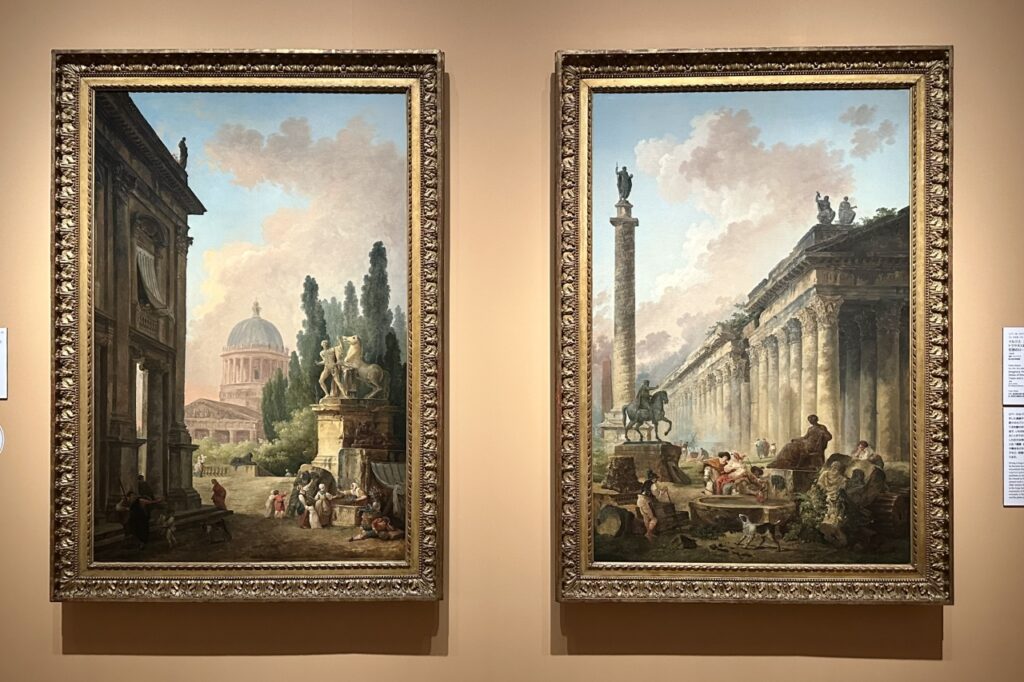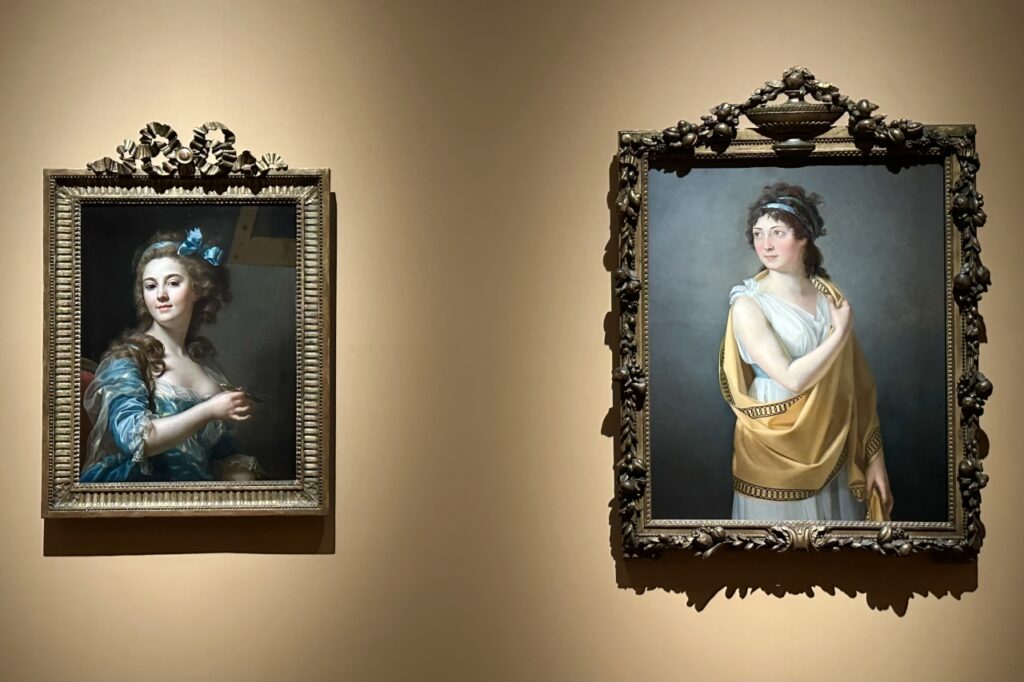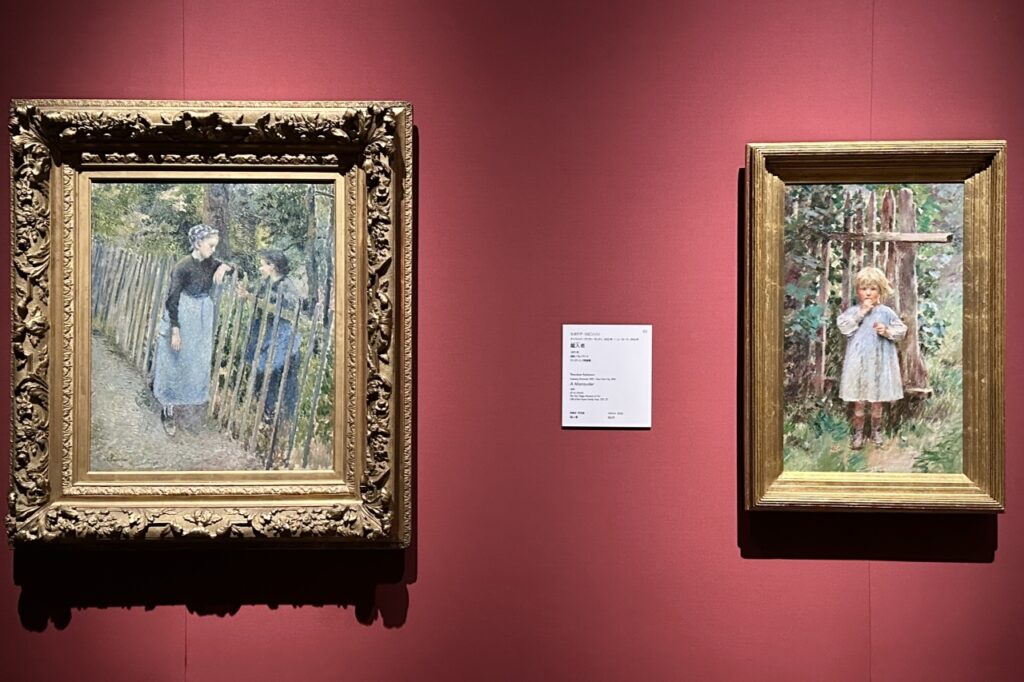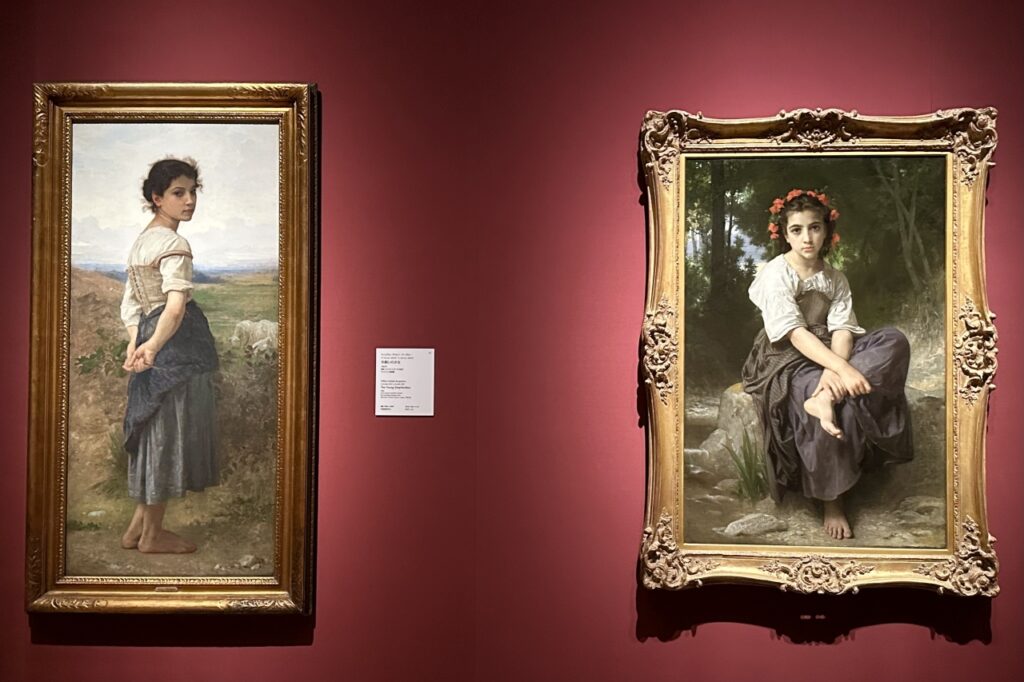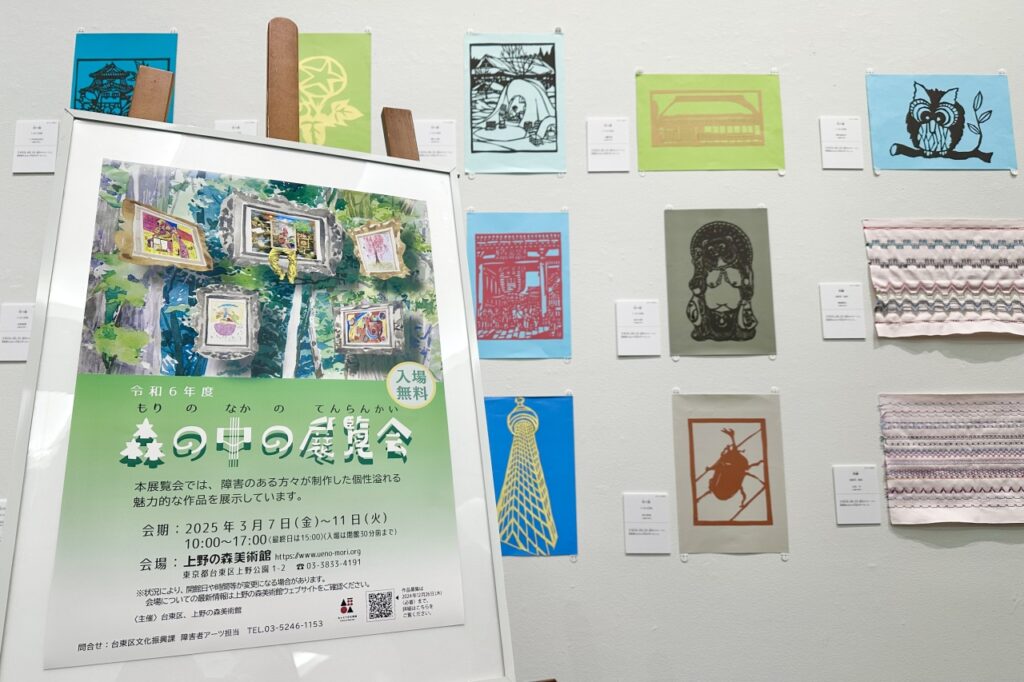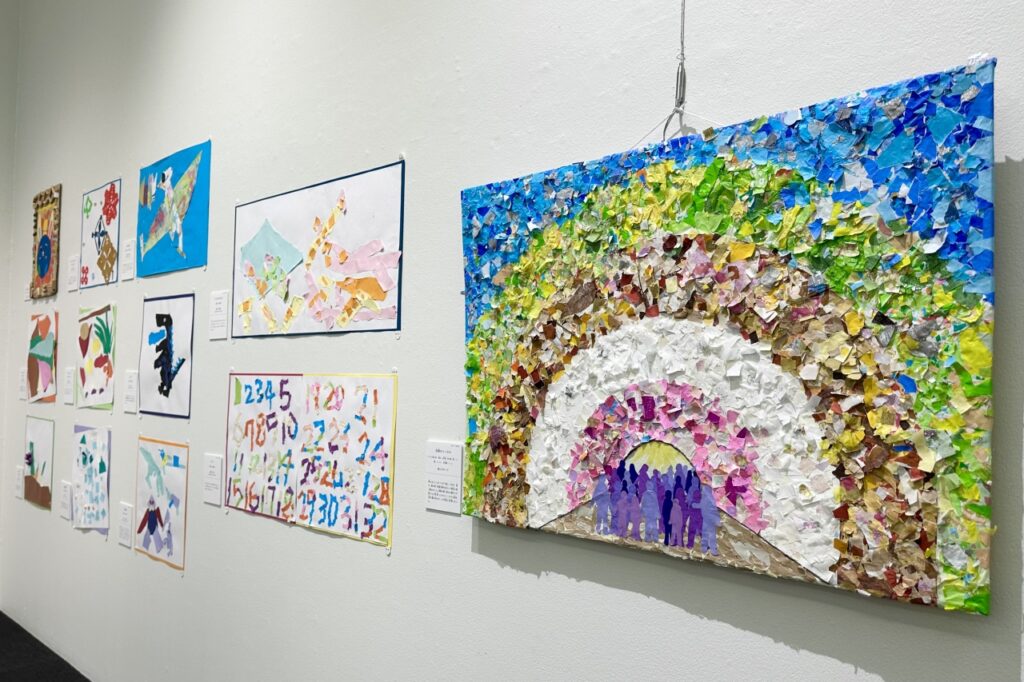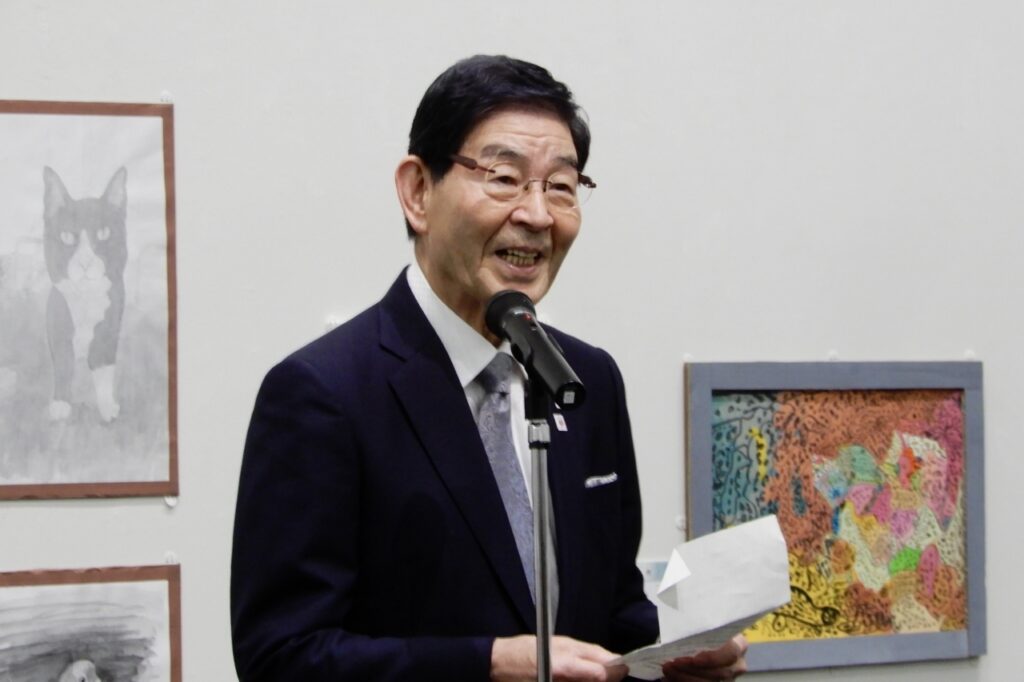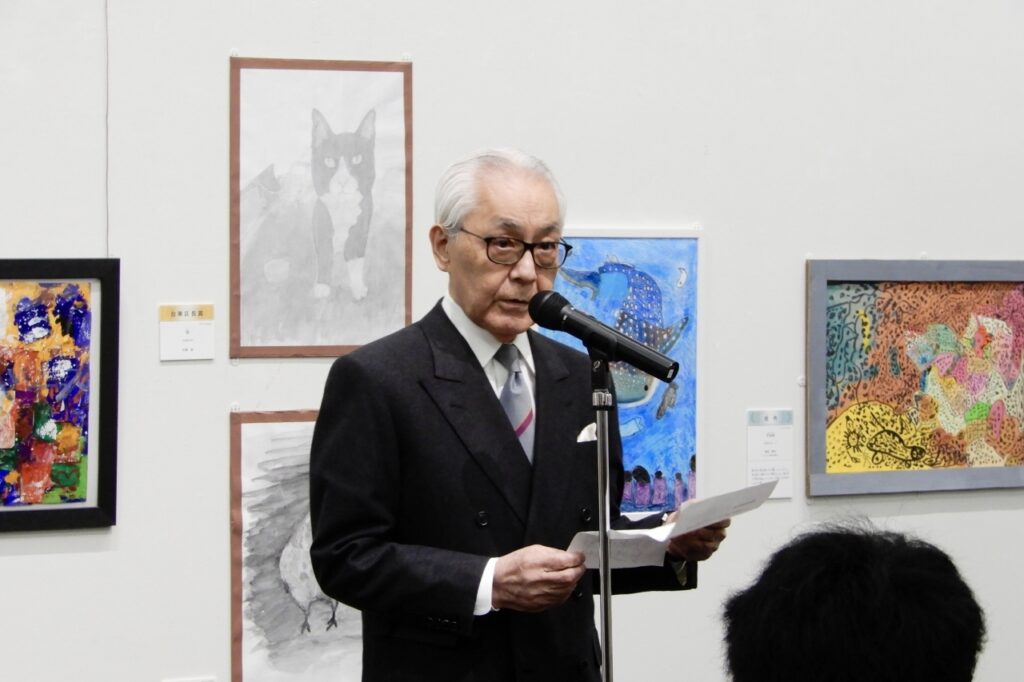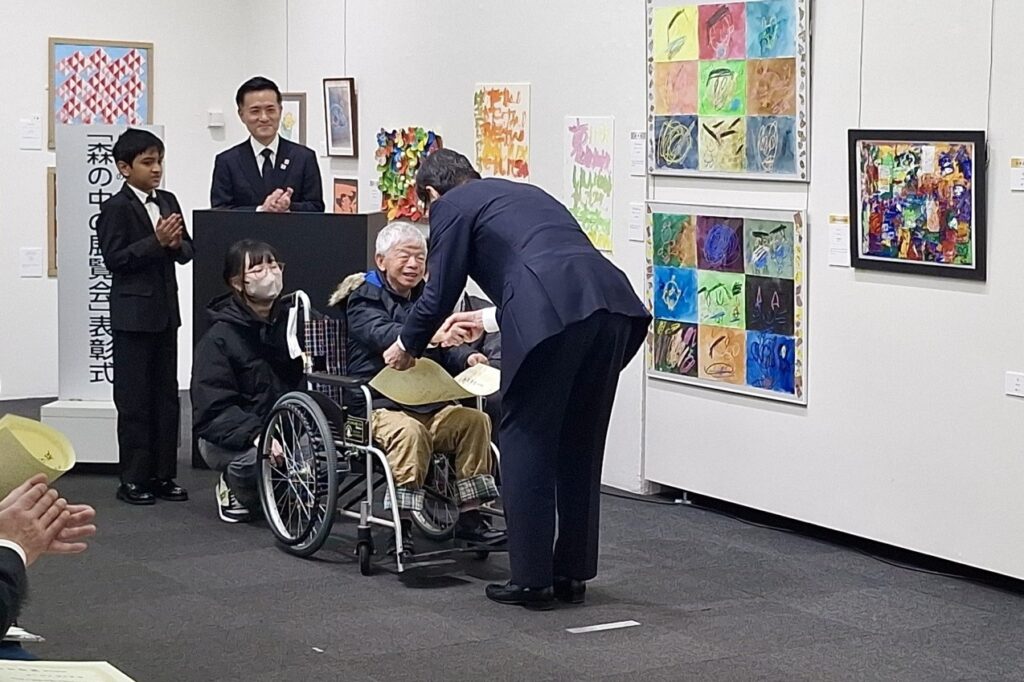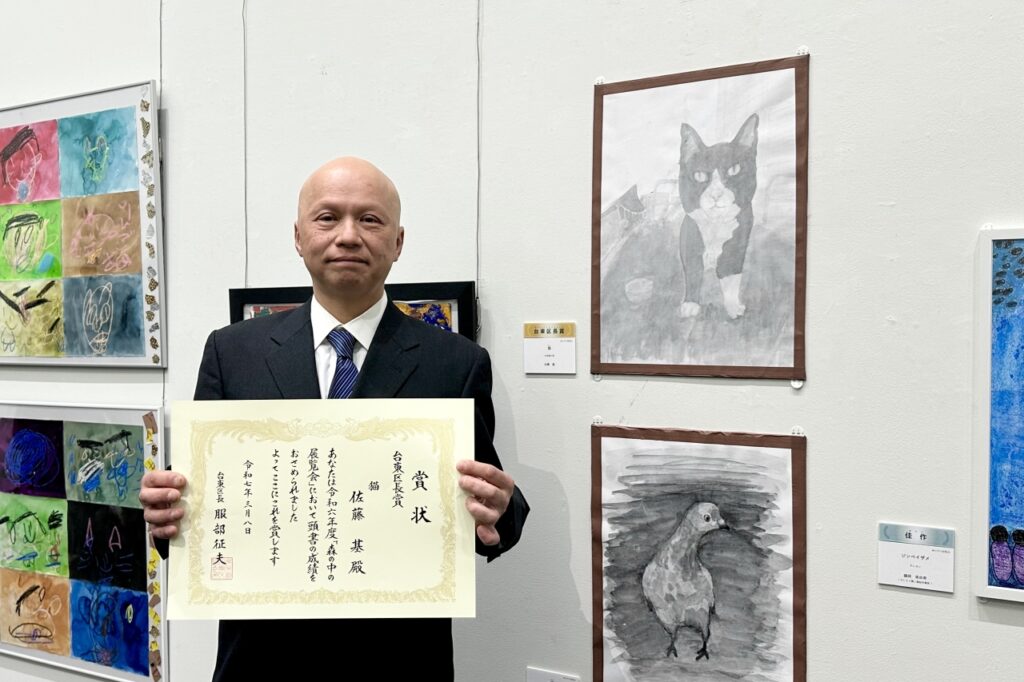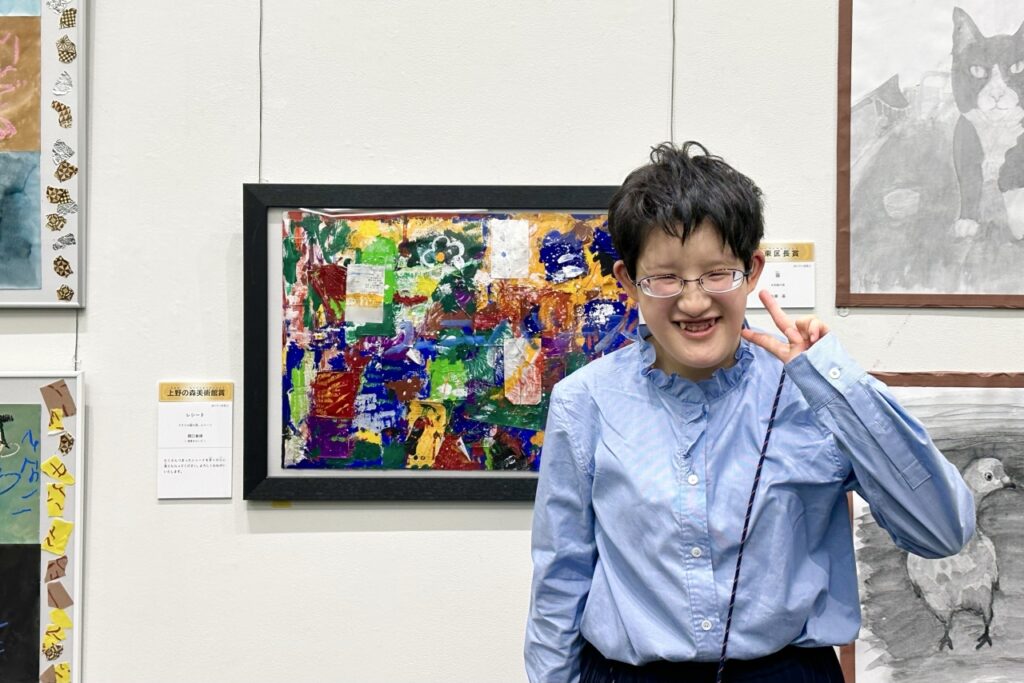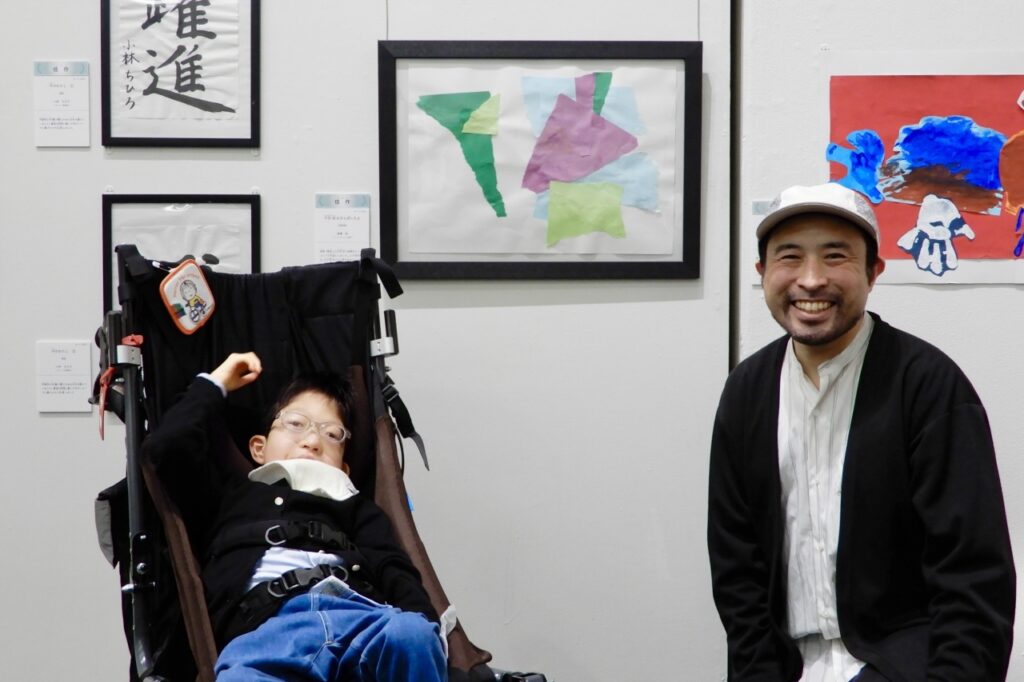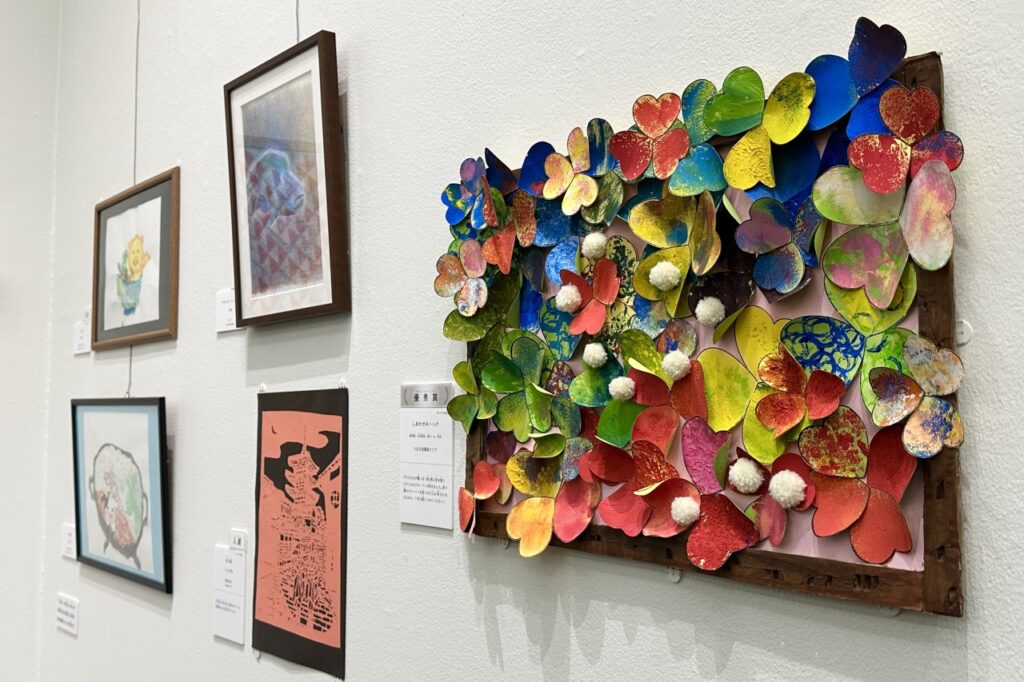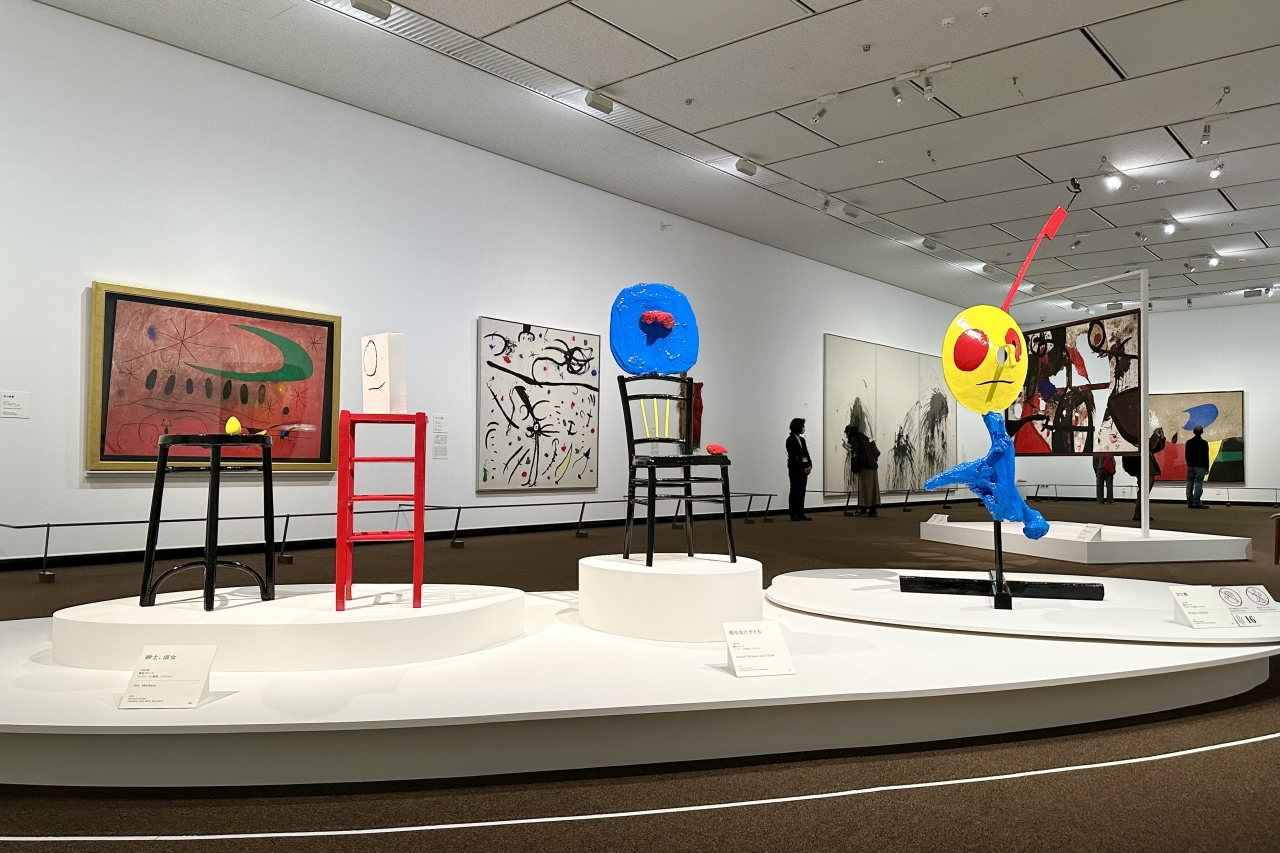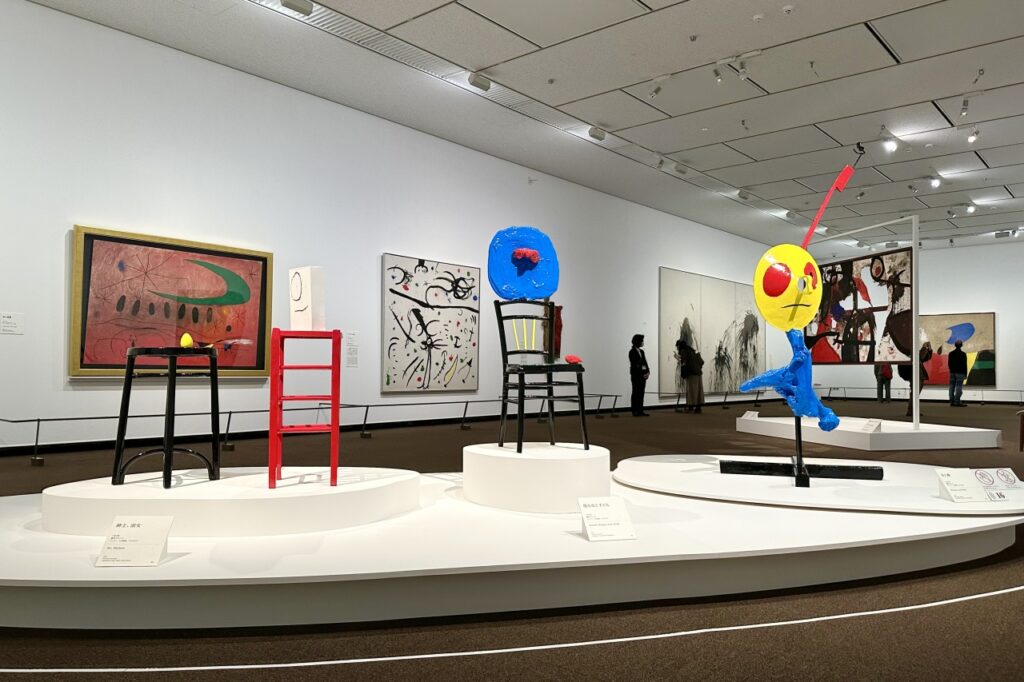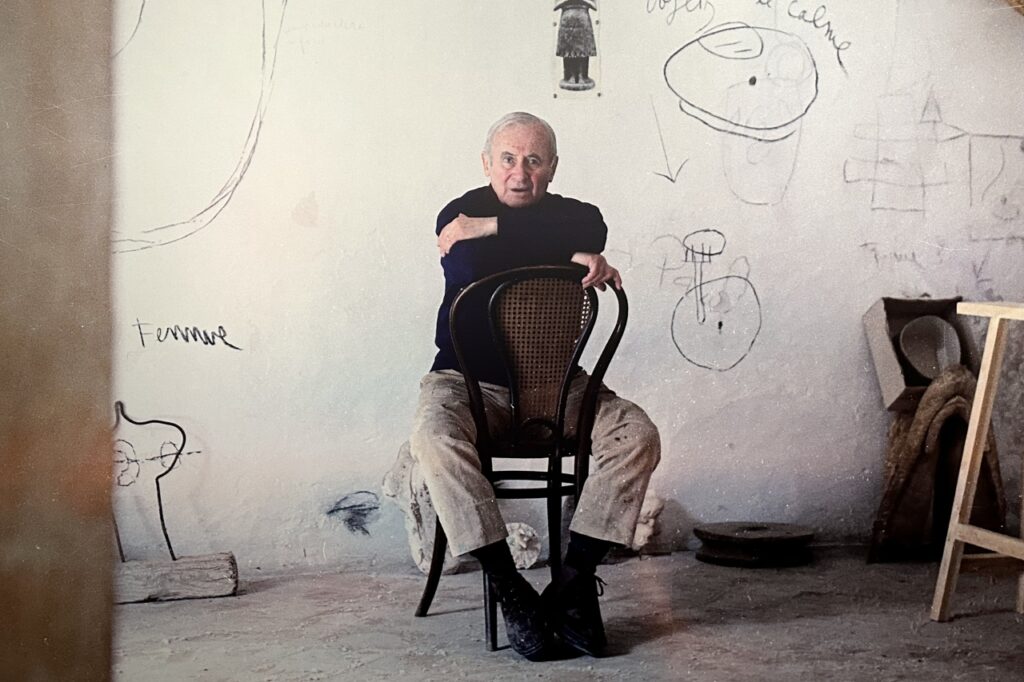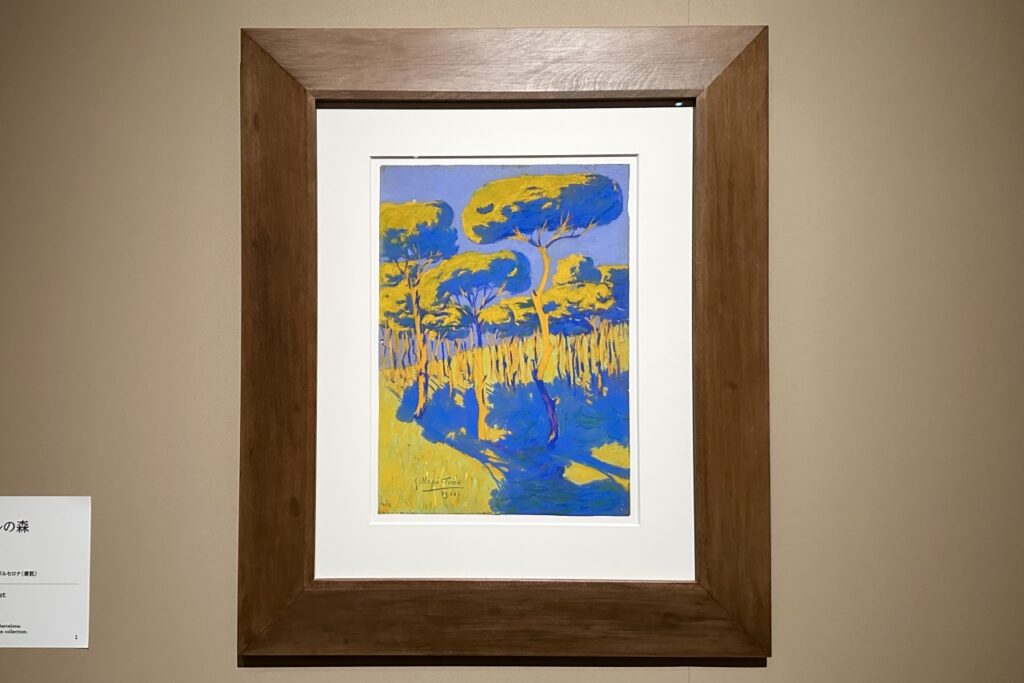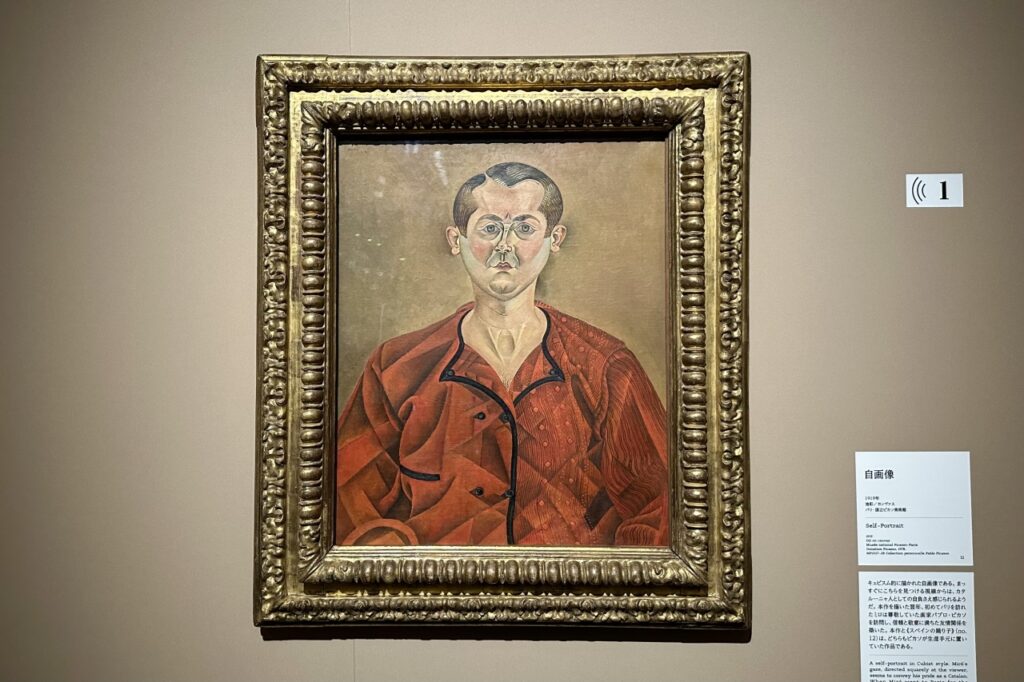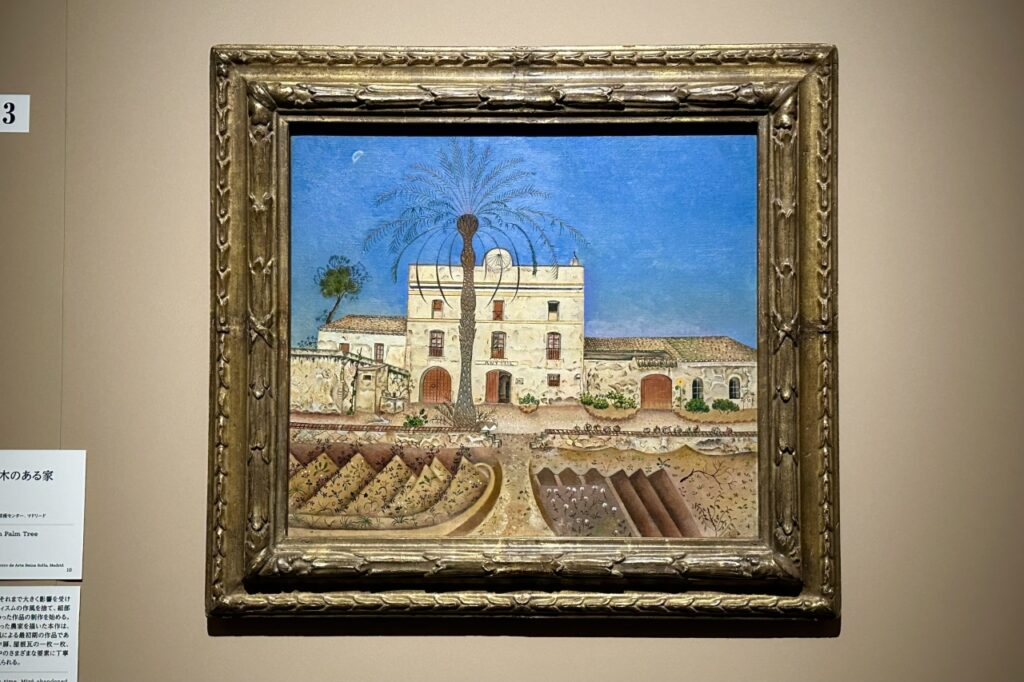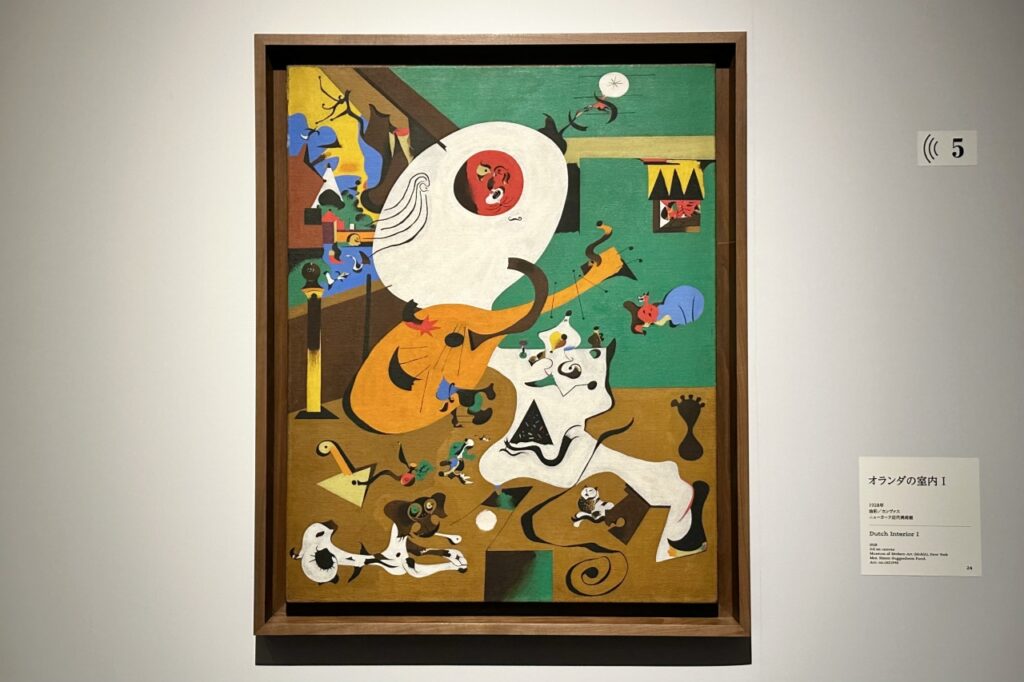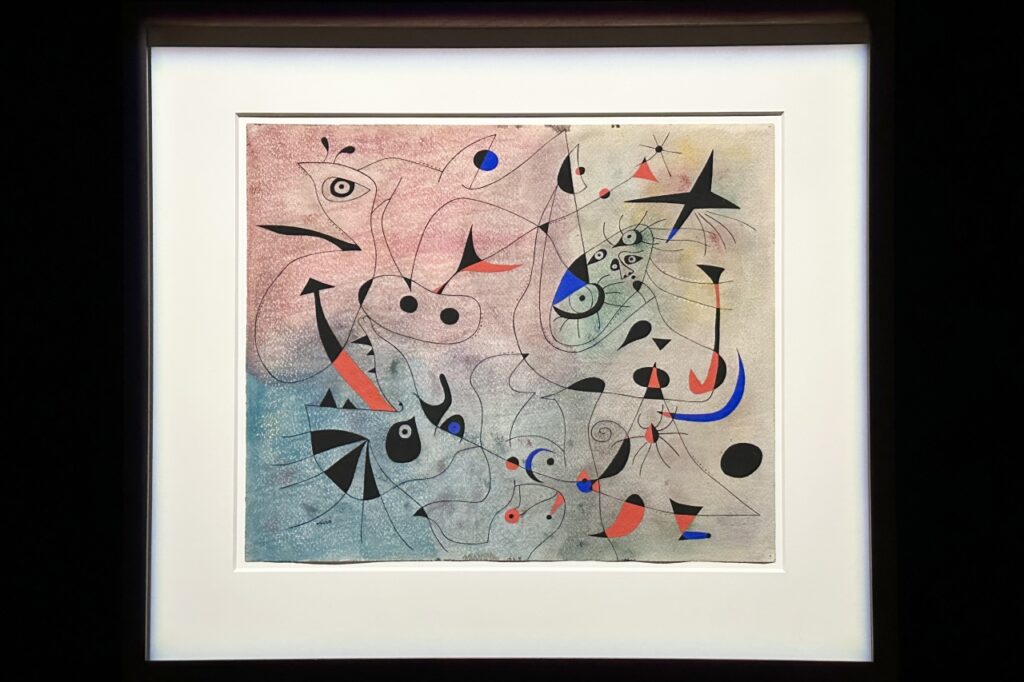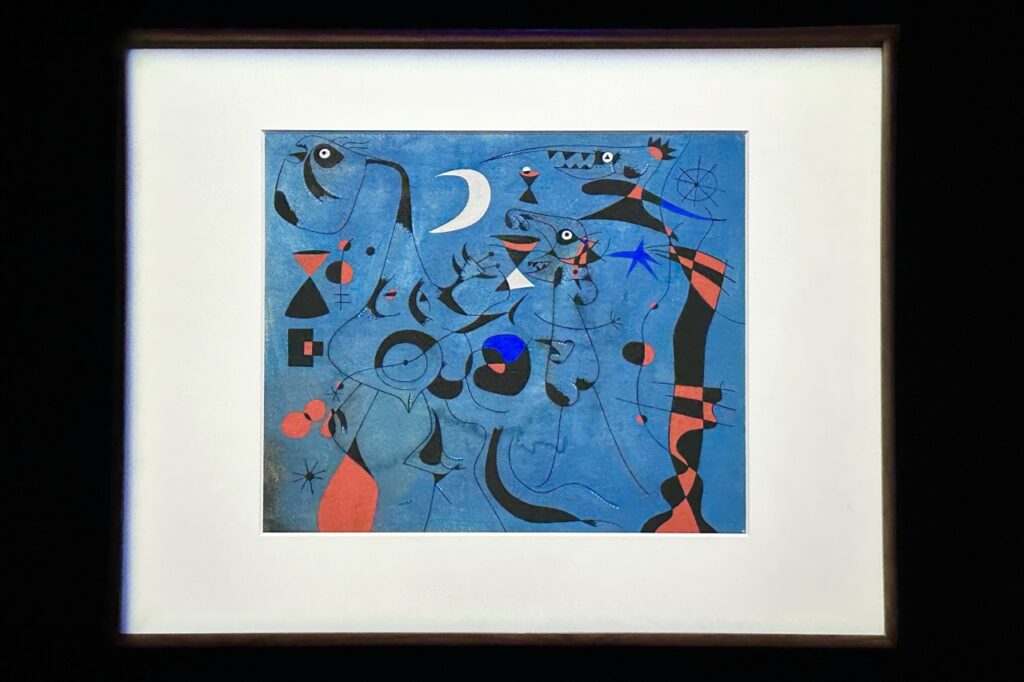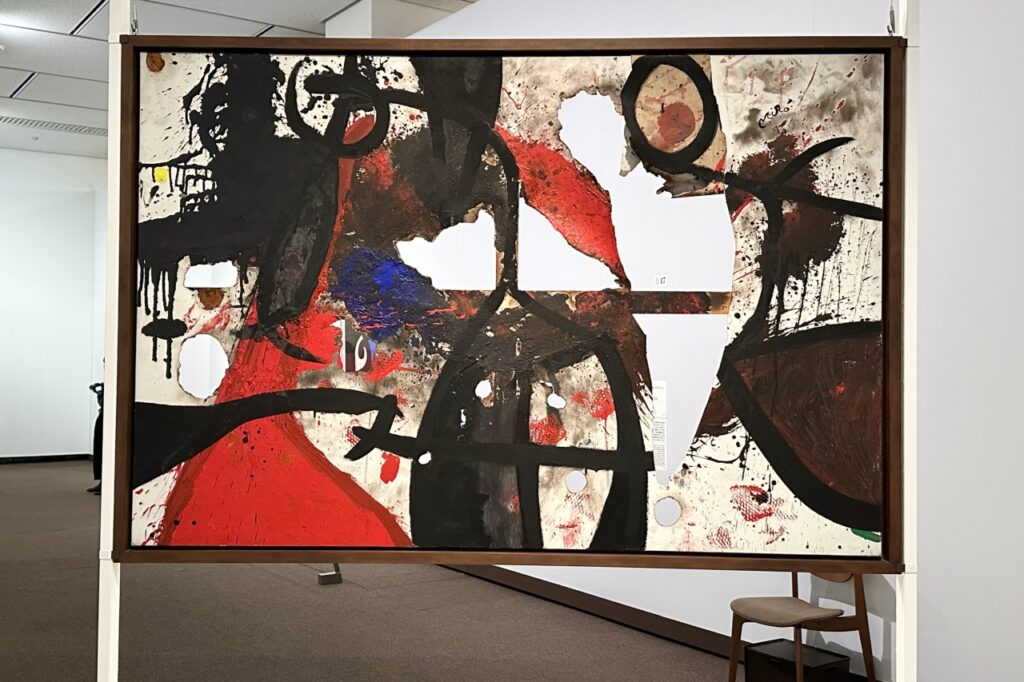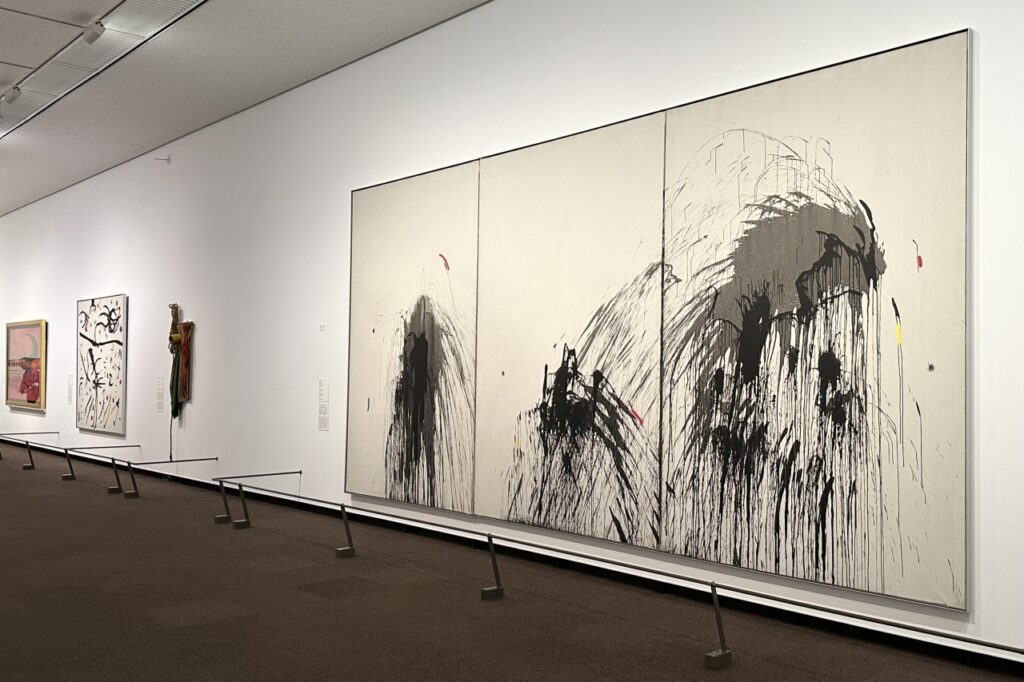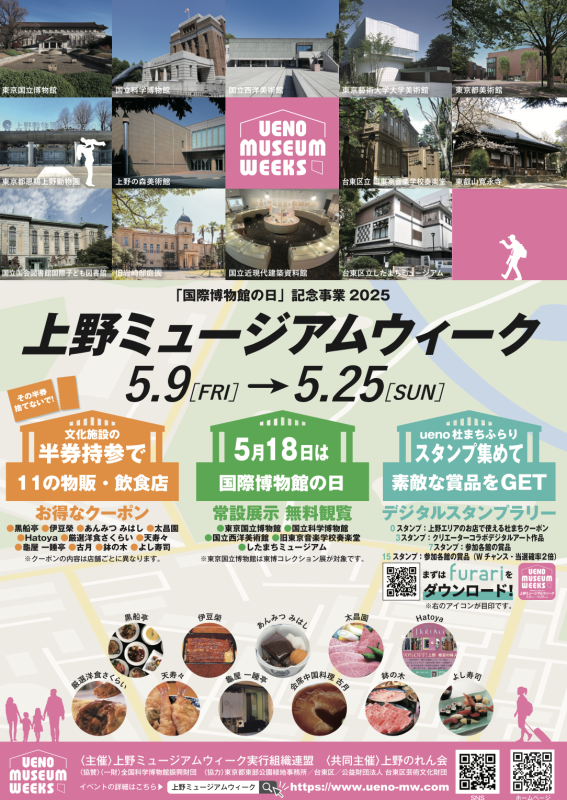
From Friday, May 9th to Sunday, May 25th, Ueno area will be hosting museums, popular spots, gourmet food, and more! It's a special week where you can get around the city while enjoying culture and art at a great price!
In the Ueno area, in commemoration of International Museum Day on May 18th, 13 facilities around Ueno Park, including museums, art galleries, and the zoo, will cooperate with Ueno Norenkai member stores to hold Ueno Museum Week. The popular digital stamp rally will continue this year, as it did last year, and the newly renovated new spot, Shitamachi Museum, will be added, making this a special week that is even more appealing. Combine this with the annual "Town Fun" coupon and enjoy this special time when the whole of Ueno becomes a theme park full of art.
As expected, the biggest attraction this time is the "free admission" that will be held on "International Museum Day" on May 18th. On that day, you can enjoy free admission to the permanent exhibitions of five museums: Tokyo National Museum, National Museum of Nature and Science, National Museum of Western Art, Former Tokyo Music School Concert Hall, and Shitamachi Museum (※Tokyo National Museum's Tokyo National Museum Collection Exhibition is included).
Another highlight is the digital stamp rally! There will be 15 stamp points in the Ueno area, from cultural facilities in Ueno Park to various spots in the Ueno shopping district!
Rally points include not only the cultural facilities within the park, but also spots within the city where you can experience art, such as CREATIVE HUB UENO “es” (Ueno Station), a gallery created by renovating the site of the former police box at Ueno Station, Lloyd Works Gallery, which brings together up-and-coming artists, Buzzchika (located in the basement of Shinobuzz Brewery Hitsuji Ice), which not only holds art exhibitions but also frequently hosts theater performances, and Room 101 (Hanazono Alley), where young art creators gather.
Please come and enjoy the atmosphere of Ueno, the city of art, during International Museum Day and the stamp rally.
The stamp rally rewards include a Morimachi coupon that can be used at gourmet and shopping stores in the Ueno area if you collect zero stamps, a digital art piece created in collaboration with creators if you collect three stamps, and the right to enter a lottery for prizes from participating cultural facilities if you collect seven stamps. If you visit 15 stamp locations, your chances of winning the prizes at the seven locations will double. Be sure to try to complete the rally!
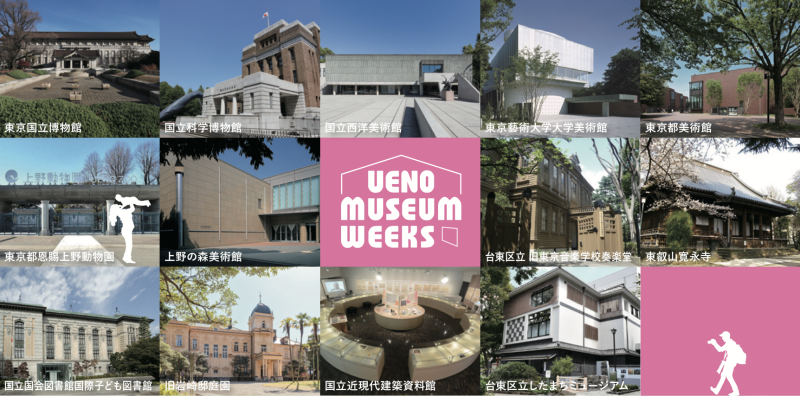
■Event Overview■
International Museum Day Commemorative Events 2025 Ueno Museum Week
Event period: Friday, May 9th, 2023 to Sunday, May 25th, 2023
Venues (participating facilities and organizations): Tokyo National Museum / National Museum of Nature and Science / National Museum of Western Art / The University Art Museum, Tokyo University of the Arts / Tokyo Metropolitan Art Museum / Ueno Zoological Gardens / The Ueno Royal Museum / Taito Ward Former Tokyo Music School Concert Hall / Former Iwasaki Gardens / National Museum of Modern Architecture / National Diet Library International Children's Library / Toeizan Kan'ei-ji Temple / Taito Ward Shitamachi Museum / Ueno Noren Association participating stores (in no particular order)
*There will be days when the museum is closed during the exhibition period.
Organized by: Ueno Museum Week Executive Organization Federation
Co-hosted by Ueno Norenkai
Sponsored by: National Museum of Nature and Science Foundation
Cooperation: Tokyo Metropolitan Government Eastern Park and Green Space Office, Taito City, Taito City Arts and Culture Foundation
Official site: http://www.ueno-mw.com/
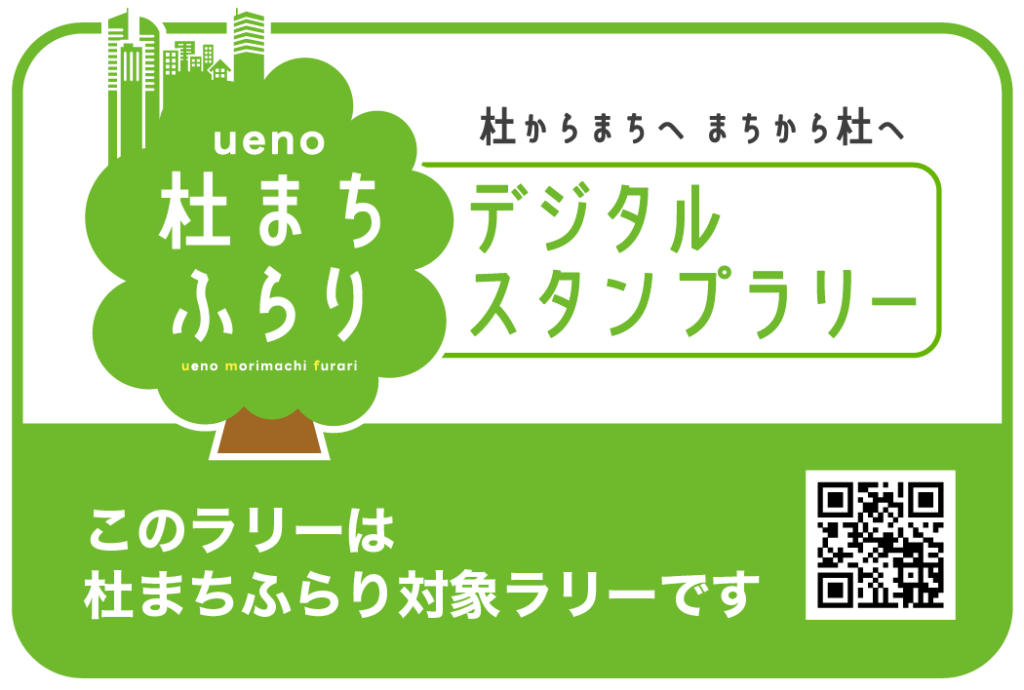
■[Ueno Morimachi Wandering] Ueno Museum Week 2025 ~ International Museum Day ~ ■
A digital stamp rally will be held from Friday, May 9th to Sunday, May 25th. Stamp points will appear at the participating facilities listed below.
[Checkpoint introduction]
1. Tokyo National Museum
2. National Museum of Nature and Science
3. National Museum of Western Art
4. National Diet Library International Library of Children's Literature
5. Tokyo Metropolitan Art Museum
6. The Ueno Royal Museum
7. Former Tokyo Music School Concert Hall
8. Tokyo University of the Arts University Art Museum
9. Toeizan Kan'eiji Temple, Main Hall
10. Former Iwasaki Residence Garden
11. Shitamachi Museum
12. Lloyd Works Gallery
13. CREATIVE HUB UENO “es” (JR Ueno Station)
14. Bazchika
15. Room 101 (Hanazono Alley)
[How to use]
Download the digital stamp rally app "furari" onto your smartphone. Go to the designated location of the participating facility and collect your stamp.
0 stamps: Morimachi coupons that can be used at restaurants and shopping establishments in the Ueno area
3 stamps…..Arts and Culture Association creator collaboration digital art work
7 stamps…..Prizes from participating museums
15 stamps…..Prizes from participating museums (2x chance of winning)
*Prizes will be shipped to the winners one to two months after the end of Museum Week.
★0 stamps
Morimachi coupons that can be used at restaurants and shopping establishments in the Ueno area
From eel, yakiniku, western food, and sweets to women's clothing, bags, and Sukajan jackets
Please take advantage of this special coupon that can be used widely.
List of stores and facilities where you can use digital coupons
https://ueno-morimachi.jp/coupon
★3 stamps
Creator collaboration digital art work
We will be distributing digital artworks created by five young artists from the Ueno area-based art support group, Geio Nurture Town Club.
★7 stamps
List of prizes from participating museums
Tokyo National Museum Award
・Tokyo National Museum Collection Exhibition invitation ticket + original ticket folder set (20 pairs, 40 tickets)
・URL: https://www.tnm.jp/
*National Museum of Nature and Science Award
・Common invitation ticket
Set of 2 tickets for 20 people. *Each person can enter the permanent exhibition at one of the facilities (Ueno Main Building, Tsukuba Botanical Garden, or Garden for Nature Study) once.
・URL: http://www.kahaku.go.jp
*National Museum of Western Art Award
– 40 free tickets for the special exhibition "Nationalmuseum of Sweden Drawing Collection: From the Renaissance to the Baroque" (20 pairs)
・URL: https://www.nmwa.go.jp/
〇Tokyo University of the Arts University Art Museum Award
・University Art Museum original postcard 20 people (20 people)
・URL: https://museum.geidai.ac.jp/
Tokyo Metropolitan Art Museum
・20 pairs of invitation tickets (40 people) to the exhibition "The Joy of Making: DIY for Living"
・URL: https://www.tobikan.jp/
Ueno Royal Museum Award
・20 postcards (for 20 winners)
・URL: http://www.ueno-mori.org/
* Former Tokyo Music School Concert Hall Award
・20 pairs of "2 invitation tickets + clear file" (20 people)
・URL: https://www.taitogeibun.net/sougakudou/
Toeizan Kan'eiji Temple Award
・Special not-for-sale stamp book (1 per person): 10 winners
・URL: http://kaneiji.jp/
* Former Iwasaki Residence Garden Award
・20 sets of Kyu-Iwasaki-tei Garden original mini clear file + original postcard (20 winners)
・URL: https://www.tokyo-park.or.jp/park/kyu-iwasaki-tei/
〇National Museum of Modern and Contemporary Architecture
20 sets of 4 postcards of the collection's drawings, etc. (20 winners)
・URL: https://nama.bunka.go.jp/
Shitamachi Museum
・2 invitation tickets + 3 postcards for 20 pairs (20 winners)
・URL: https://www.taitogeibun.net/shitamachi/
Ueno Norenkai
・Invitation tickets for the special exhibition "Tsutaya Juzaburo: A Turbulent Figure in the Content Business" (20 pairs, 20 winners)
・URL: https://uenonorenkai.com/zasshi_ueno.html
[Checkpoint introduction]

roidworksgallery | roidworksgallery
Exhibition title: Astral Projection
Artists: Shunsuke Saiki, Yuka Numata, Keita Motooka
Dates: Saturday, May 17, 2025 – Sunday, May 25, 2025 *Open daily
Business hours: 12:00-19:00 (18:00 on the last day)
Venue: roidworksgallery
〒113-0034 4-6-12 Yushima, Bunkyo-ku, Tokyo, Yushima High Town B Building 1F
TEL: 03-3812-4712
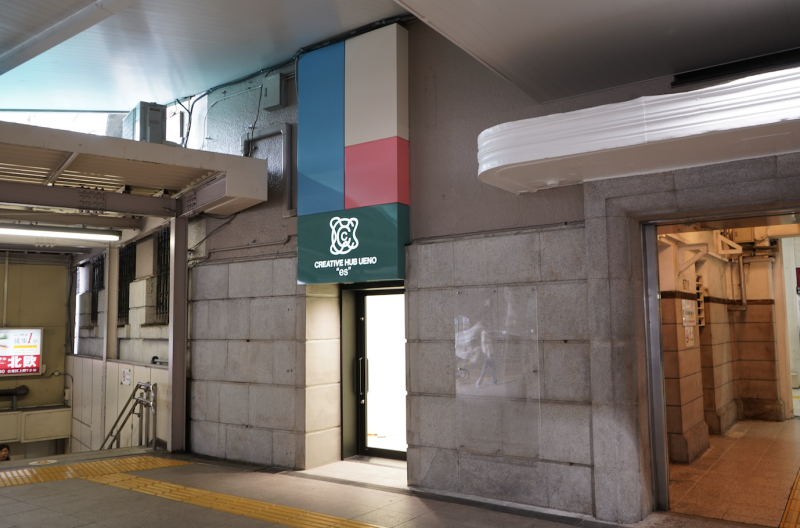
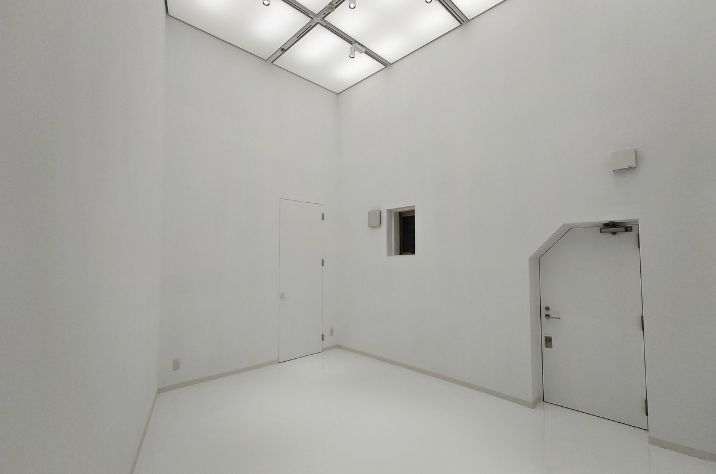
CREATIVE HUB UENO “es”
Address: 7-1-1 Ueno, Taito-ku, Tokyo (near the Asakusa exit of Ueno Station)
Opening hours: 11:00-19:00 (last entrance 18:45)
Closed on Mondays (or the following day if Monday is a public holiday)
*The venue will be closed from May 9th to 19th due to maintenance.
Exhibition title: Tomohiro Kubota Ogisu solo exhibition "5/?R"
Exhibition Profile
This exhibition reconstructs Kubota Ogisu's 2017 graduation project, Temporary Discard Catalog, as a practice of public and private collection and value standards, raising questions about how artists' products are left behind and the ambiguity of their assets and liabilities.
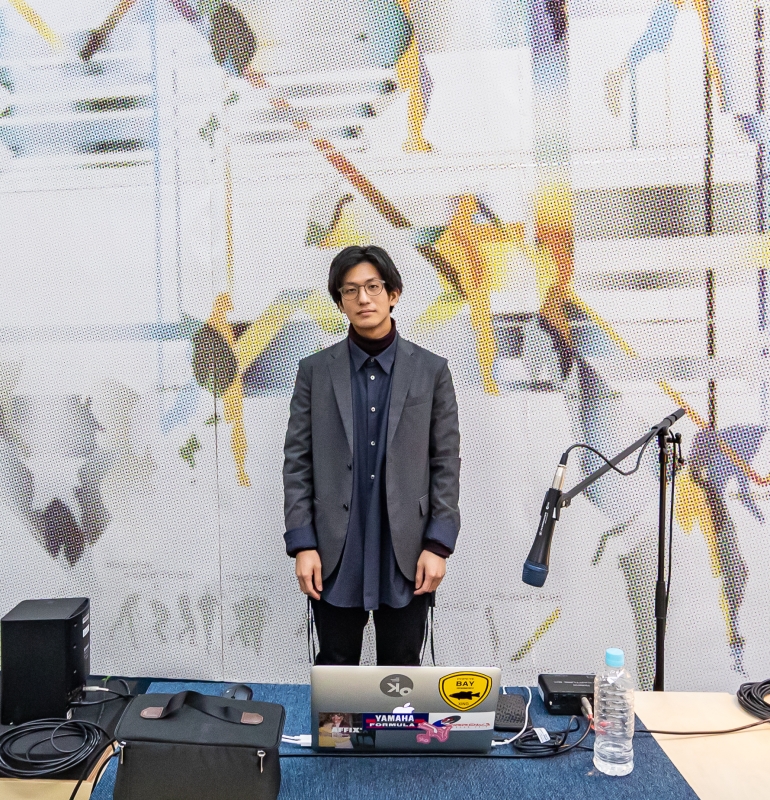
Tomohiro Kubota Oguiss
In 2020, he graduated from the Tokyo University of the Arts Graduate School of Fine Arts, majoring in printmaking. He is currently enrolled in the doctoral program at the same university. He focuses on the “debt” aspect of cultural assets, and often creates works that do not involve physical production, through the temporary movement of objects, contracts, and acts of assuming the debts of others. His work aims to critically consider how art interacts with institutions and the economy through the very processes of ownership, management, movement, and preservation. In his recent works, he takes personal experiences and real events as his starting point to explore the relationship between ownership and responsibility of objects in communities, and the debt that extends from individuals to organizations and even institutions.
Yamanote Line Museum Ueno Station Park Exit (Introduction of related facilities)
JR Ueno Station Park Ticket Gate Connecting Passage From the first train to the last train
An exhibition space decorates the walls inside the Ueno Station Park ticket gates, which connect to cultural facilities such as art galleries and museums.
Part of the wall is a space for live painting, so you may be able to see artists painting live when the works are being replaced.

Gaku Igarashi
She spent her early childhood in Australia, working as a nursery teacher while also creating art. After returning to Japan, she began her career as an artist in earnest.
The company collaborates with various companies and brands, focusing on its original characters, the dwarf "ELF" and the human-like "HAPPY PEOPLE."
Her paintings, which are warm, gentle and vivid in color, are popular among a wide range of people.
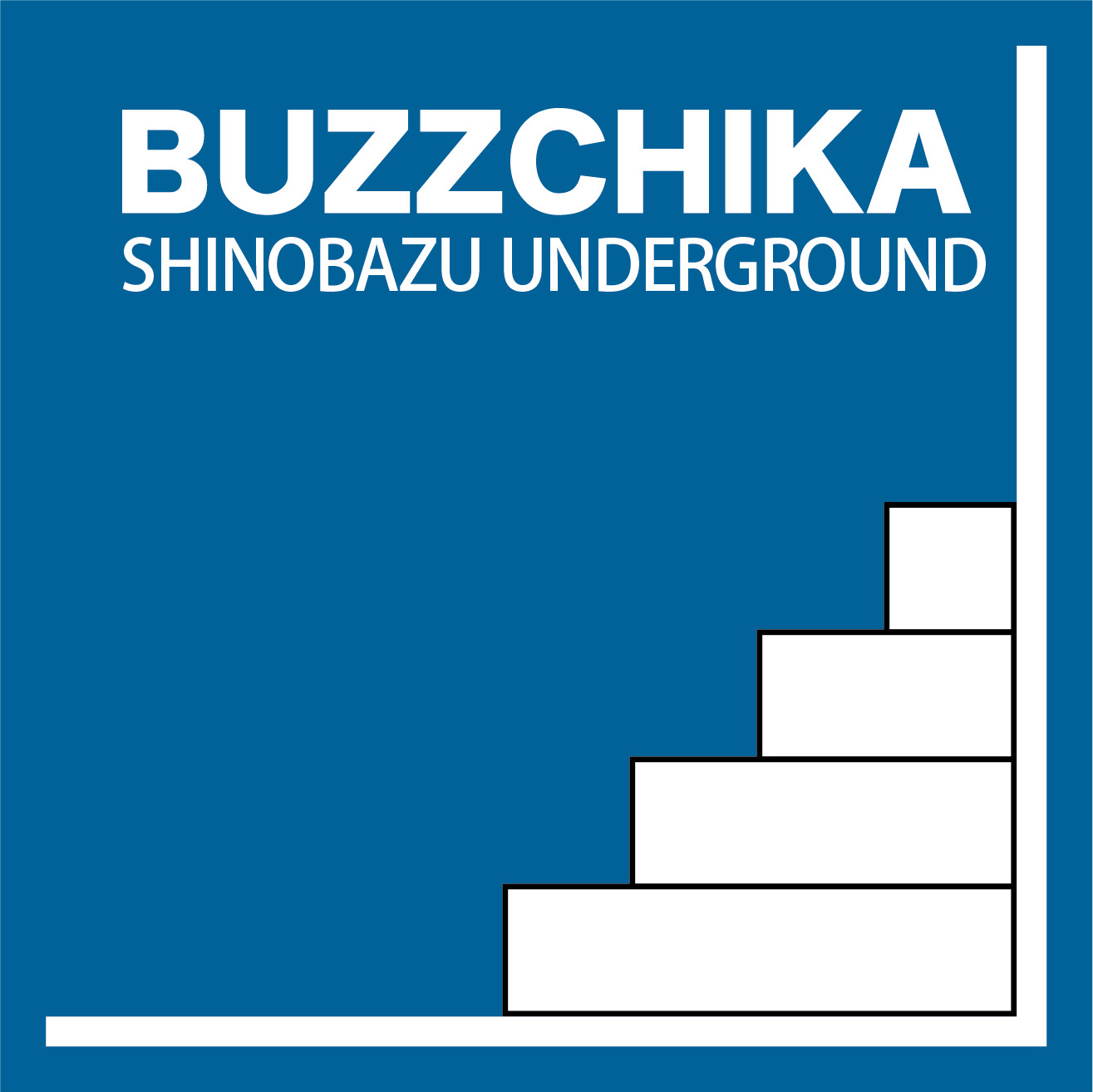
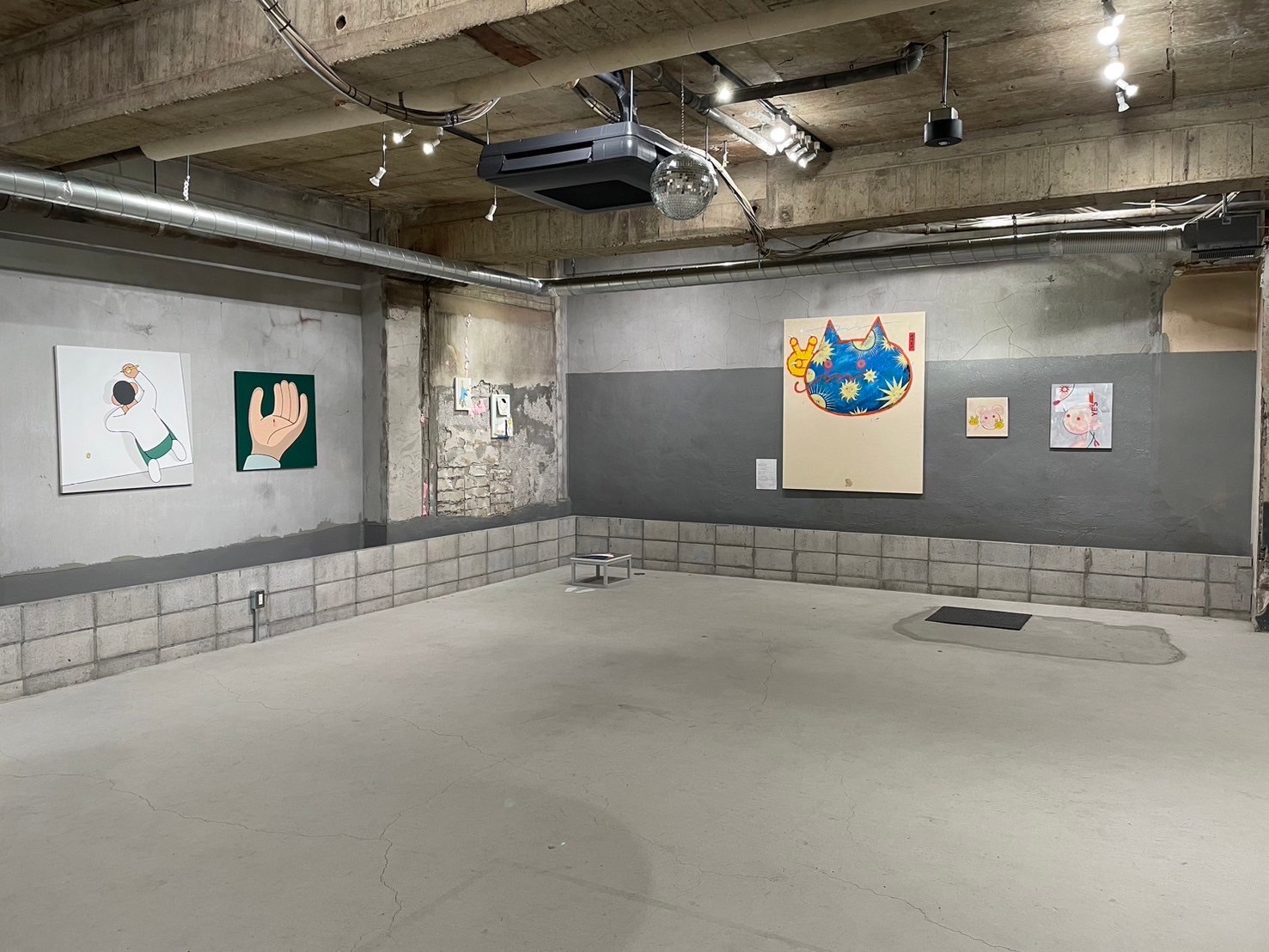
Bazuchika
[Bazchika Exhibition Information]
Exhibition title: FIND IT!!! (Exhibited during Ueno Museum Week 2025)
Date: Friday, May 23, 2025 – Sunday, May 25, 2025
Opening hours 14:00-20:00
Location: Buzzchika 2-10-7 Ueno, Taito-ku, Tokyo 110-0005
Shinobaz Brewery Hitsuji Ice Basement
Artist information: Iida Megumi, Madoka Goto, Hasama, Ten Momose, Itsuki Yanagisawa

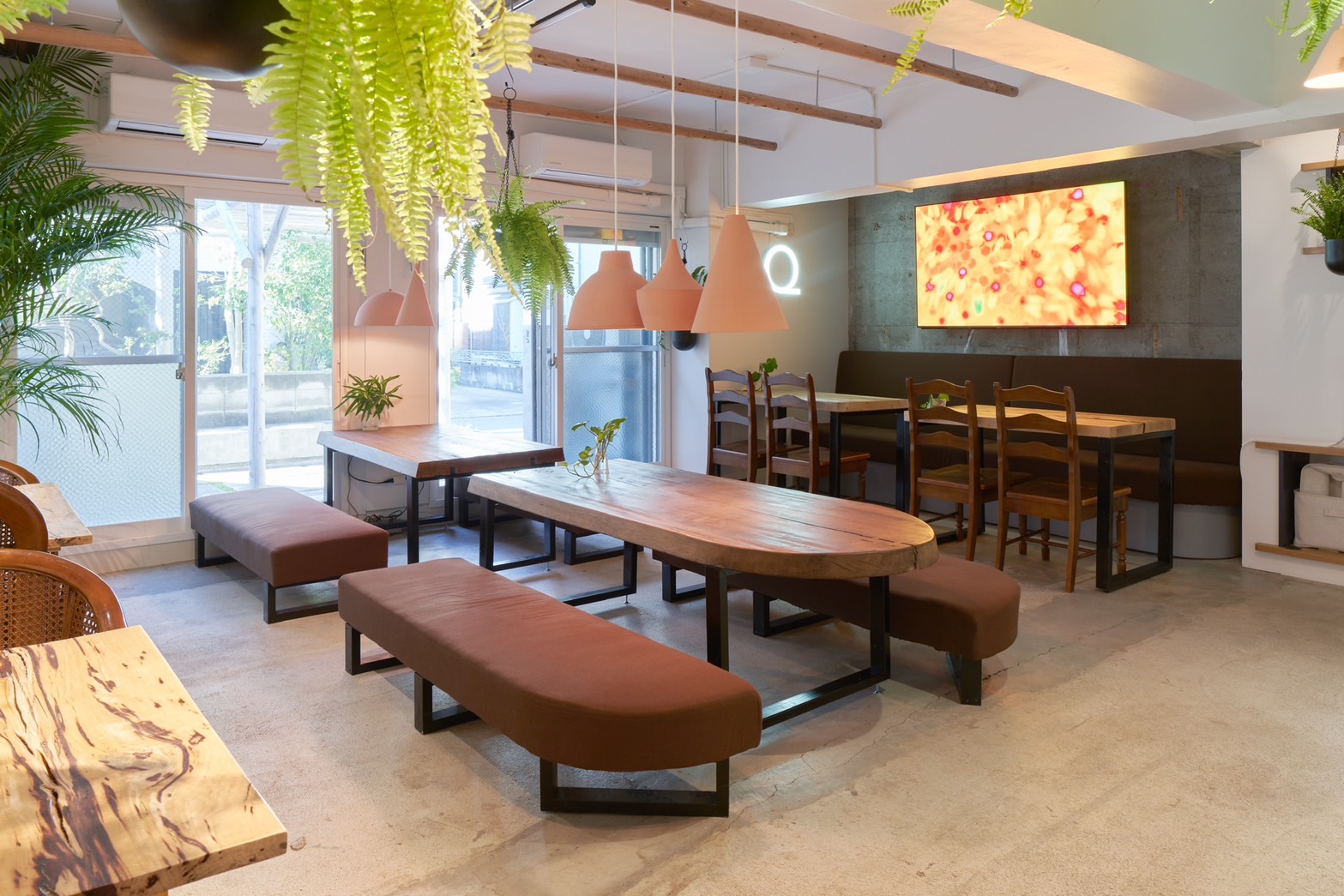
Room 101
Address: 101 Hanazono Alley, 3-3-9 Ikenohata, Taito-ku, Tokyo
Exhibition title: "About Trees"
Exhibition Profile
Period: End of April to end of July 2025 *Closed on Tuesdays and Wednesdays
Artist Information Shuji Yamamoto
Born in Tokyo in 1979. Graduated from Tama Art University in 2005. With a background as a gardener, he travels around Japan and conducts fieldwork on the theme of "the relationship between nature and humans," creating a variety of works including two-dimensional works and installations.
Art-Cultivating Town Club Creator Collaboration Digital Art Artist Introduction
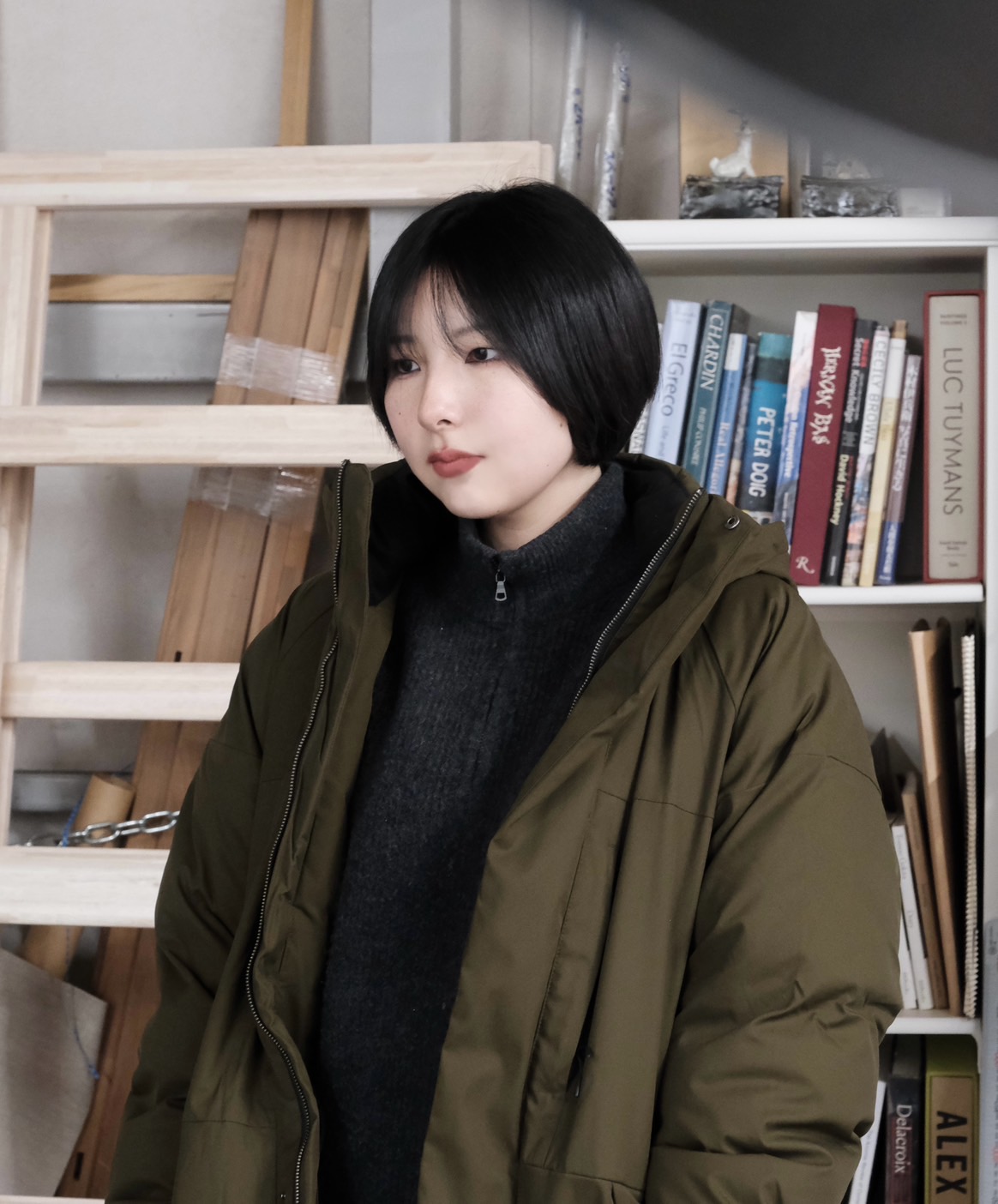
Good Damage Gummy
Born in 2000 in Chiba Prefecture
Biography
March 2024: Graduated from Musashino Art University, Department of Oil Painting
April 2024: Enrolled in the Master's program at the Musashino Art University Graduate School of Art and Design. Currently enrolled in the Master's program.
January 2024 2023 Musashino Art University Graduation Exhibition/Musashino Art University Takanodai Campus
November 2024 Group Exhibition:EPIC PAINTERS Vol:14@THE blank GALLERY,Tokyo
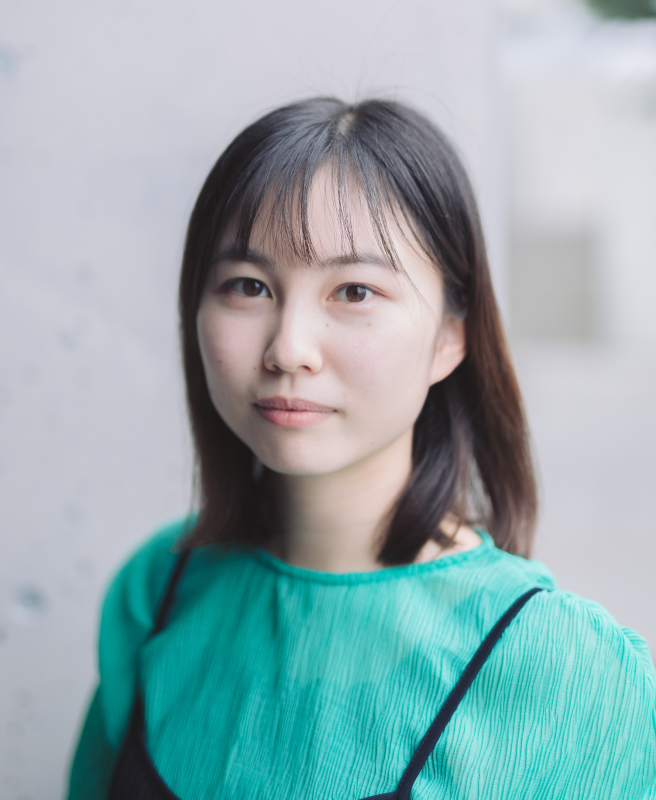
Madoka Goto
Taking inspiration from moments in daily life that catch his eye, he creates Japanese paintings by reconstructing the impressions he receives at that moment and place using colors, patterns and shapes.
Biography
Born in Hokkaido in 2000
2022 Graduated from Musashino Art University, Faculty of Art and Design, Department of Japanese Painting
2025 Graduated from Tokyo University of the Arts Graduate School of Fine Arts, Department of Design
2020 20th Sato Taisei Prize Public Art Exhibition Itabashi Ward Mayor Award
Selected for the 39th Ueno Mori Art Award Exhibition in 2021
2022 Musashino Art University Graduation Exhibition Excellence Award
2022: Admission to the Master's Program in Design at the Graduate School of Fine Arts, Tokyo University of the Arts
2022: 9th batch of recipients accepted into the Kamiyama Foundation Arts Support Program
2022 49th Soga Exhibition 2022 Selected
2022 FACE 2023 Selected
2024 11th Go Sakura Museum of Art Ouka Award Exhibition Encouragement Award
2024 Solo Exhibition "My Dear" Etsuko Shibata Gallery
2024 Toyohashi Triennale Hoshino Shingo Award Exhibition Selected

Hasama
An artist who fuses graffiti and calligraphy to reinterpret the beauty of traditional calligraphy and the freedom of street art in a contemporary context, carving out poetic rhythms and power in urban spaces and creating a new dialogue between vision and words.
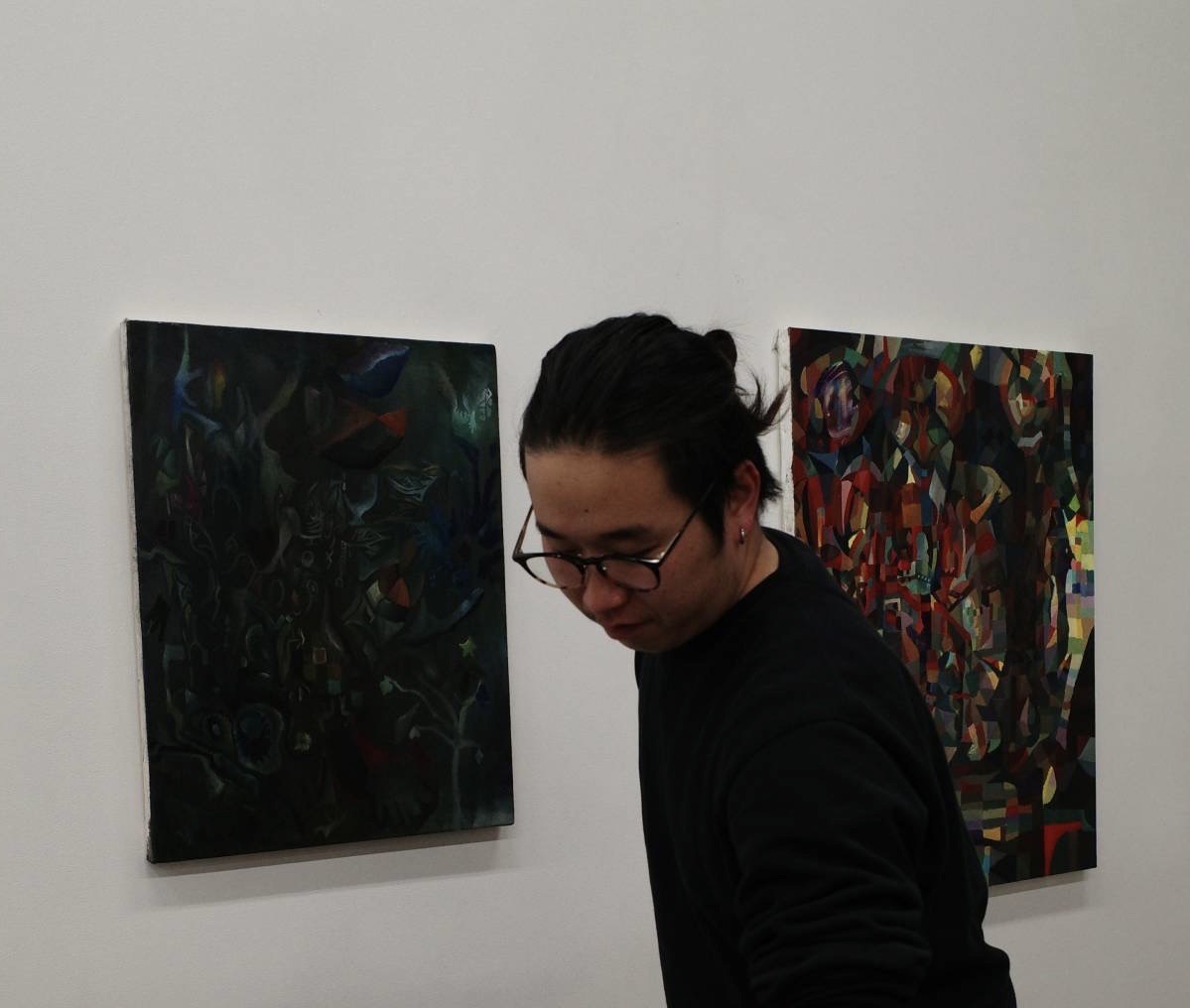
Momose Heaven
2002 Born in Nagano Prefecture
2020 Musashino Art University, School of Art and Design, Department of Oil Painting, Oil Painting Major Admission
Selected for the 72nd Chubi Exhibition
2021 Group Exhibition "Yoshiki no Sato" in Hida City, Gifu Prefecture
Group exhibition at Gallery JUILLET, Suginami-ku, Tokyo
Tachikawa Tachihi LaLaport Glass Paint
2024 47th Tokyo Five Art Universities Joint Graduation Exhibition, The National Art Center, Tokyo
Graduated from Musashino Art University, Faculty of Art and Design, Department of Oil Painting
Musashino Art University Graduate School of Art and Design, Oil Painting Course

Itsuki Yanagisawa
Biography
Born in Kawagoe, Saitama Prefecture in December 2001
2024.3 Graduated from Musashino Art University, Faculty of Art and Design, Department of Oil Painting
Exhibition history
2022.10 "The 48th Tokyo Art Festival" Tokyo Metropolitan Art Museum
2024.2 "Daigeikukai Exhibition" by the Art and Culture Association, Matsuzakaya Ueno Store, 7th floor Art Gallery
2024.2 Hakkendou "Young Artists Exhibition "Good Buds, Swelling Buds" in TOKYO2024" Matsuzakaya Ueno Store
2024.9 Hakkendou "KANZEN" Isetan Shinjuku store

■Don't throw away that ticket stub! Coupon service■
During the event period, you can receive free services by presenting your ticket stub from each museum at the stores listed below. For details on the services, please see the Ueno Museum Week official website.
[Participating stores]
Yoshizushi Ueno Branch
Anmitsu Mihashi
Izuei (eel restaurant)
Hatoya (Women's clothing)
Tenju (Tempura)
Kaiseki Chinese cuisine Ueno Ikenohata Kogetsu
Western food Kurofunetei
Kameya Issuitei (grilled eel and seasonal dishes)
Yakiniku Taishoen
Sakurai carefully selected western cuisine
Shabu-shabu Potted tree
[How to use]
Present your ticket stub for a cultural facility in Ueno Park
QR codes on smartphones and printed copies at convenience stores and ticket booths are also accepted.
* One ticket per person
* Cannot be used in conjunction with coupon services
■International Museum Day Presents■
[Tokyo University of the Arts University Art Museum]
Free museum original goods
●Time: May 18th (Sun) 10:00~
●Venue: Entrance Hall of the University Museum, Tokyo University of the Arts
● Target: First 50 visitors to the exhibition
■What is International Museum Day? ■
"International Museum Day" is a museum commemoration day established by the International Council of Museums (ICOM) in 1977. Commemorative events are held at museums around the world on and around May 18th with the aim of familiarizing many people with museums and raising awareness of the role of museums. Ueno, which is rare even on an international level in terms of the large number of cultural facilities such as museums and art galleries gathered there, holds various commemorative events every year around "International Museum Day" as "Ueno Museum Week", held by cultural facilities and the Ueno Noren Association.
■Ueno Norenkai■
Ueno, the cloud of flowers, is the representative entertainment district of this part of Edo. It is the source of art and culture of this part of the Meiji period. The Ueno Noren Association is a federation of about 100 famous stores in Ueno. Since its founding in 1959 (Showa 34), it has been publishing the town magazine "Ueno" every month with the aim of rediscovering the cultural traditions of this area. This is the 785th issue (as of May 2025).
■ Flyer ■


◎Inquiries
Ueno Museum Week Executive Committee Secretariat
TEL 03-3833-8016 FAX 03-3839-2765 (Ueno Norenkai, weekdays 10:00-17:00)
From the Ueno Norenkai press release
Article provided by: Kokosil Ueno
See other exhibition information






